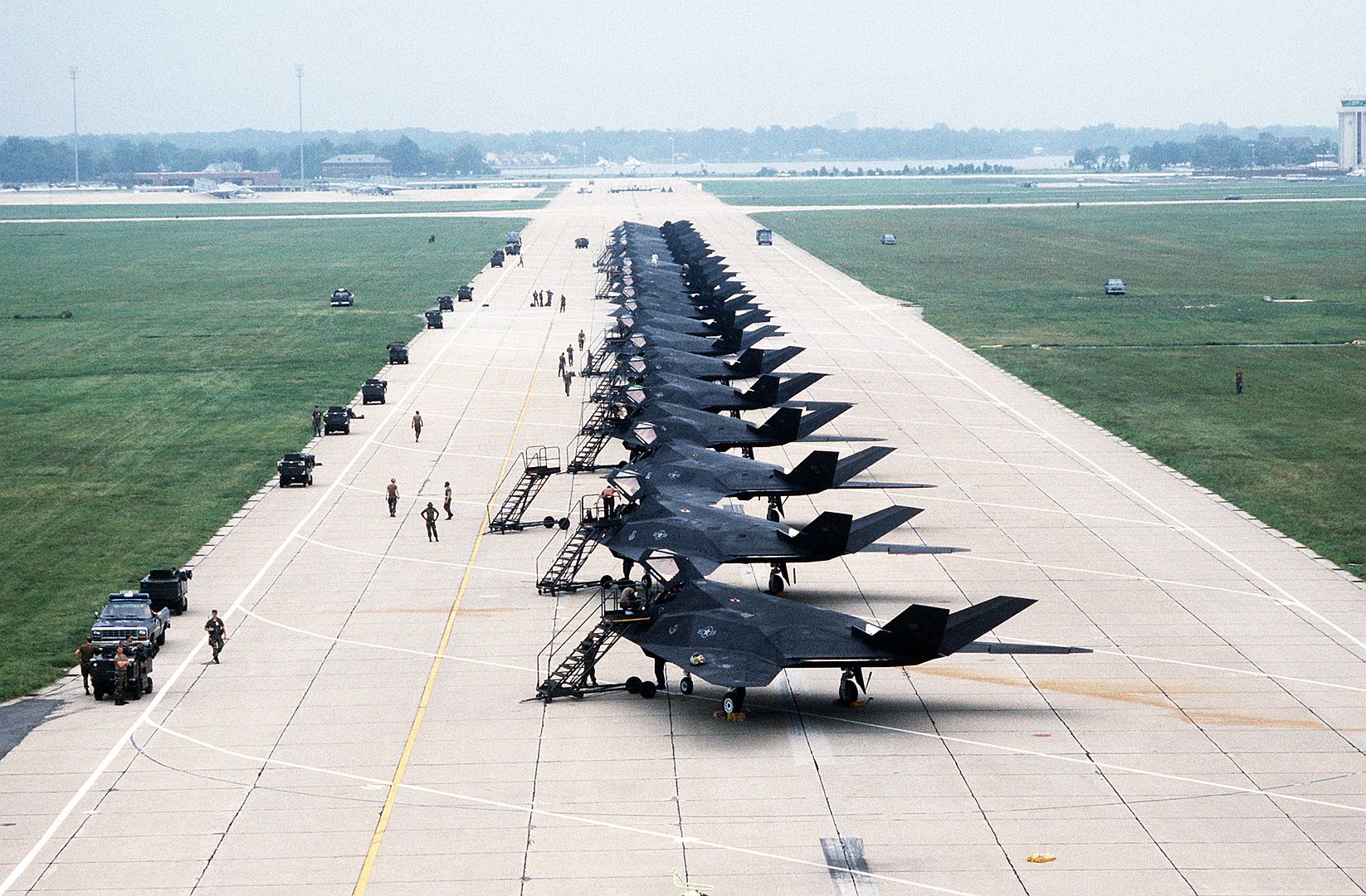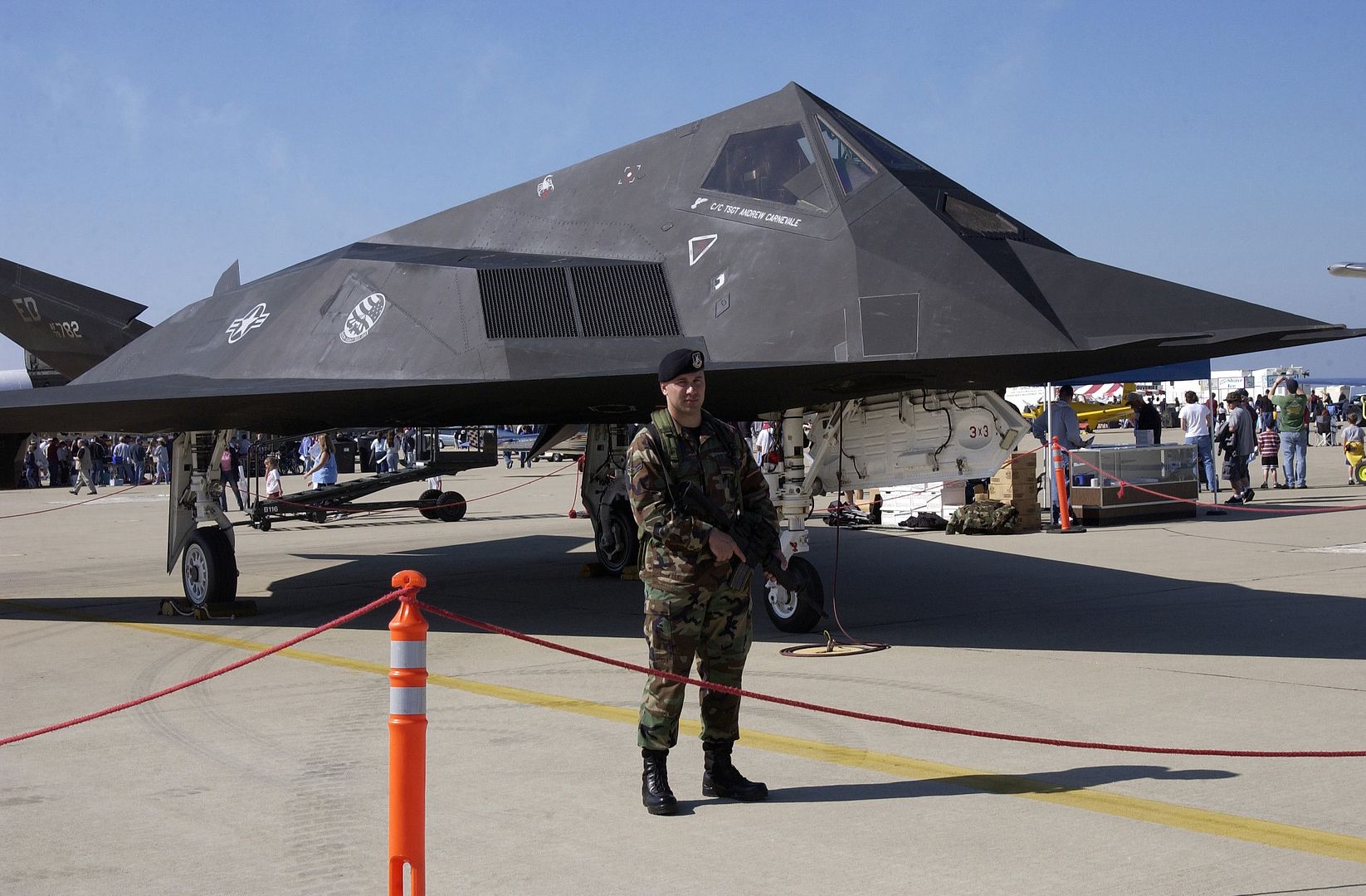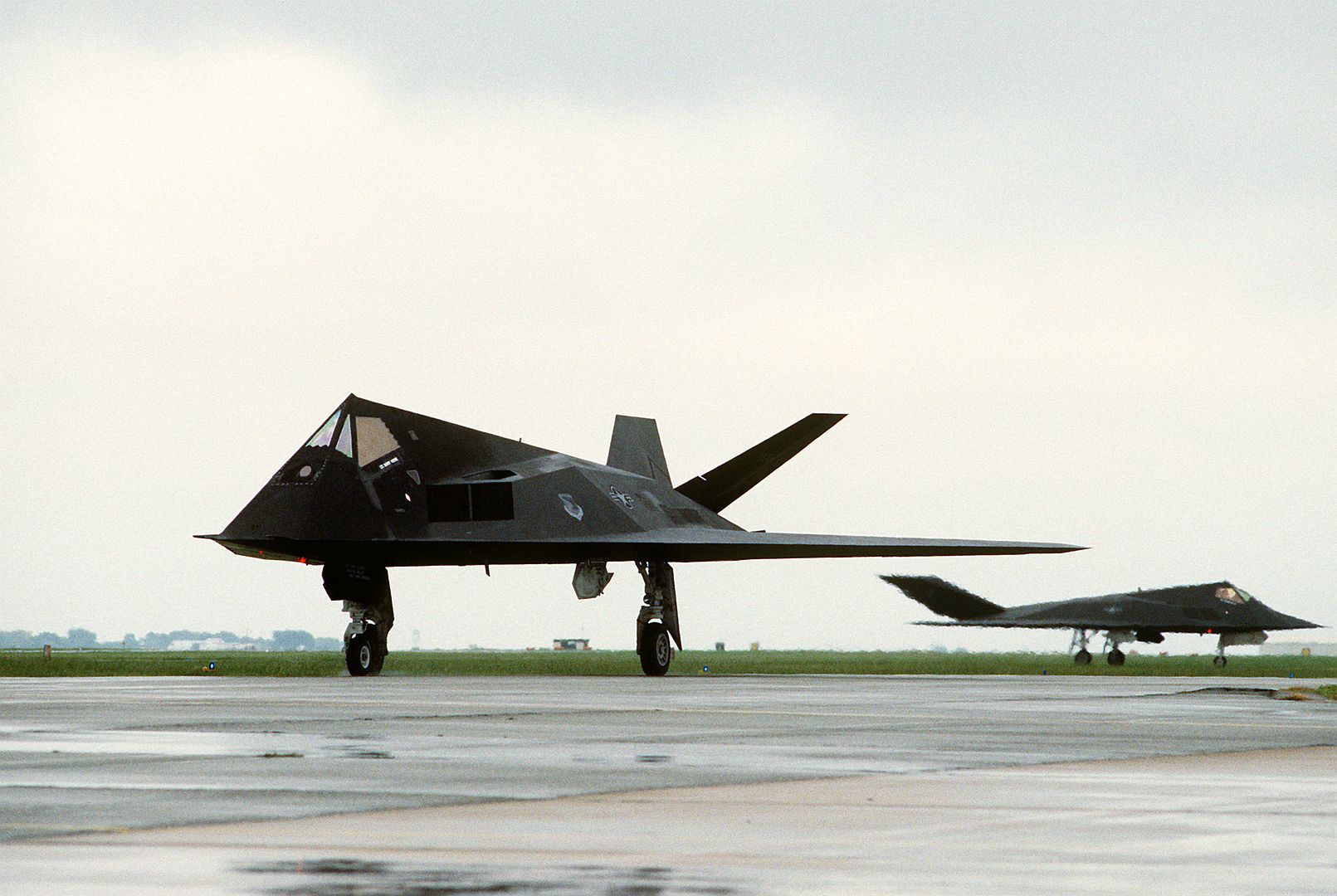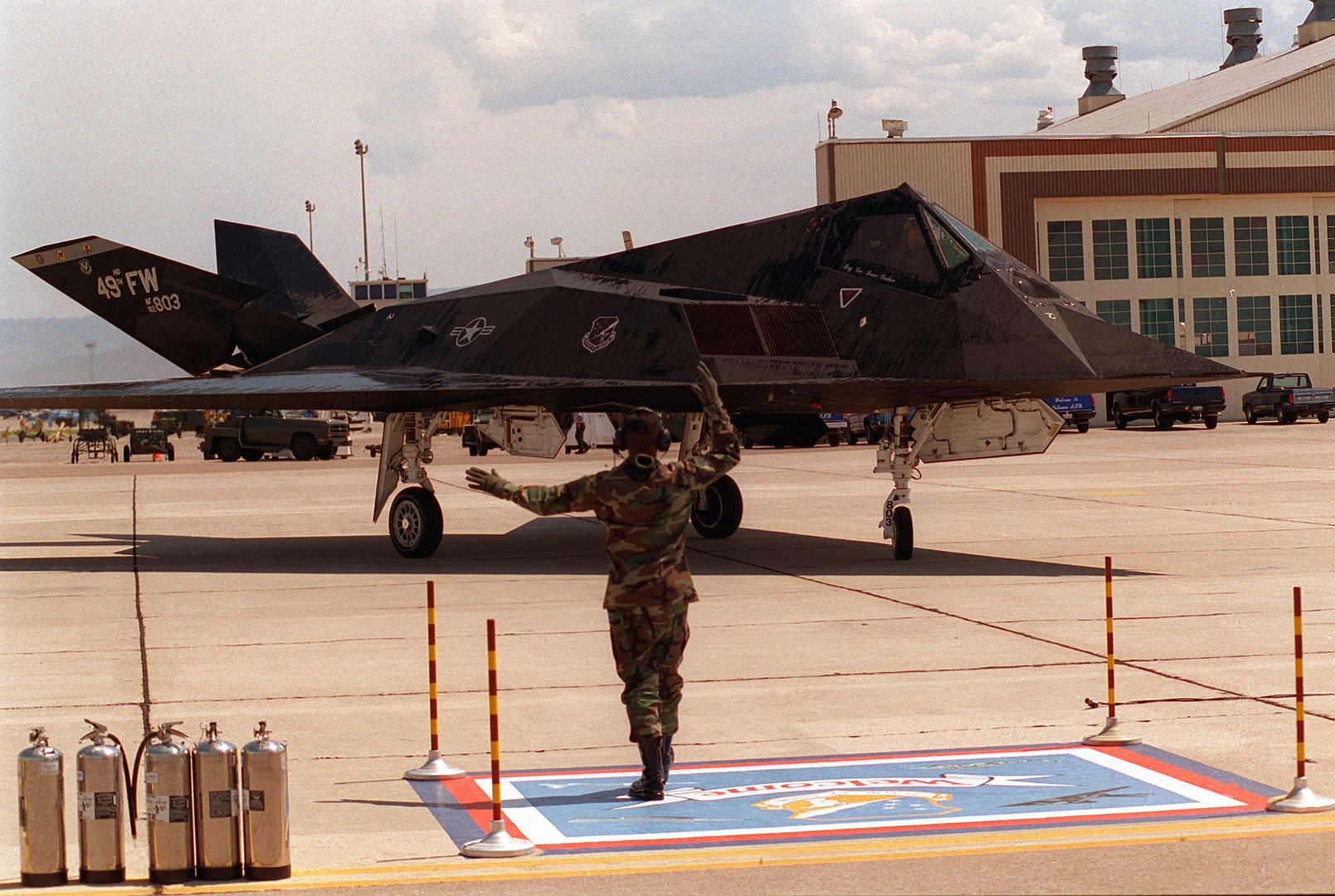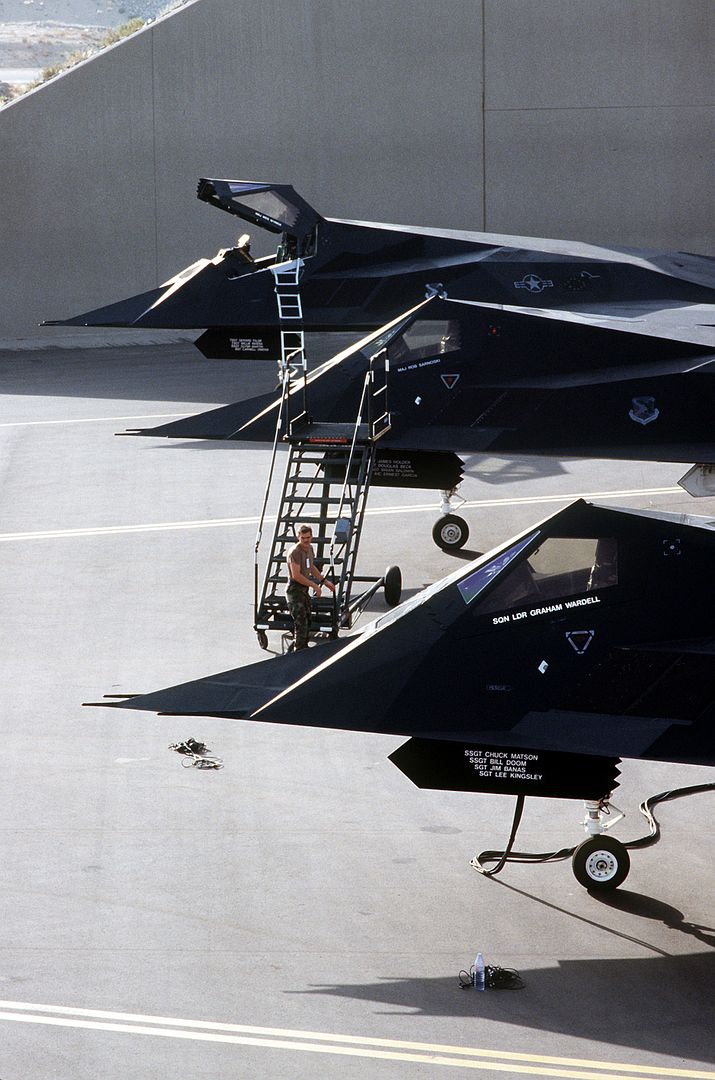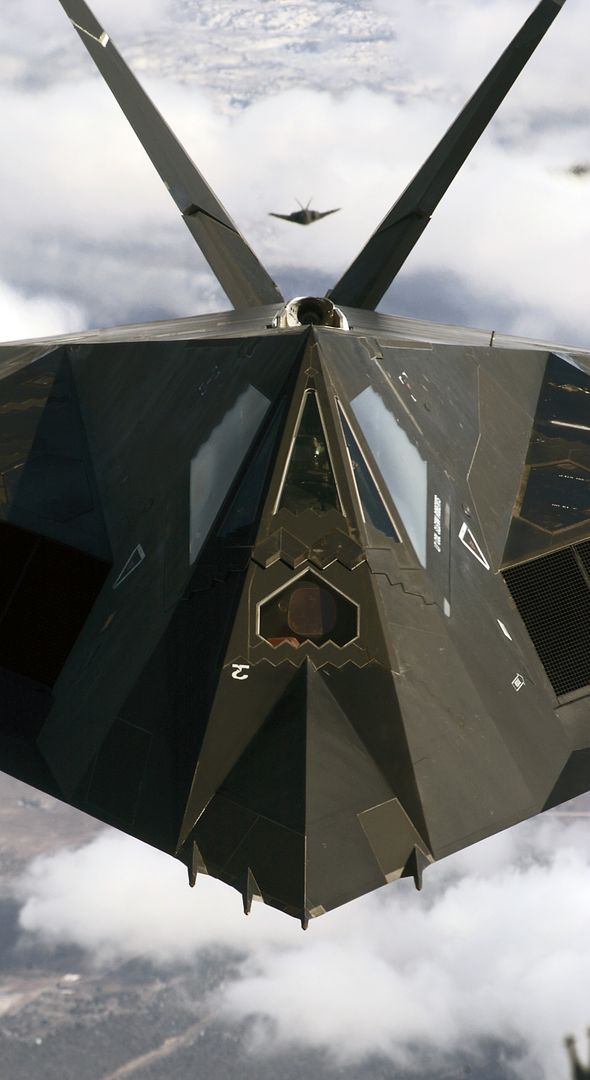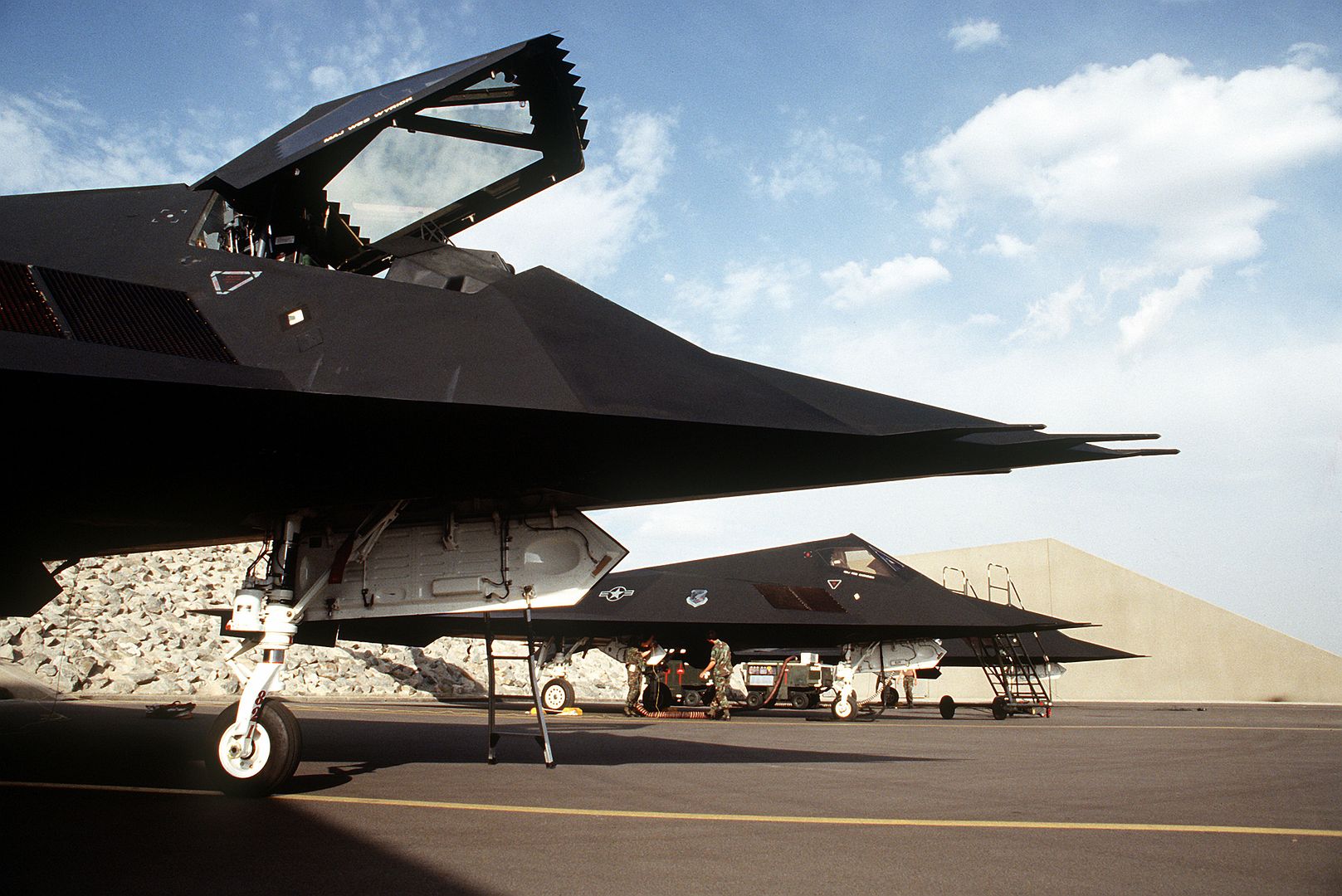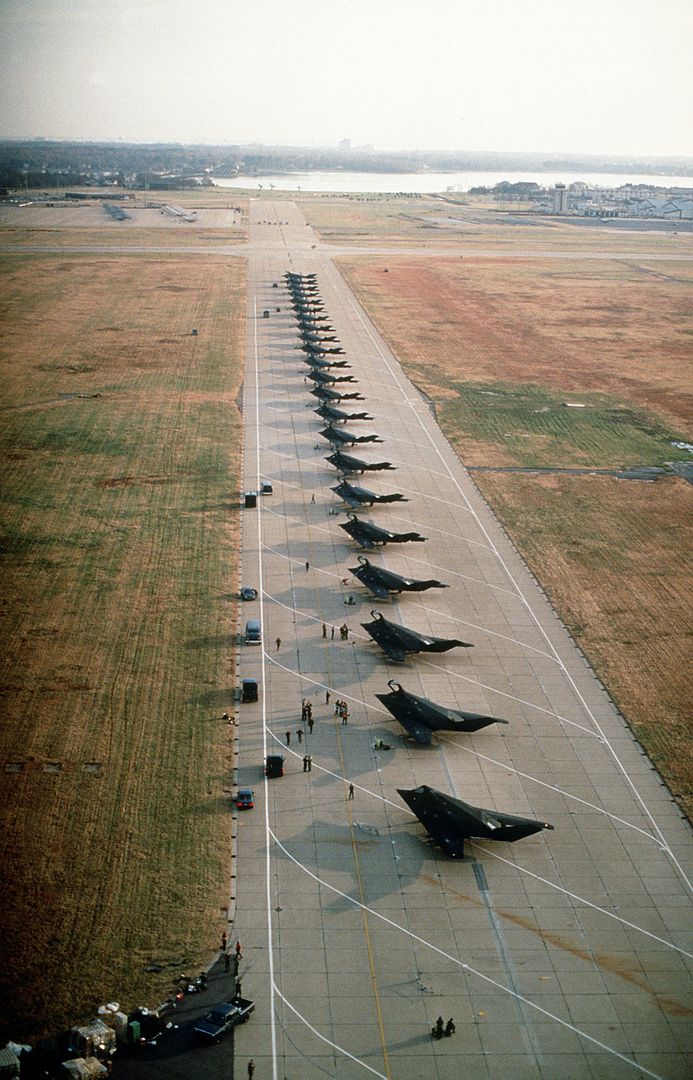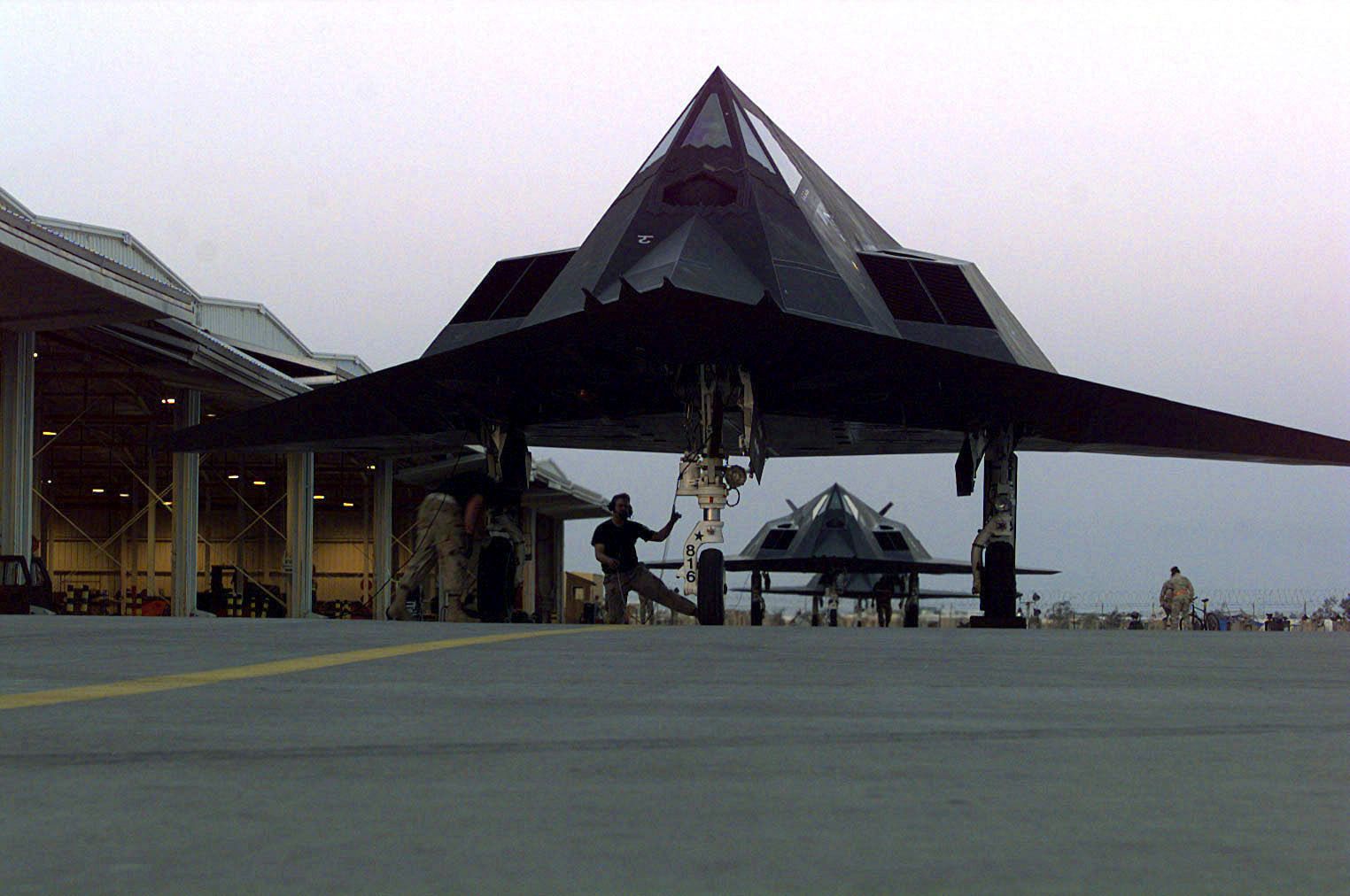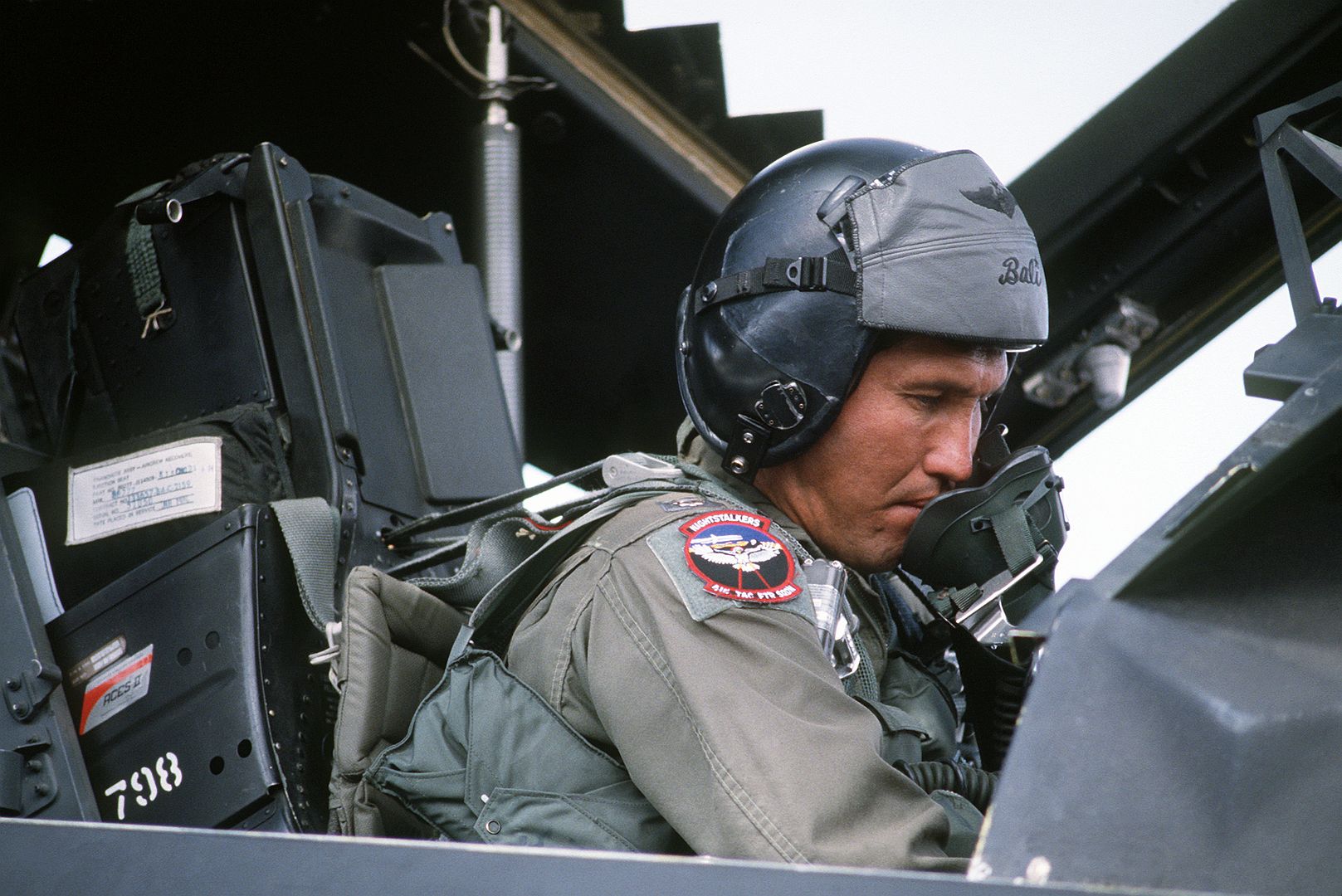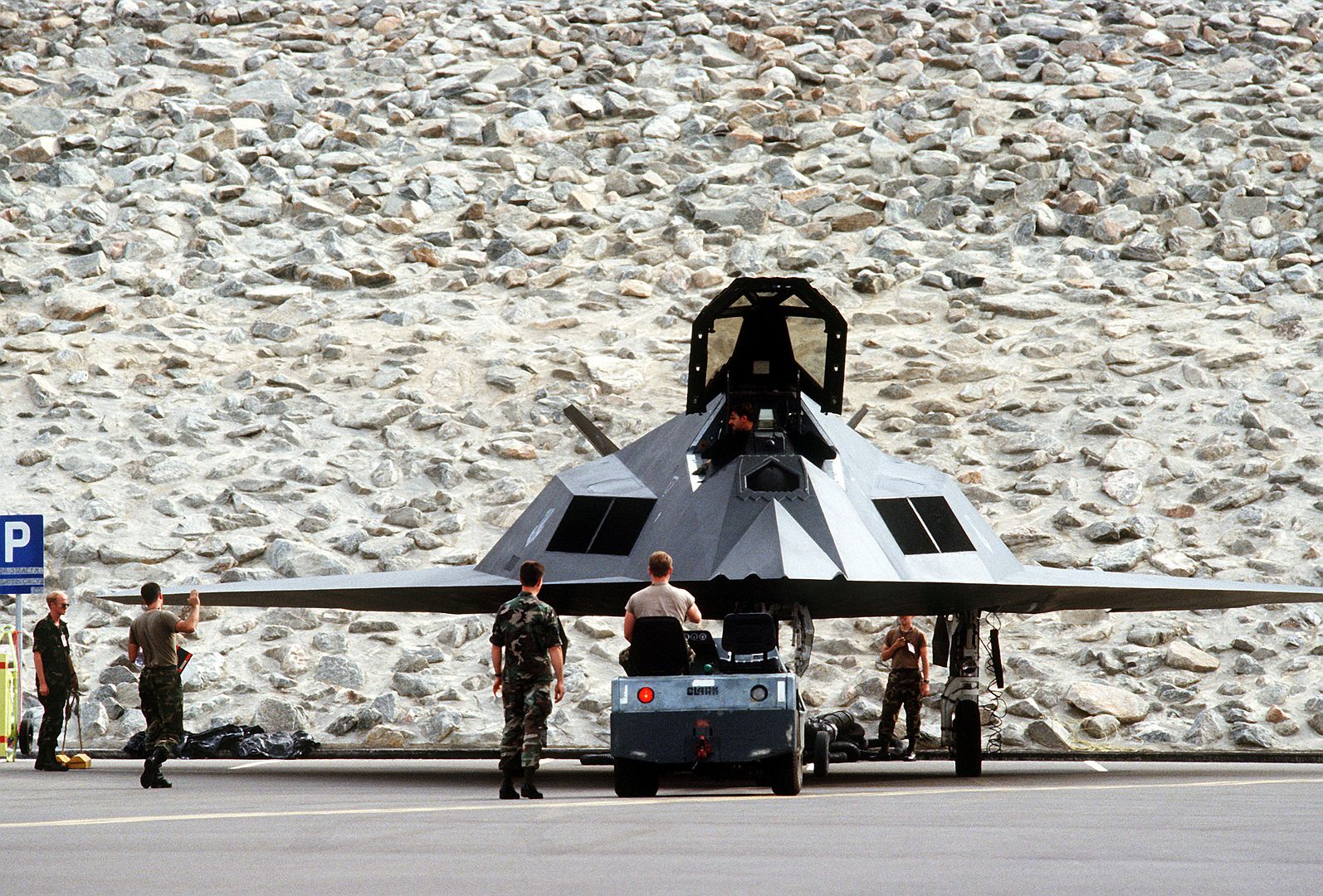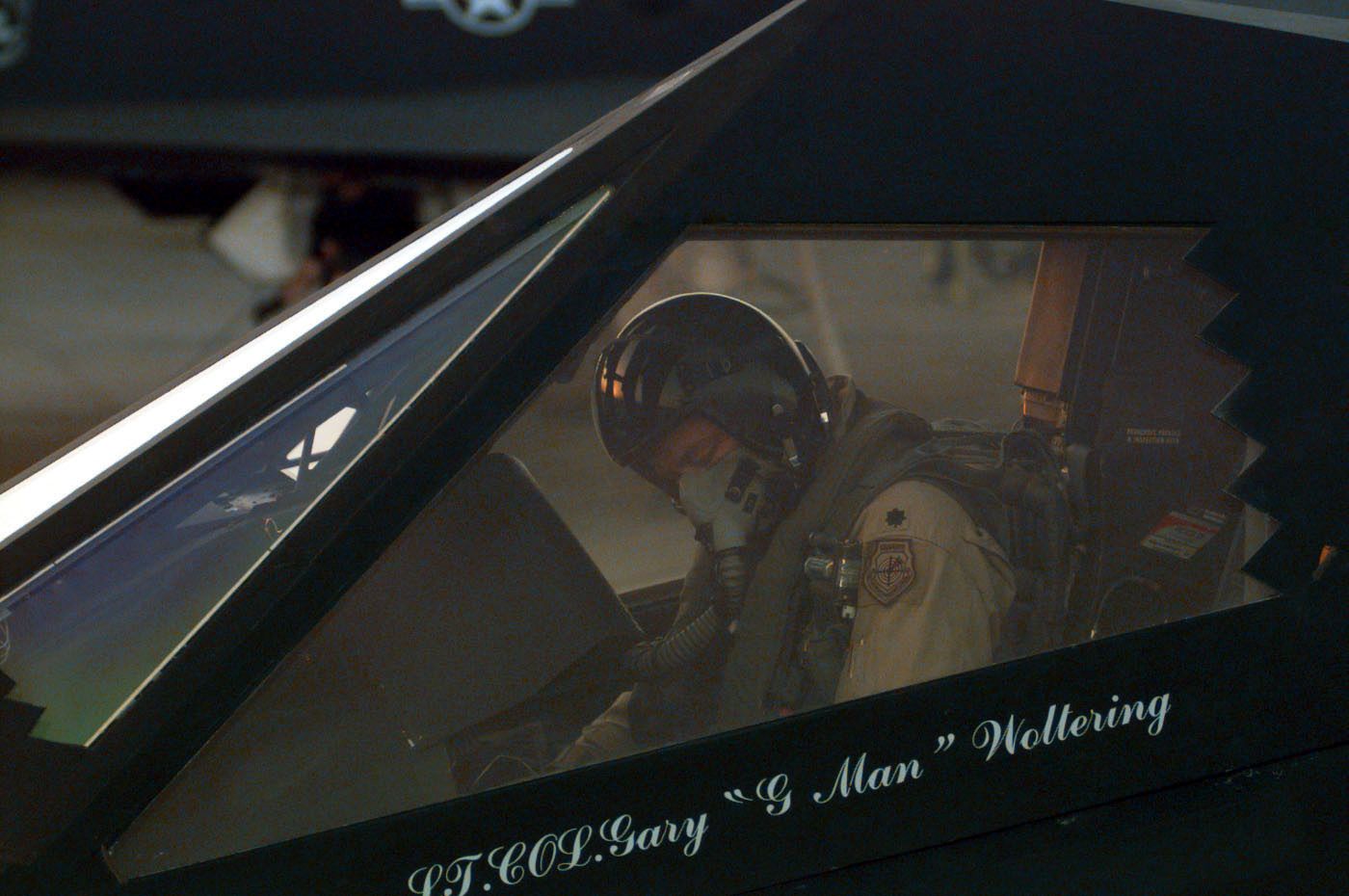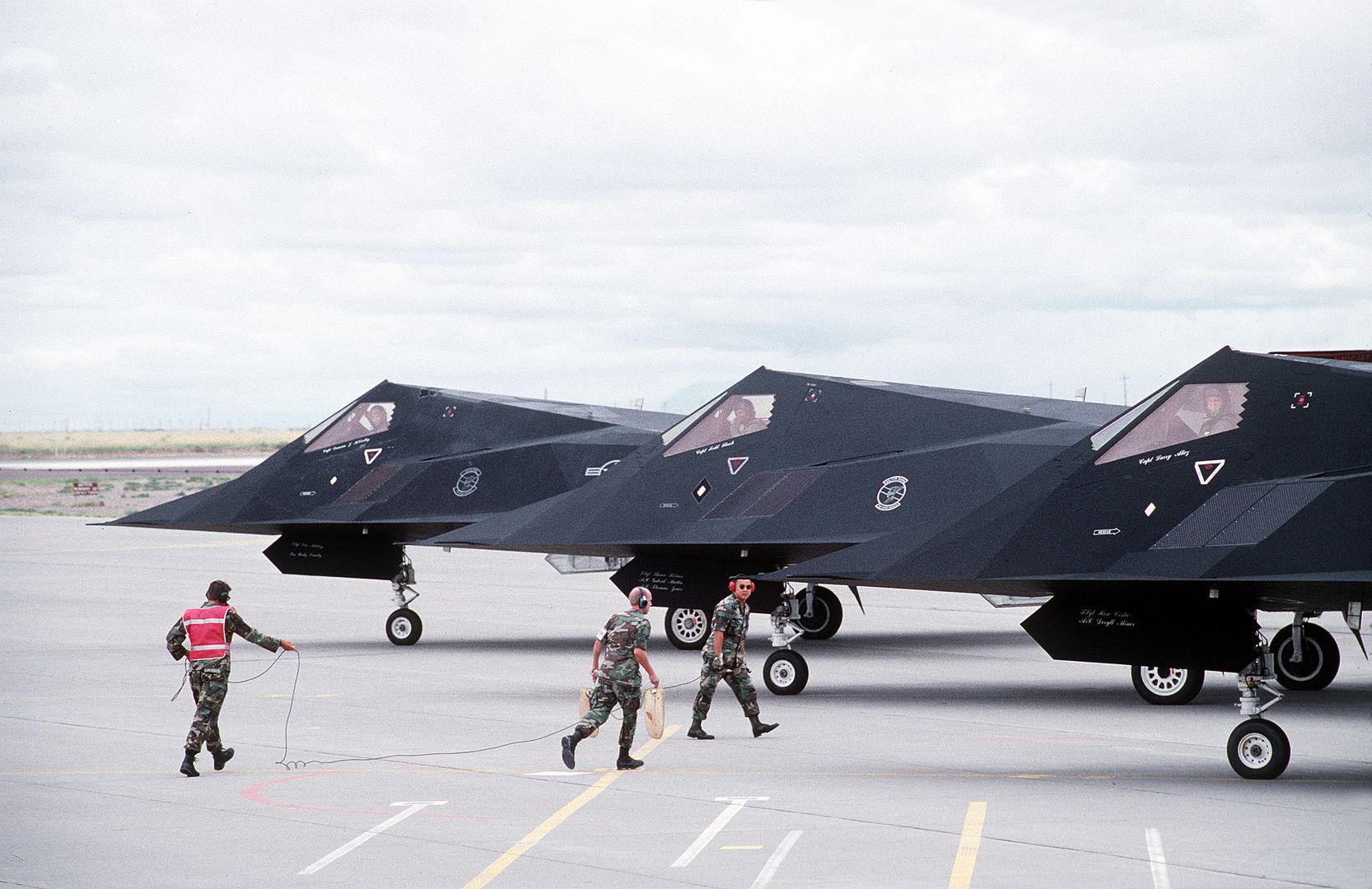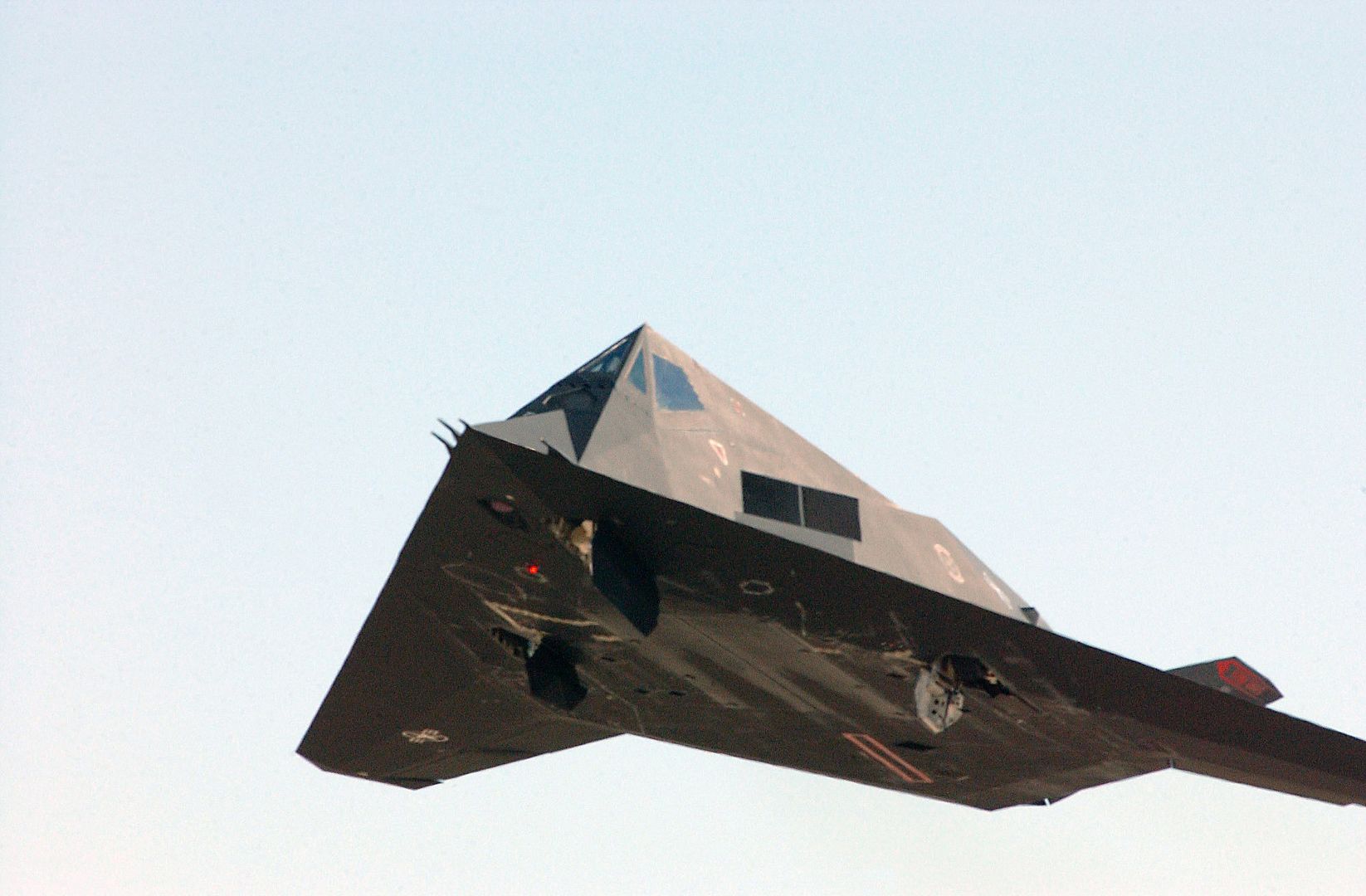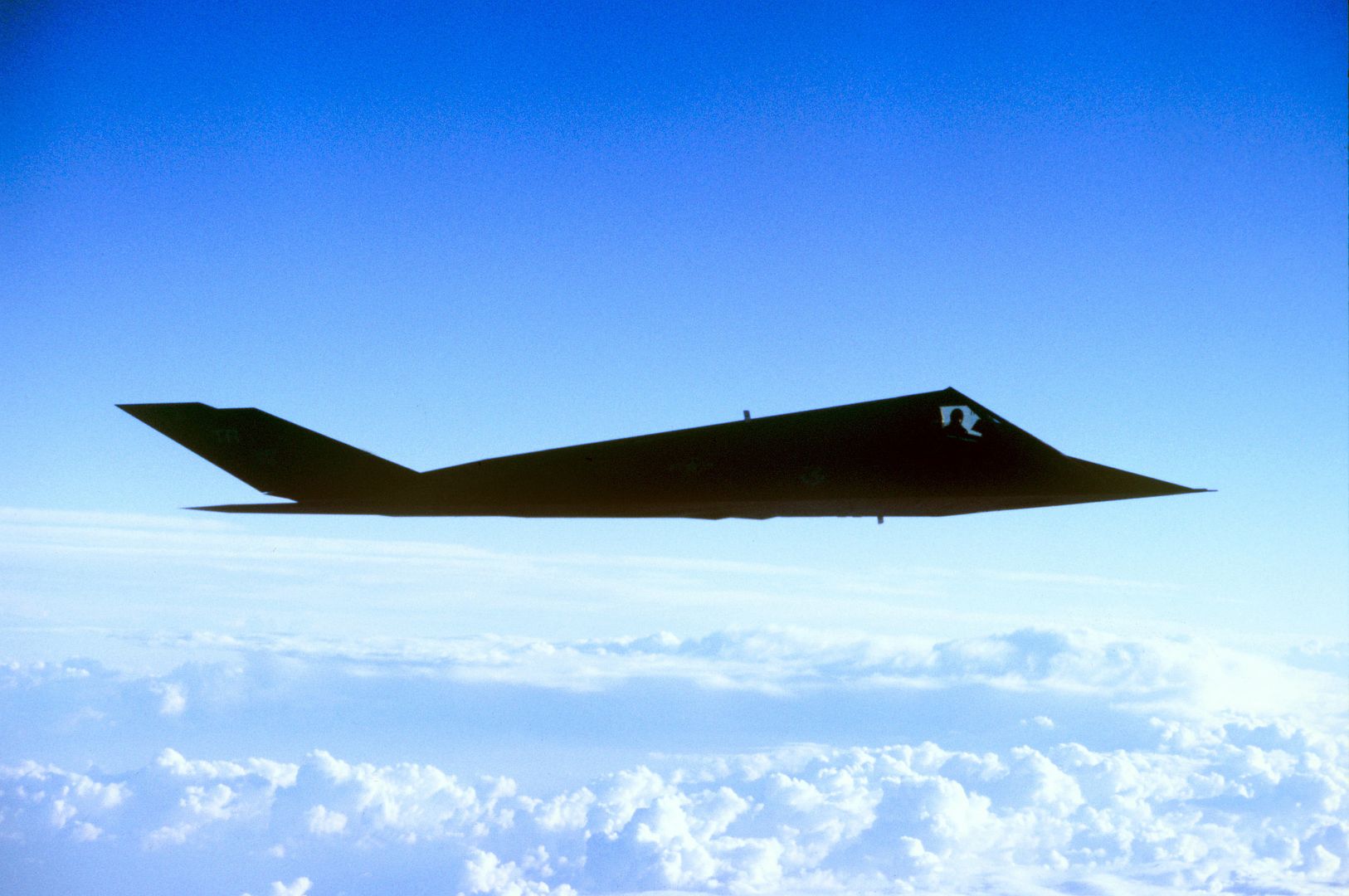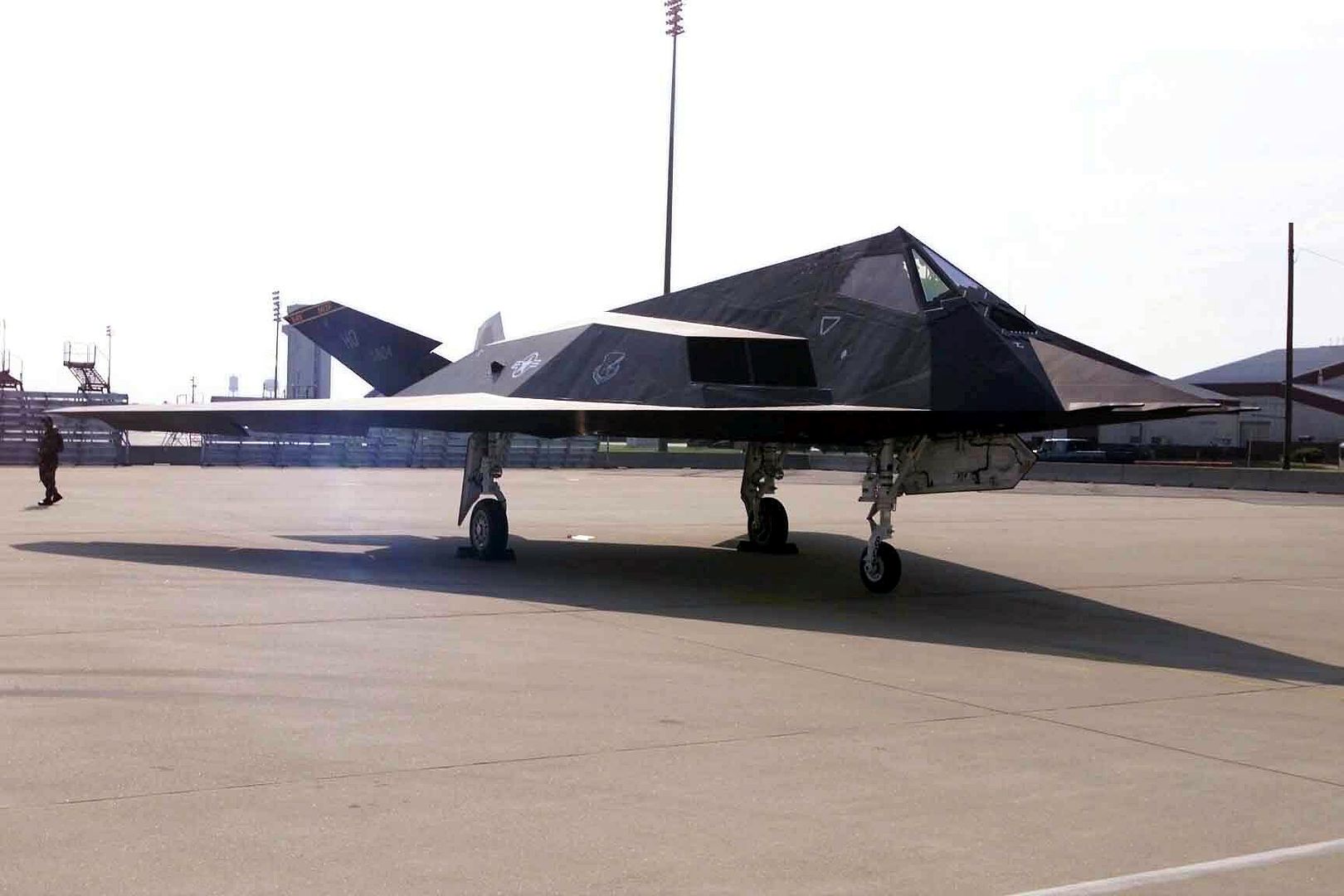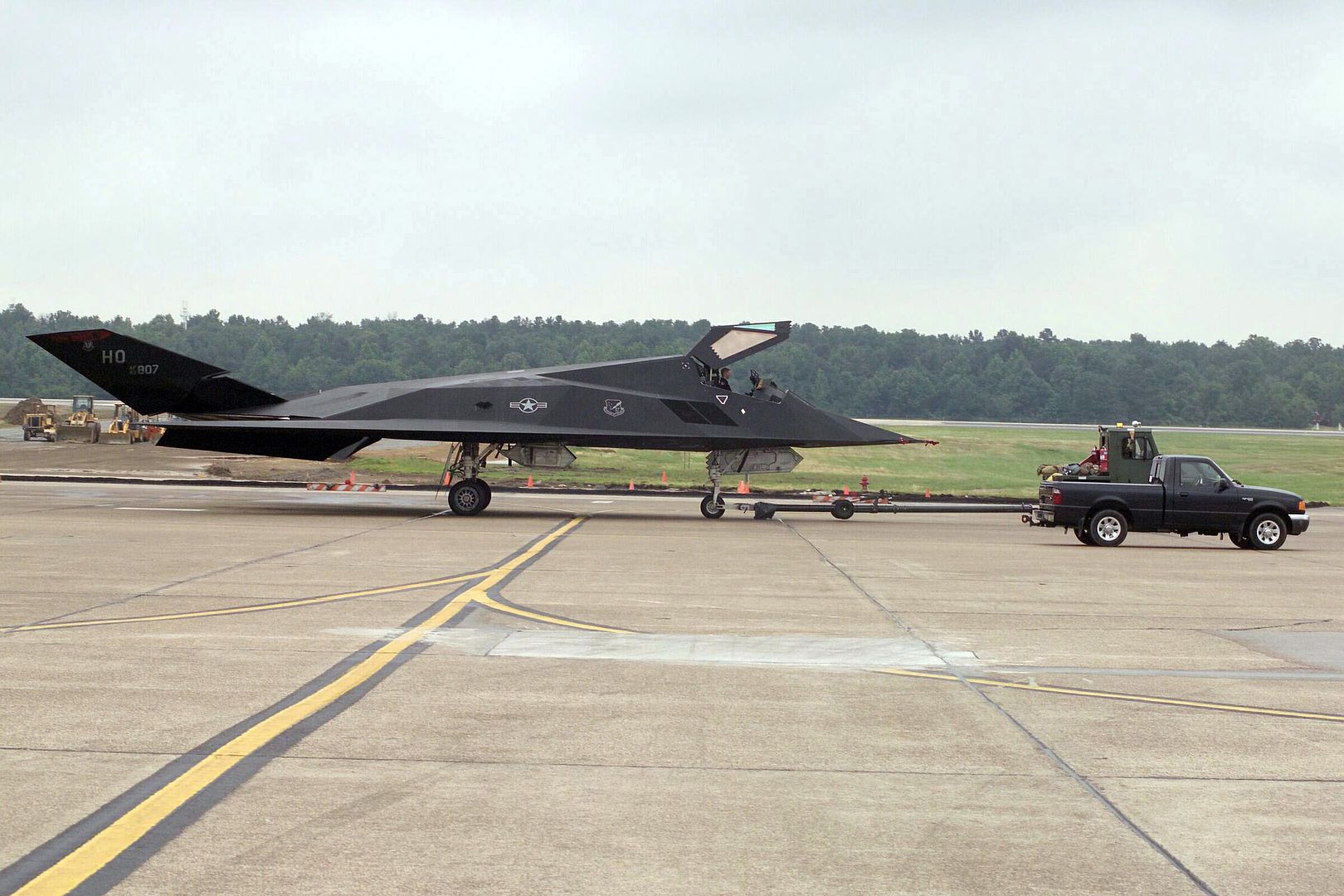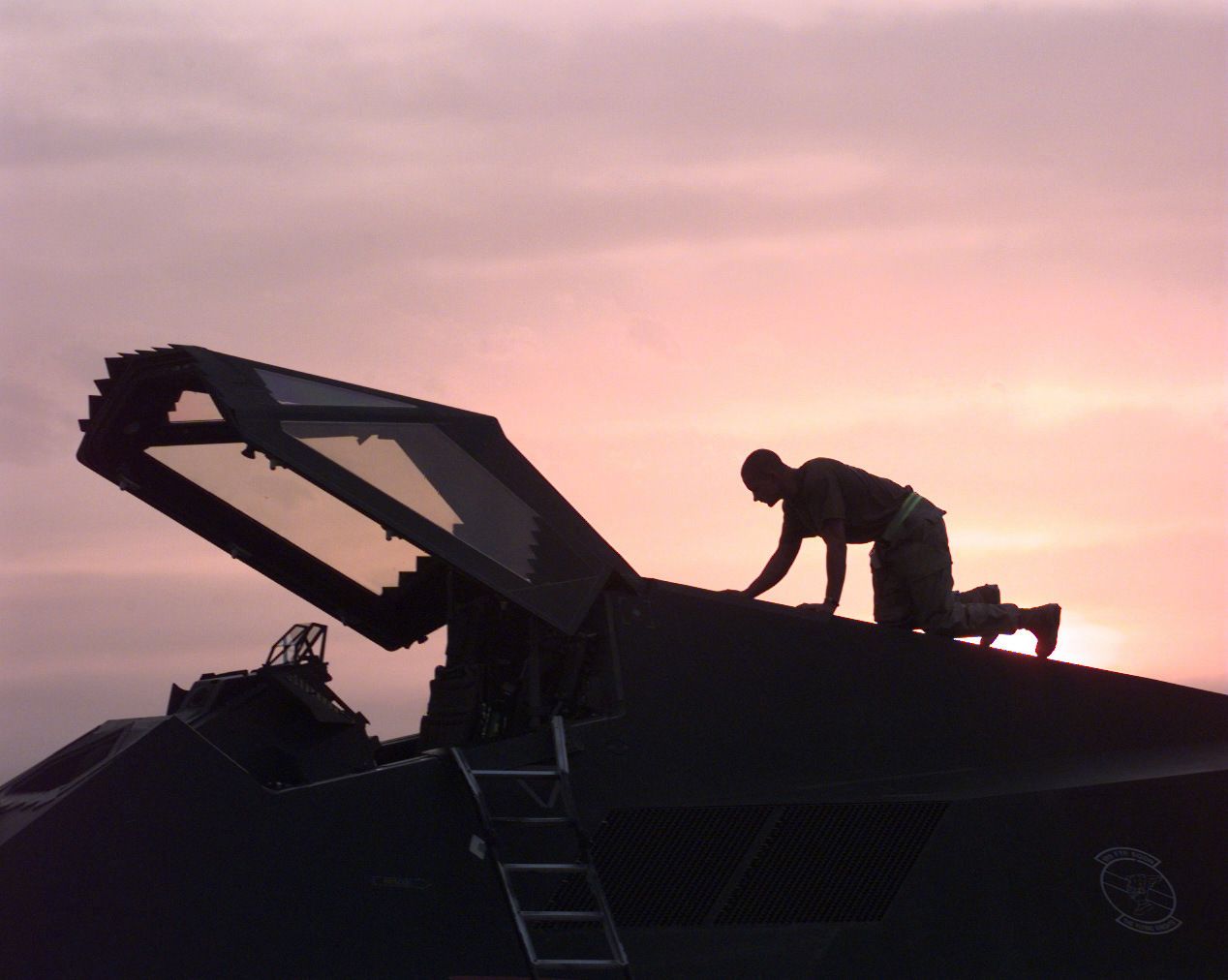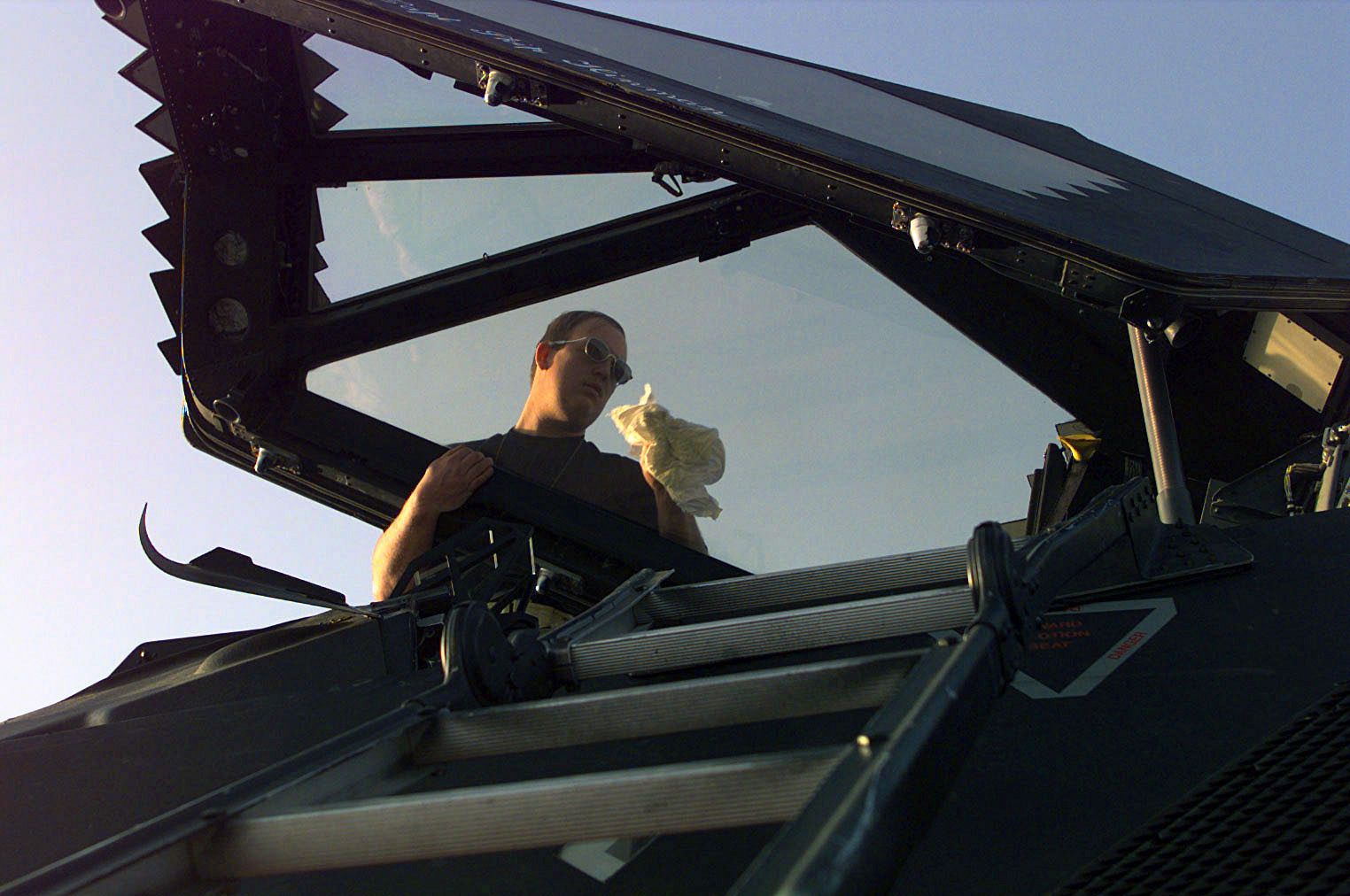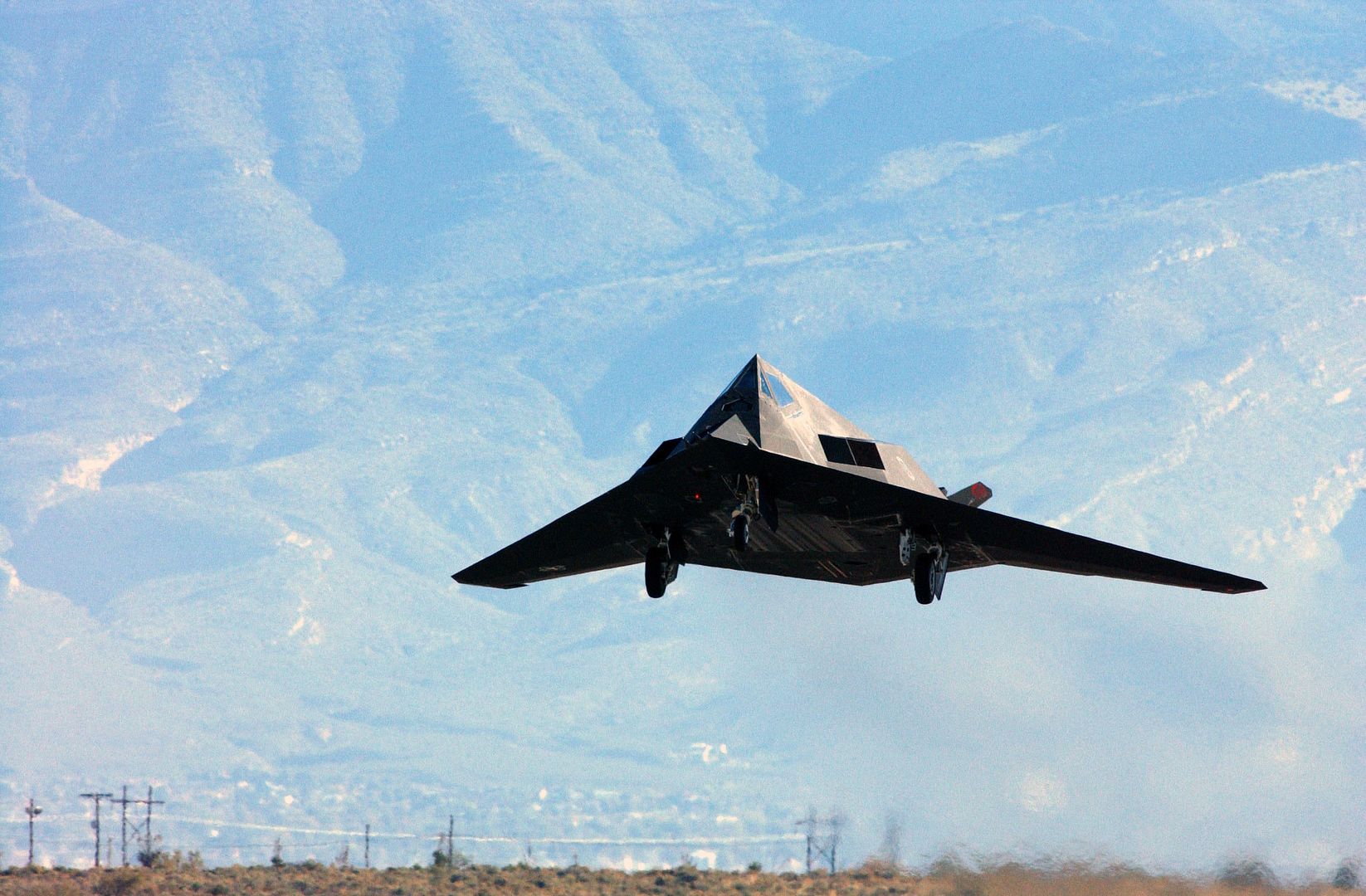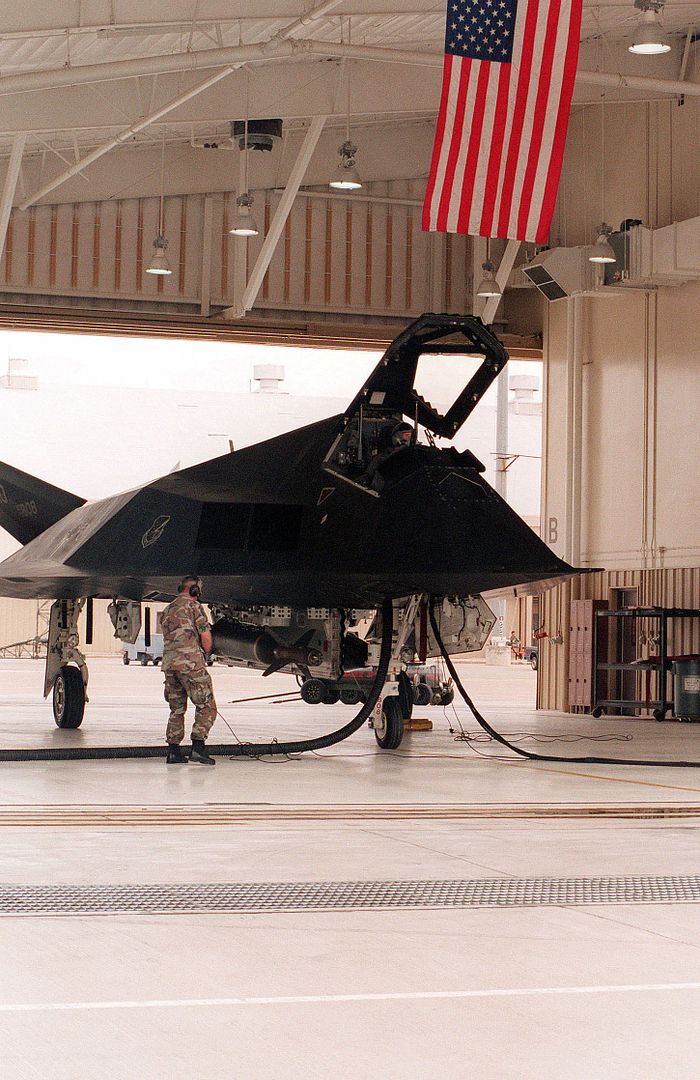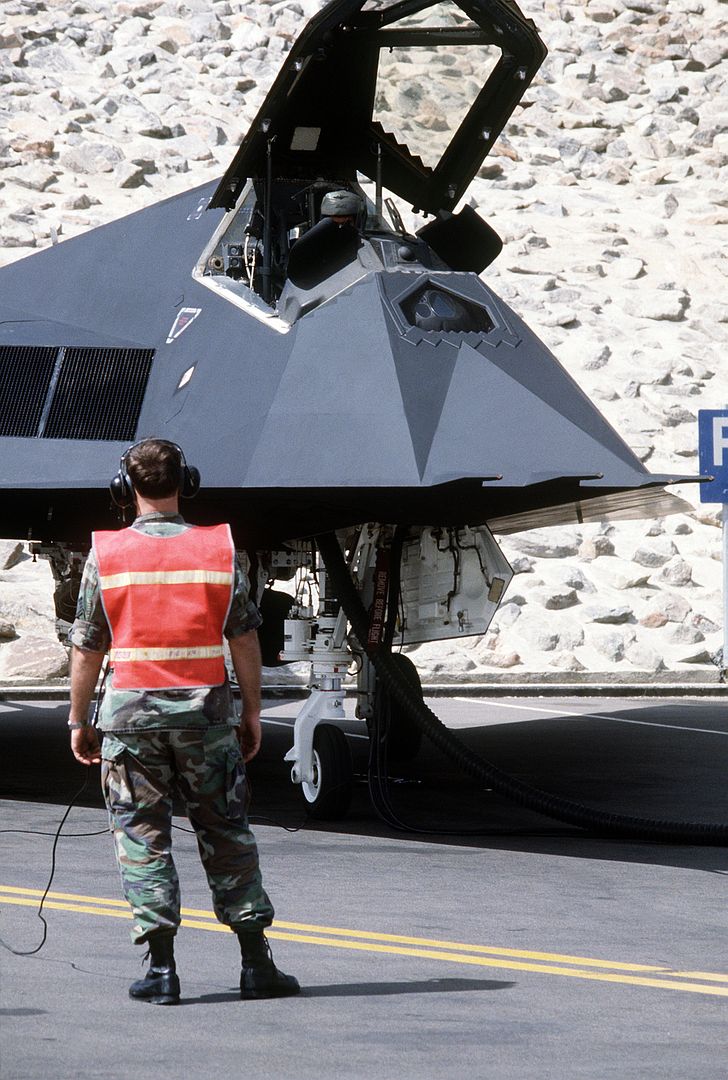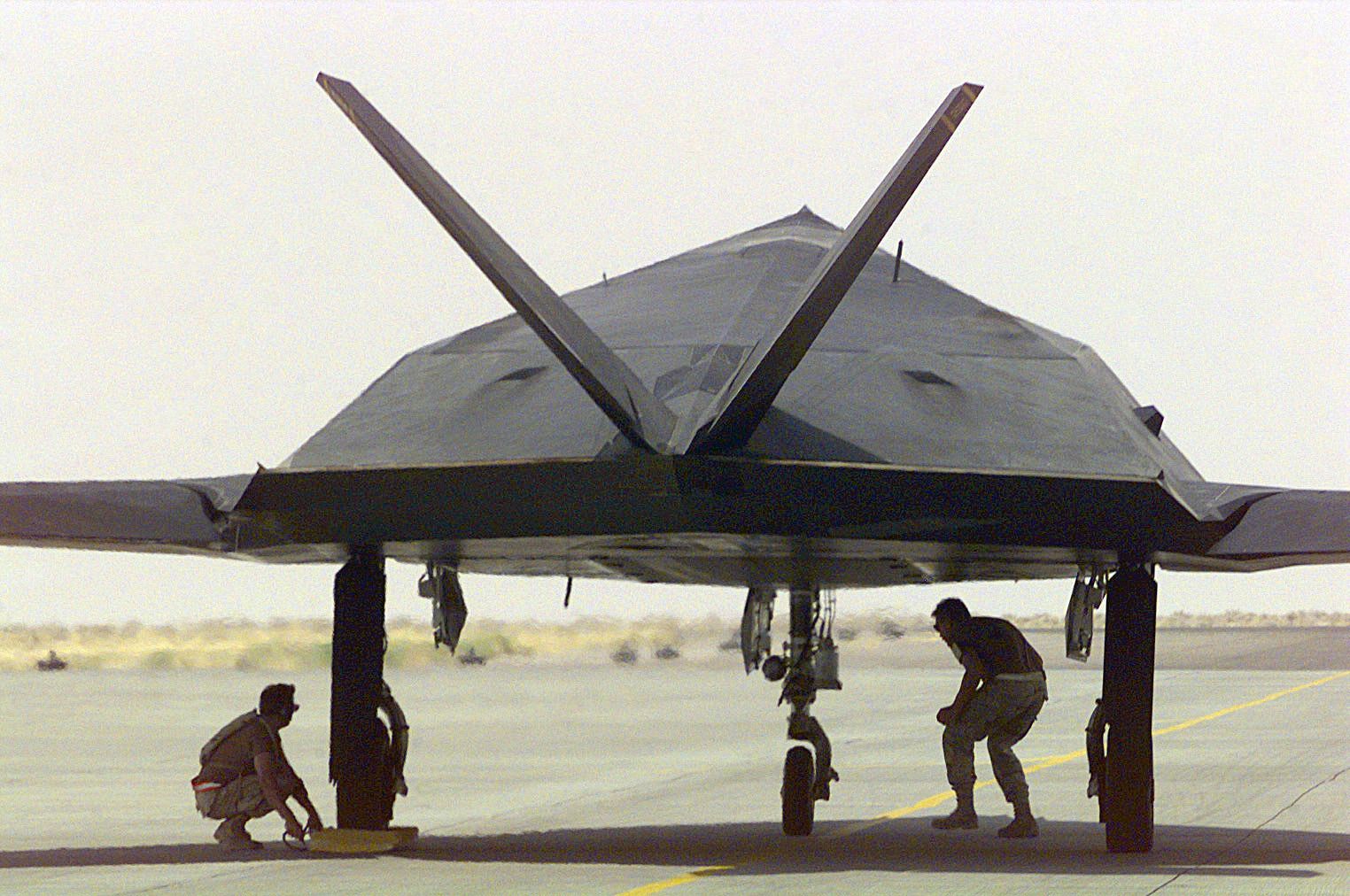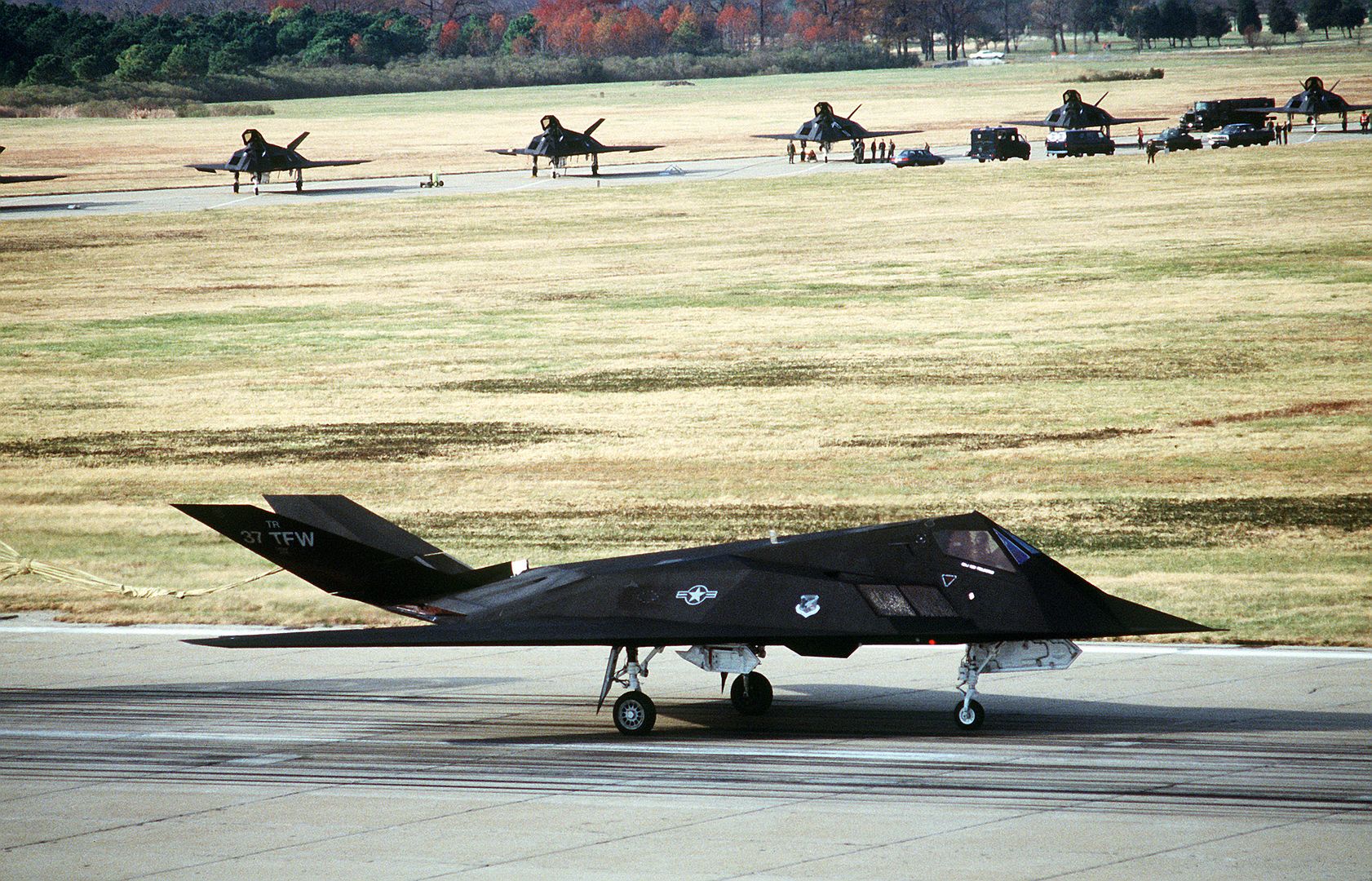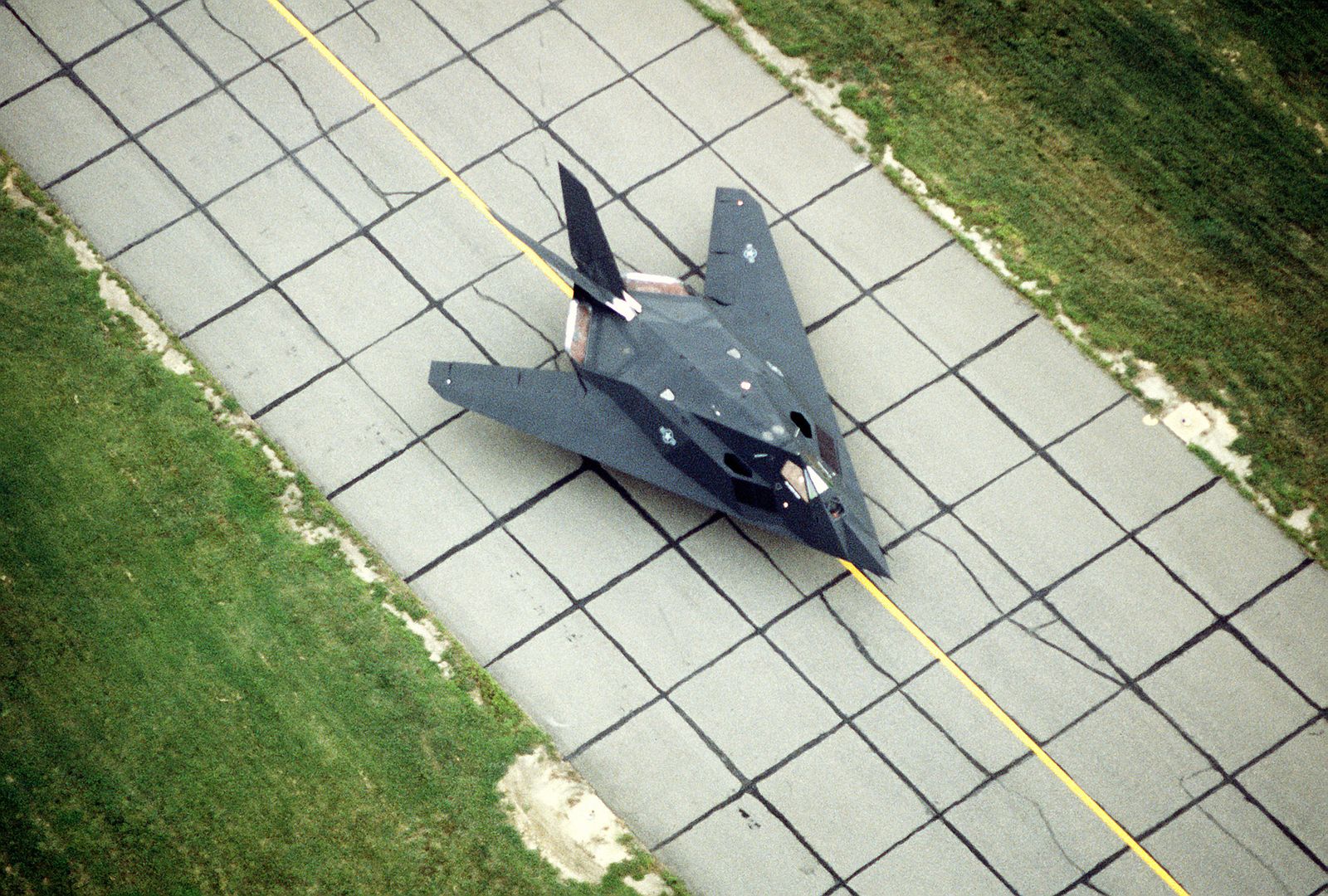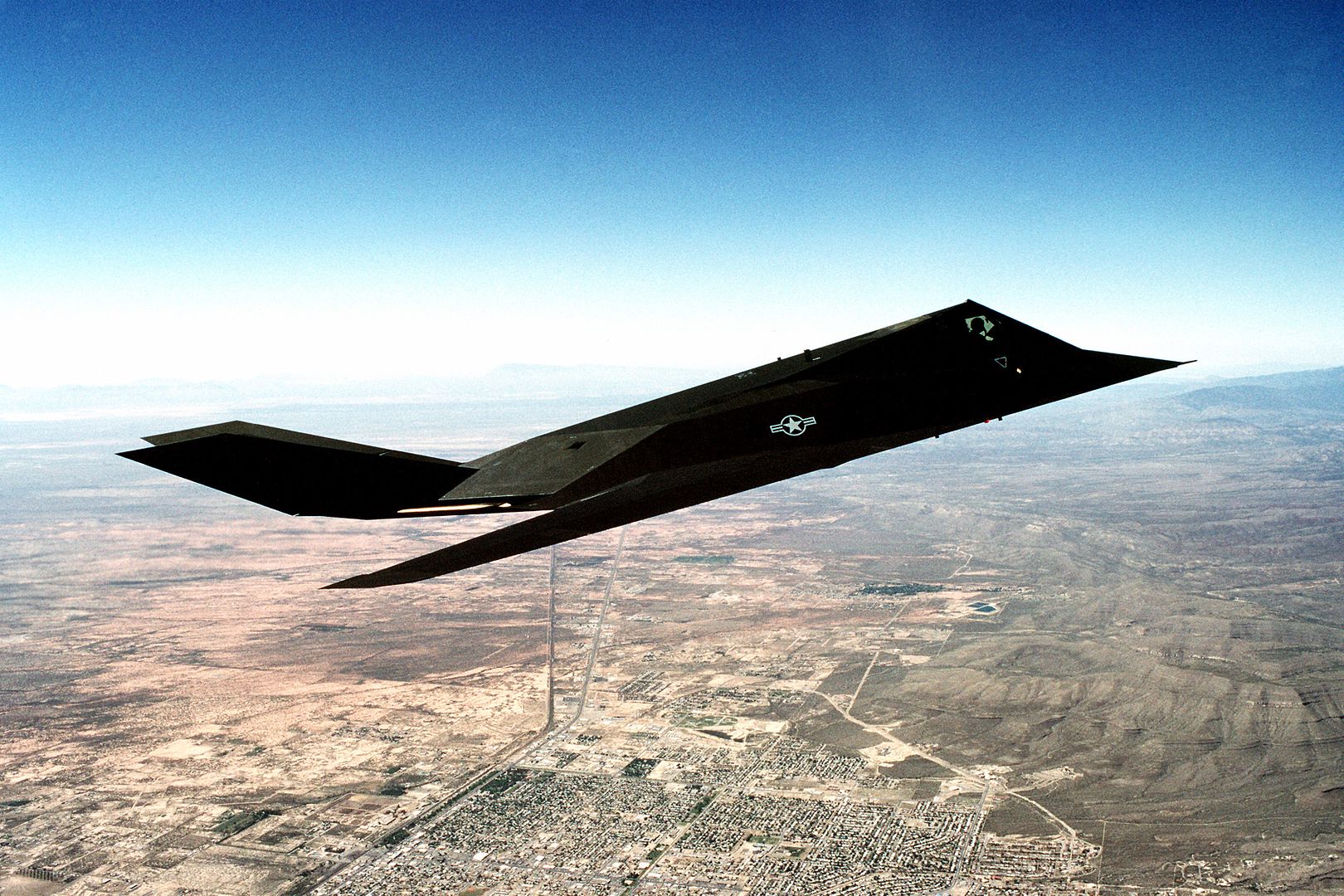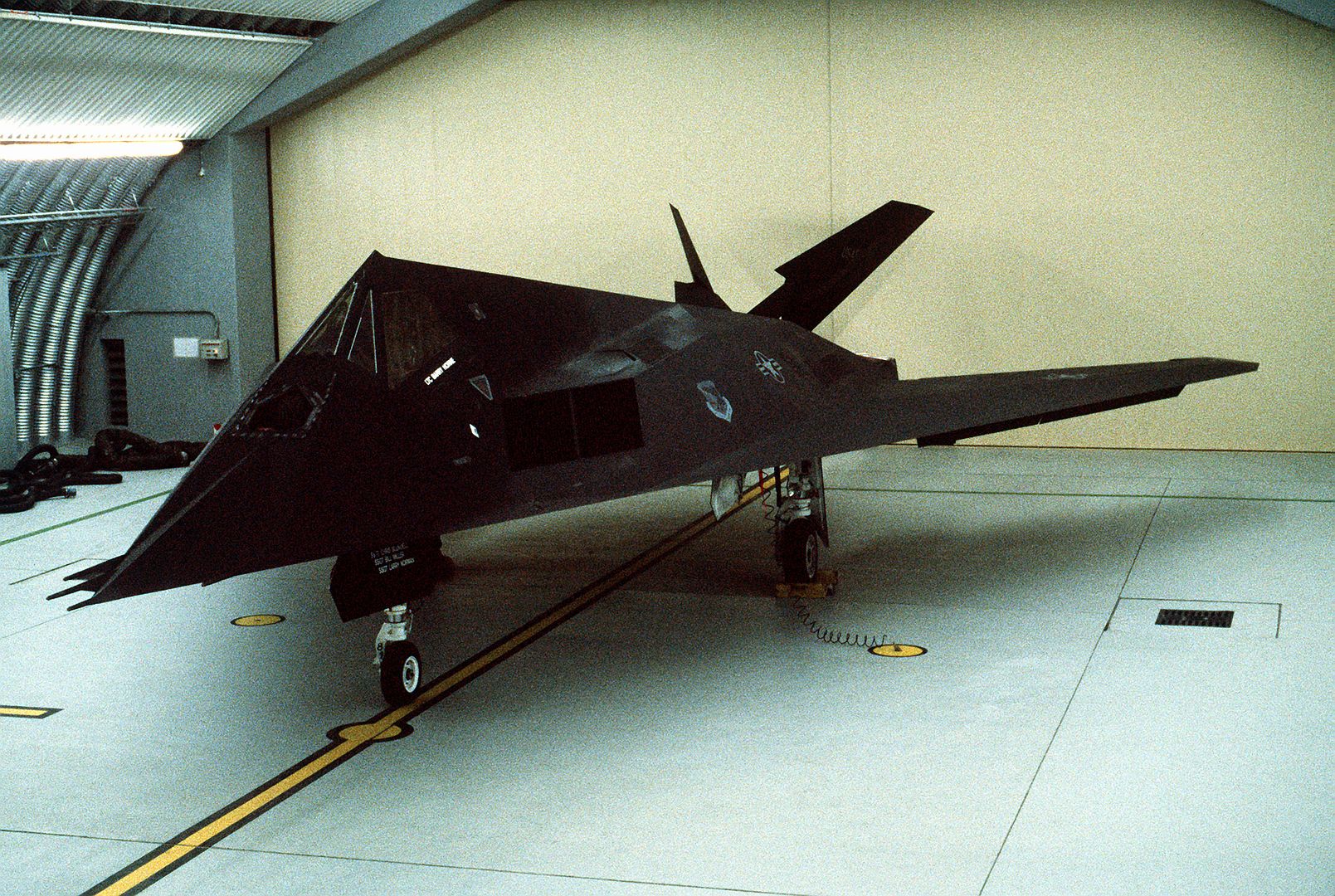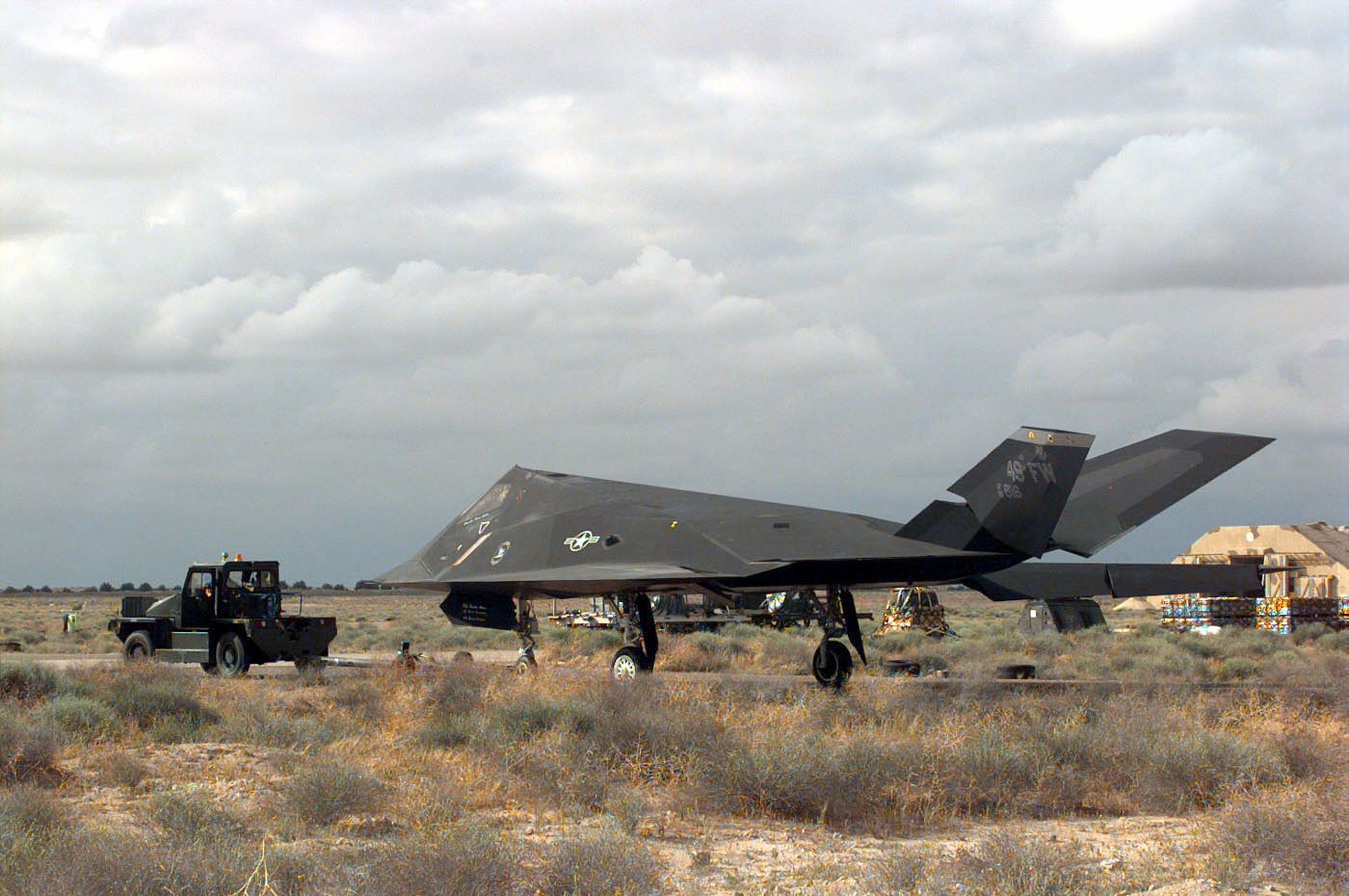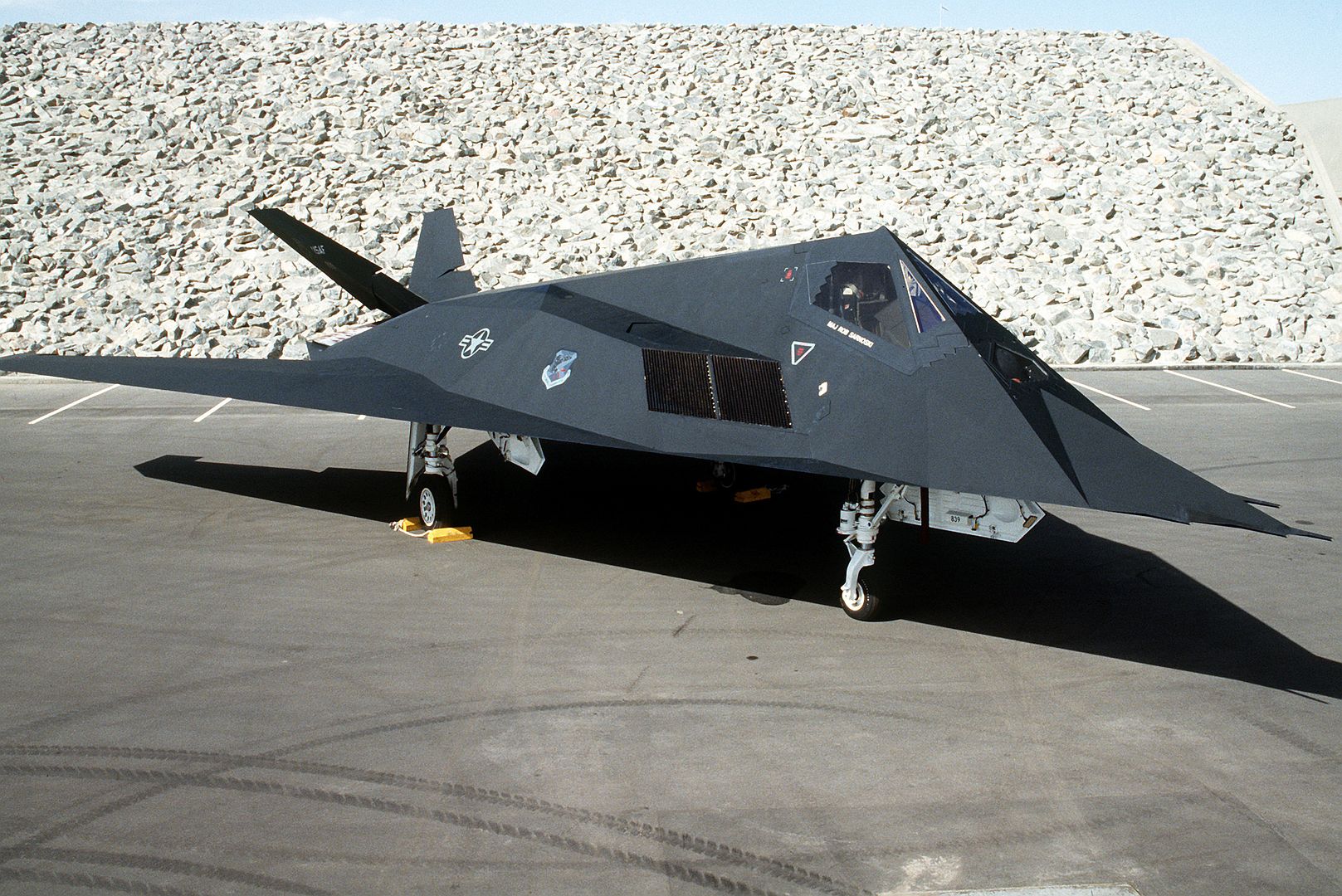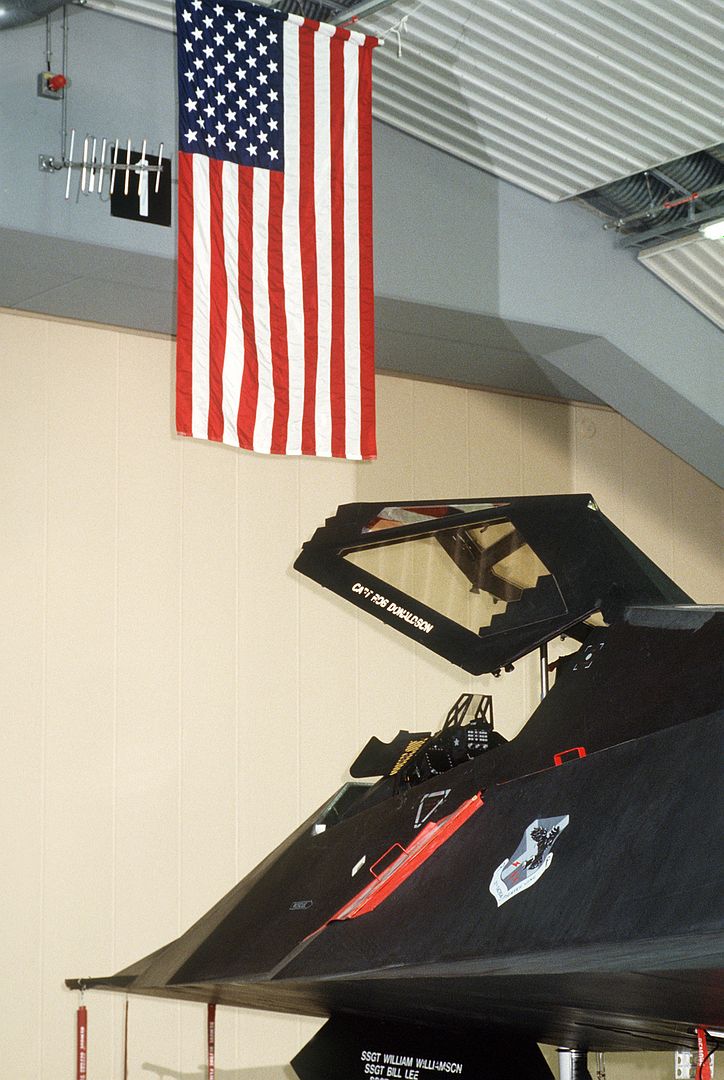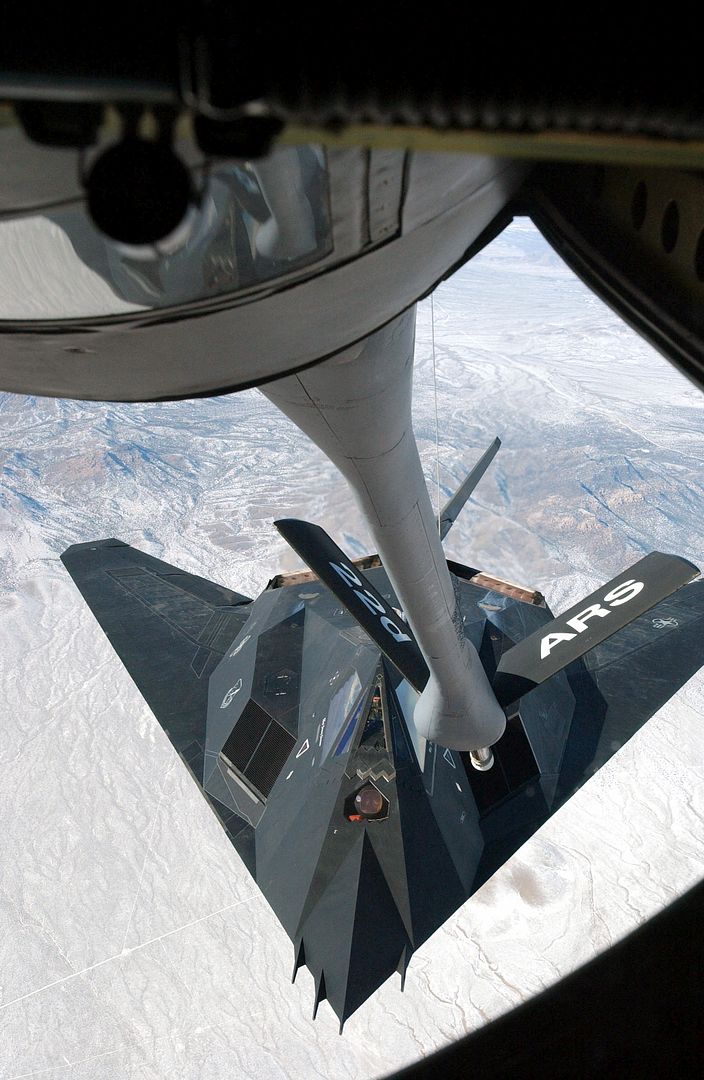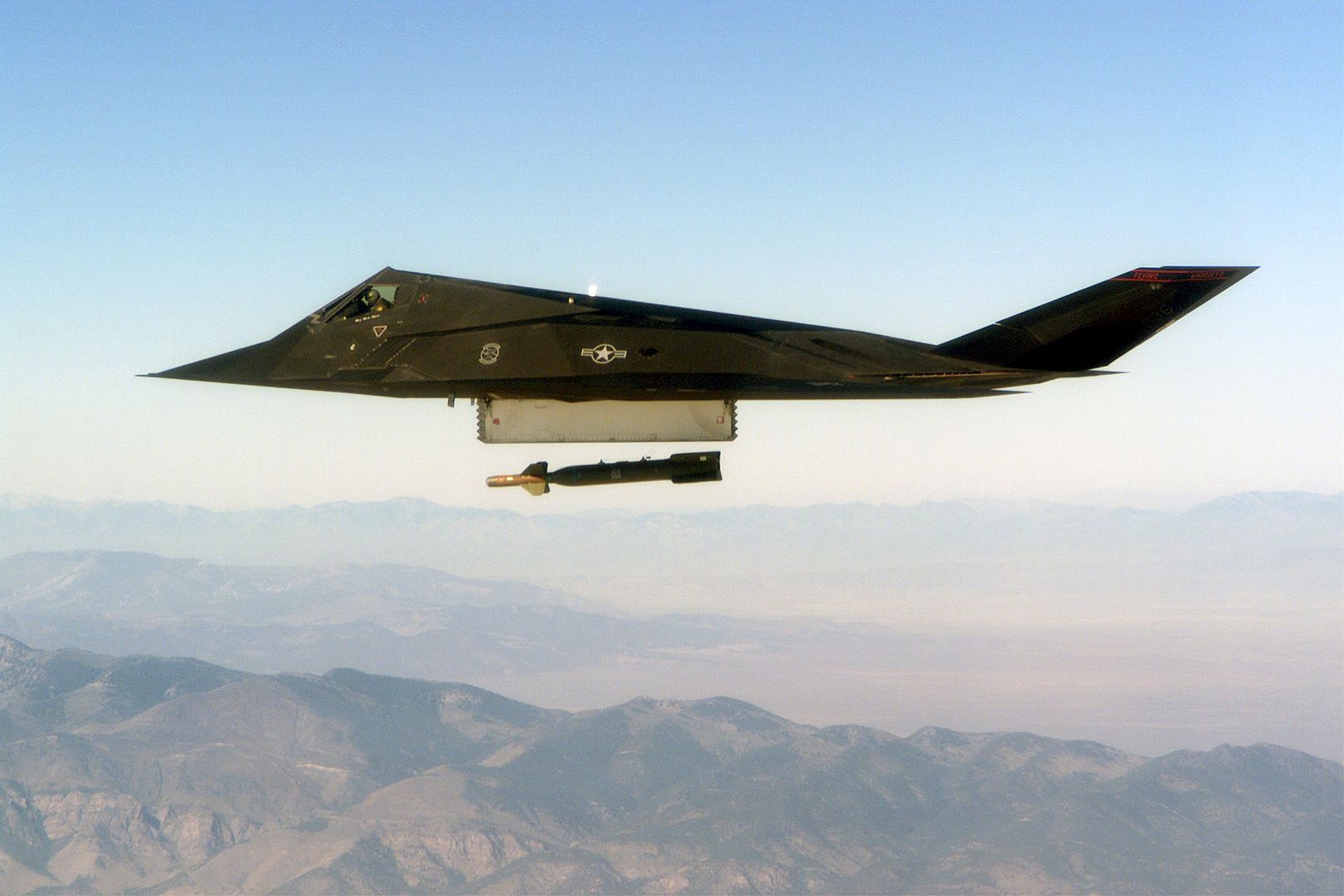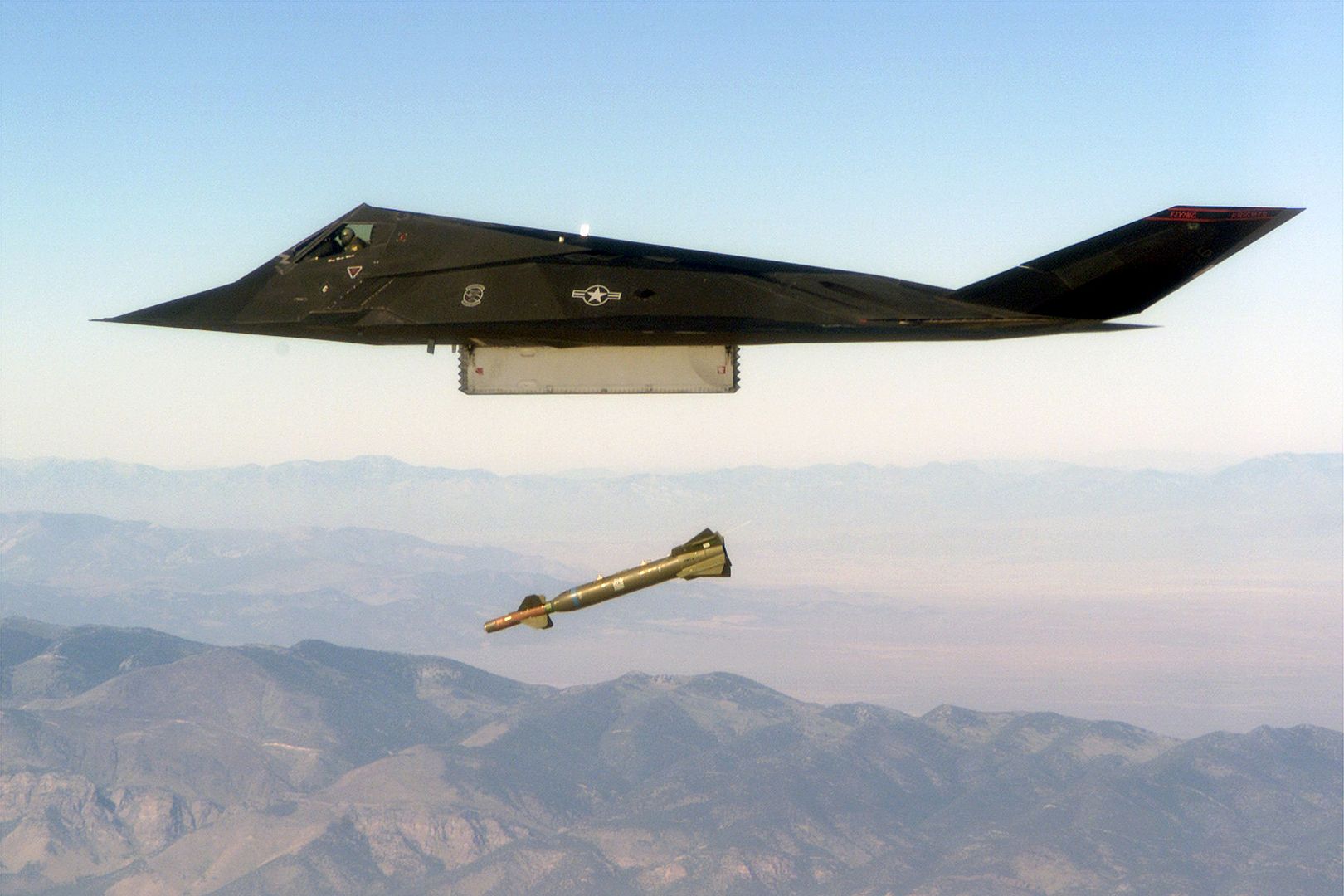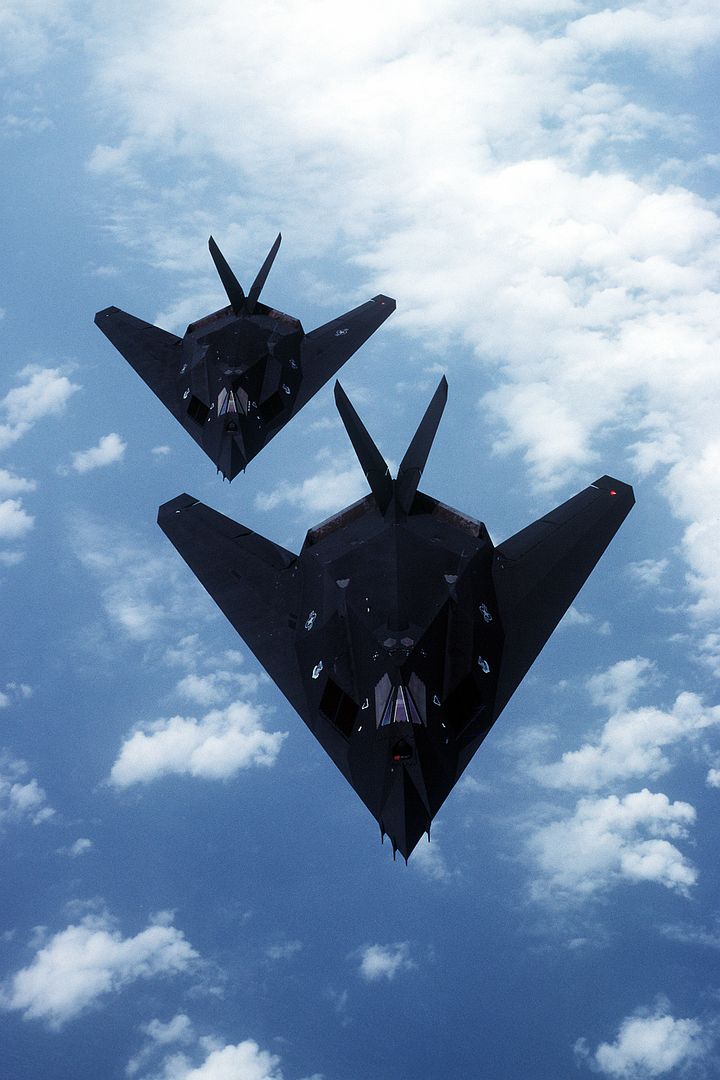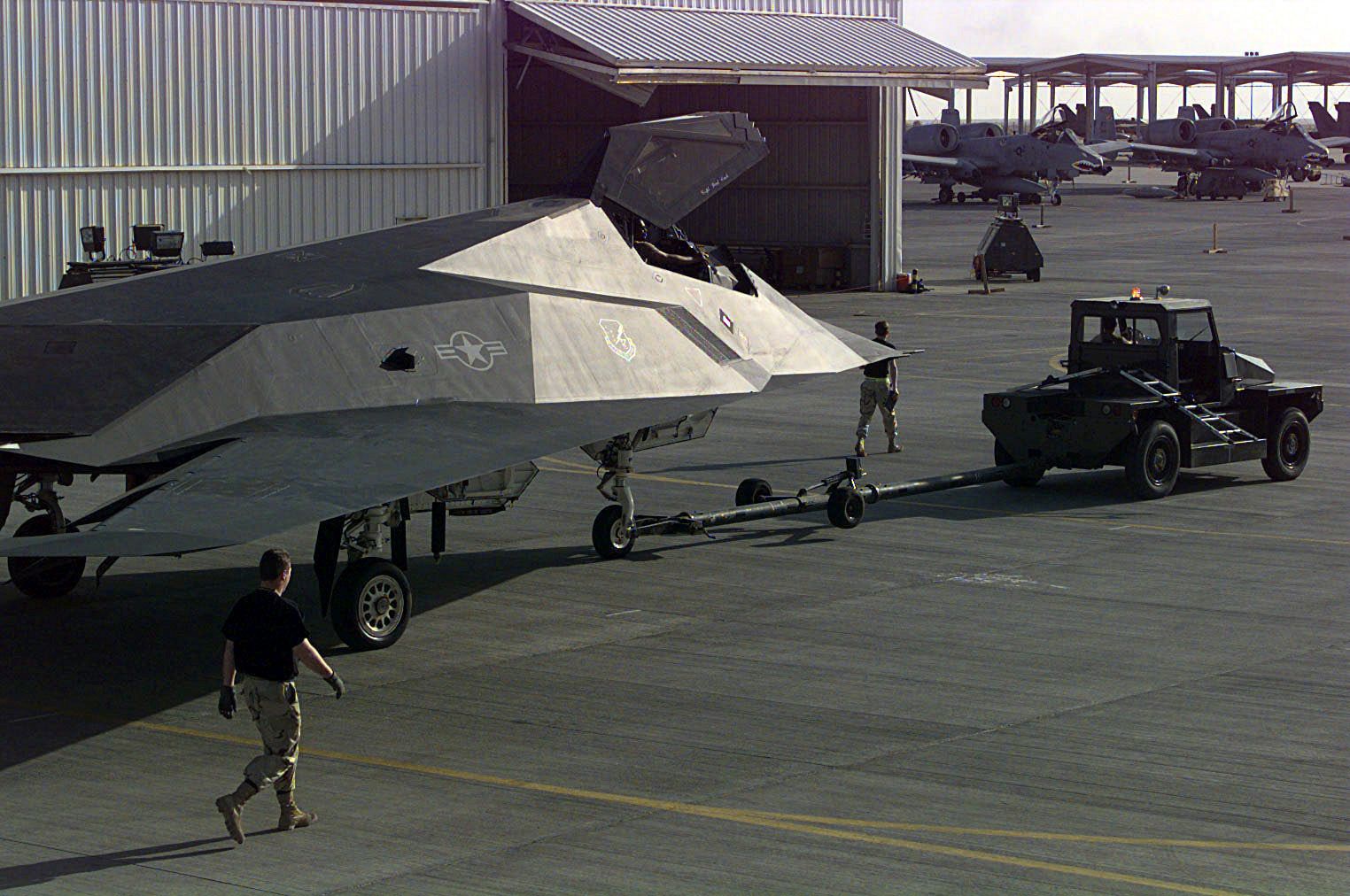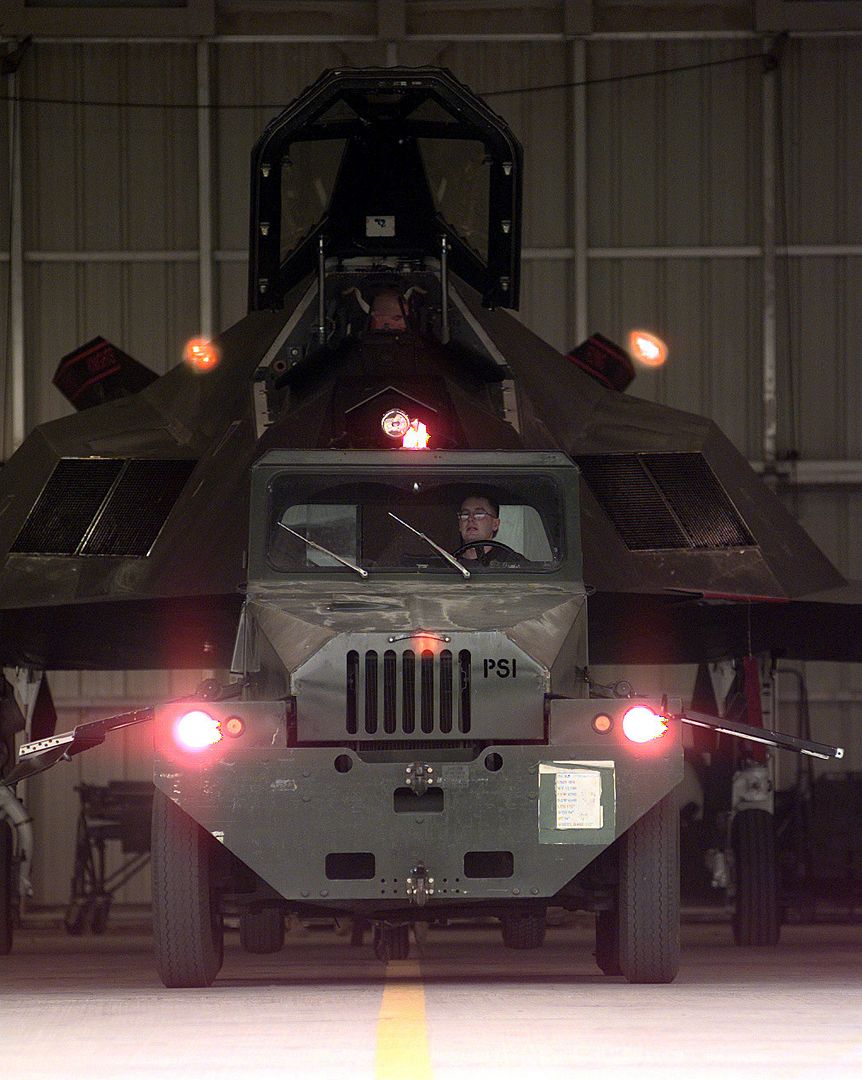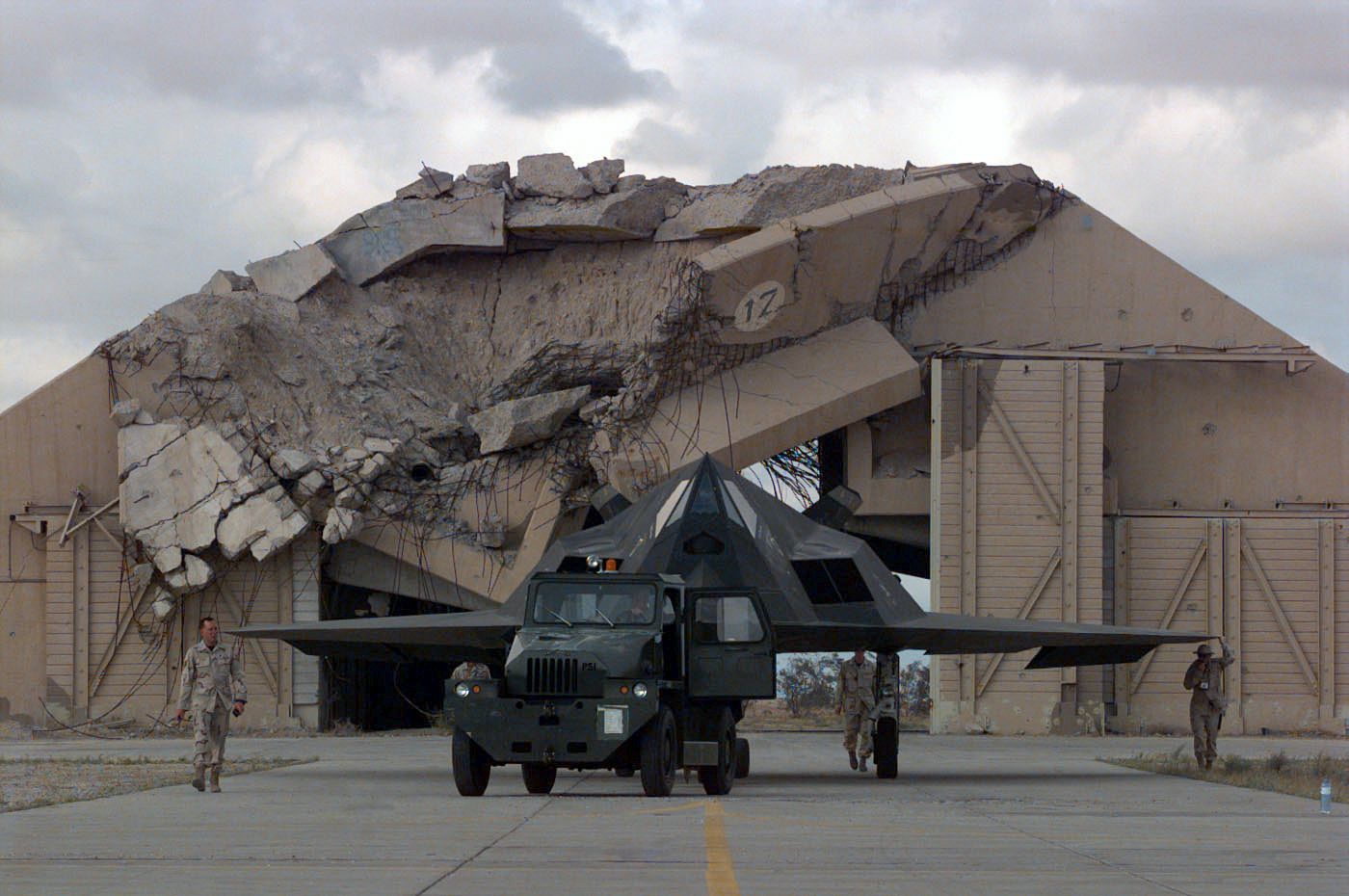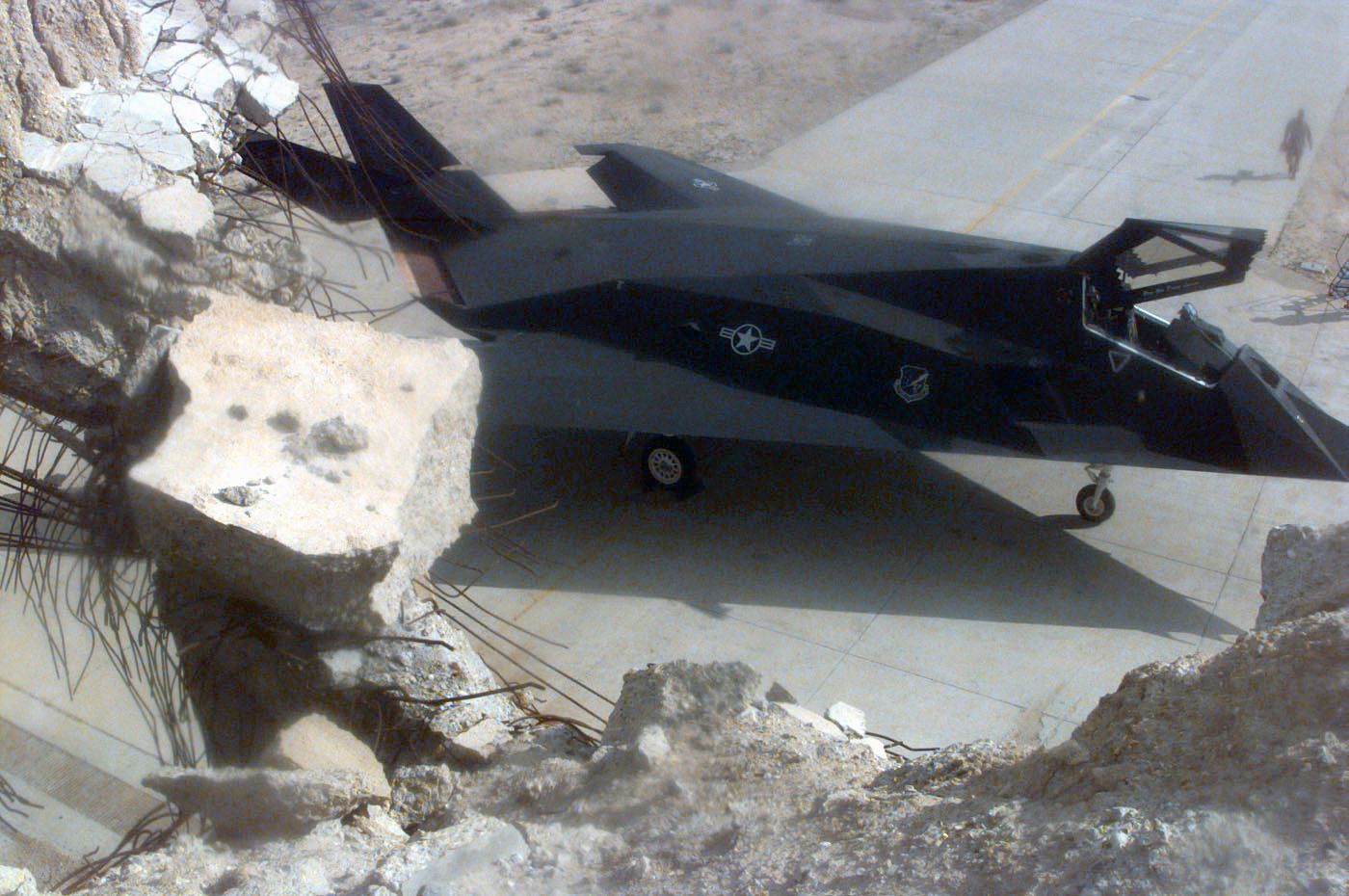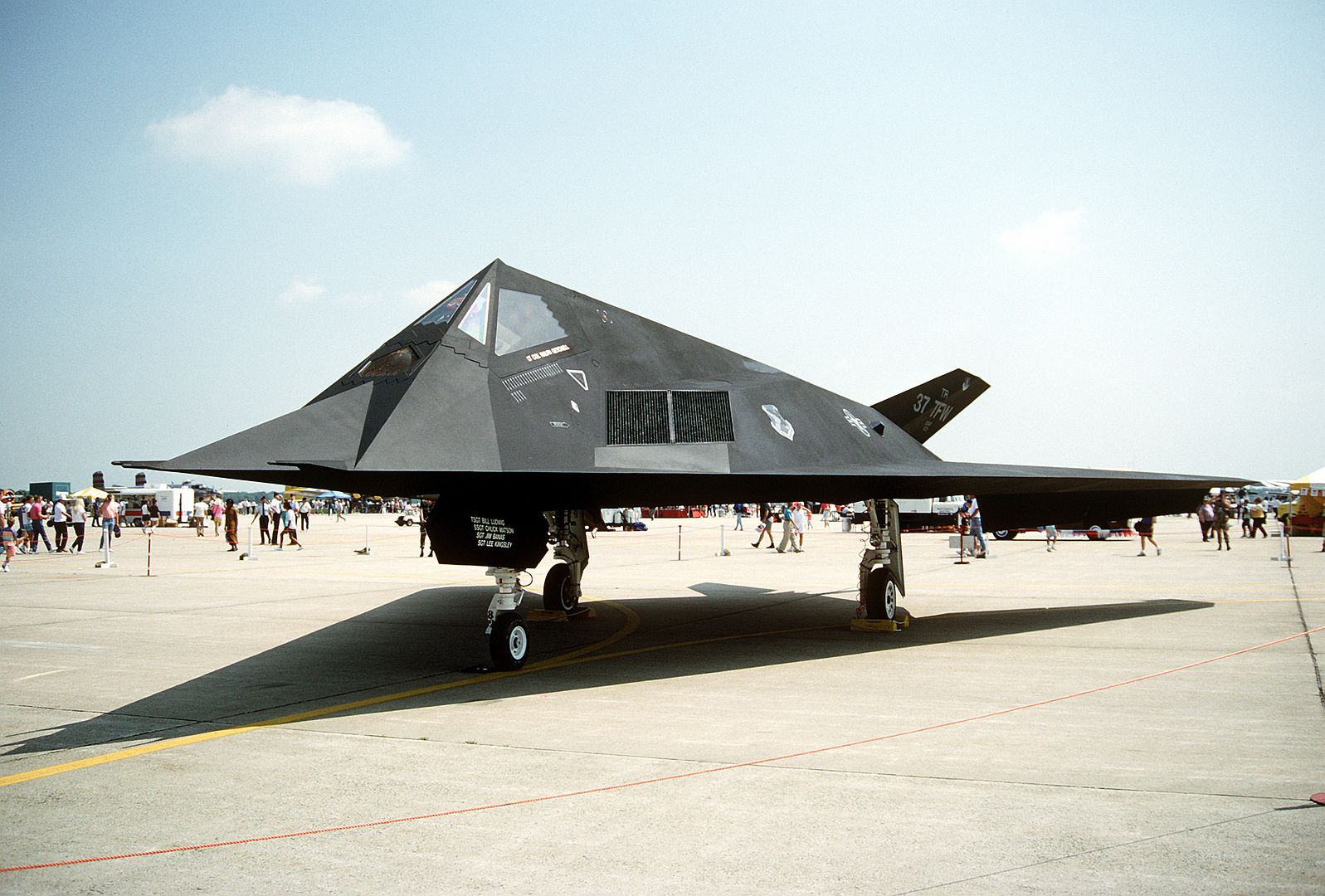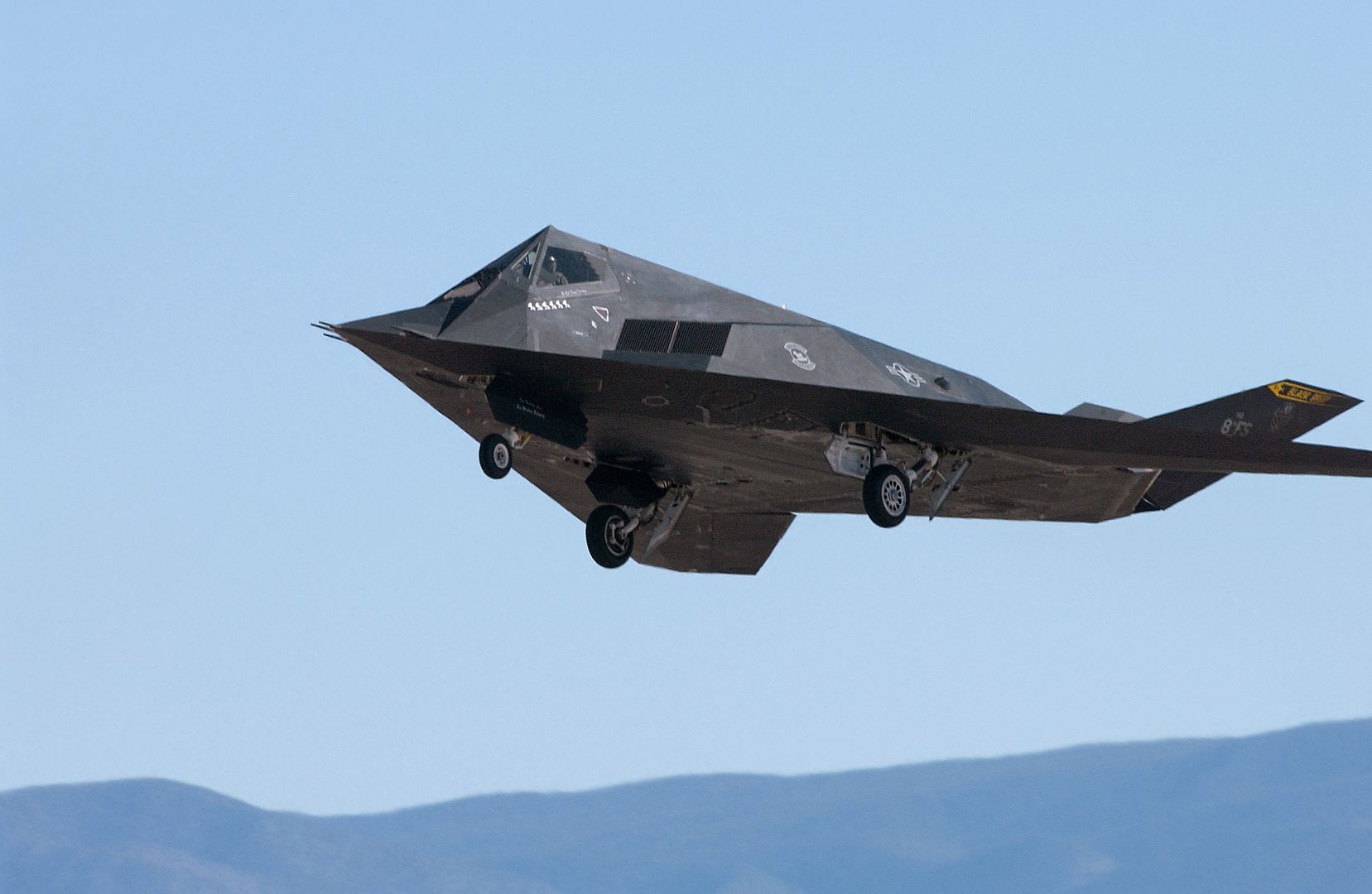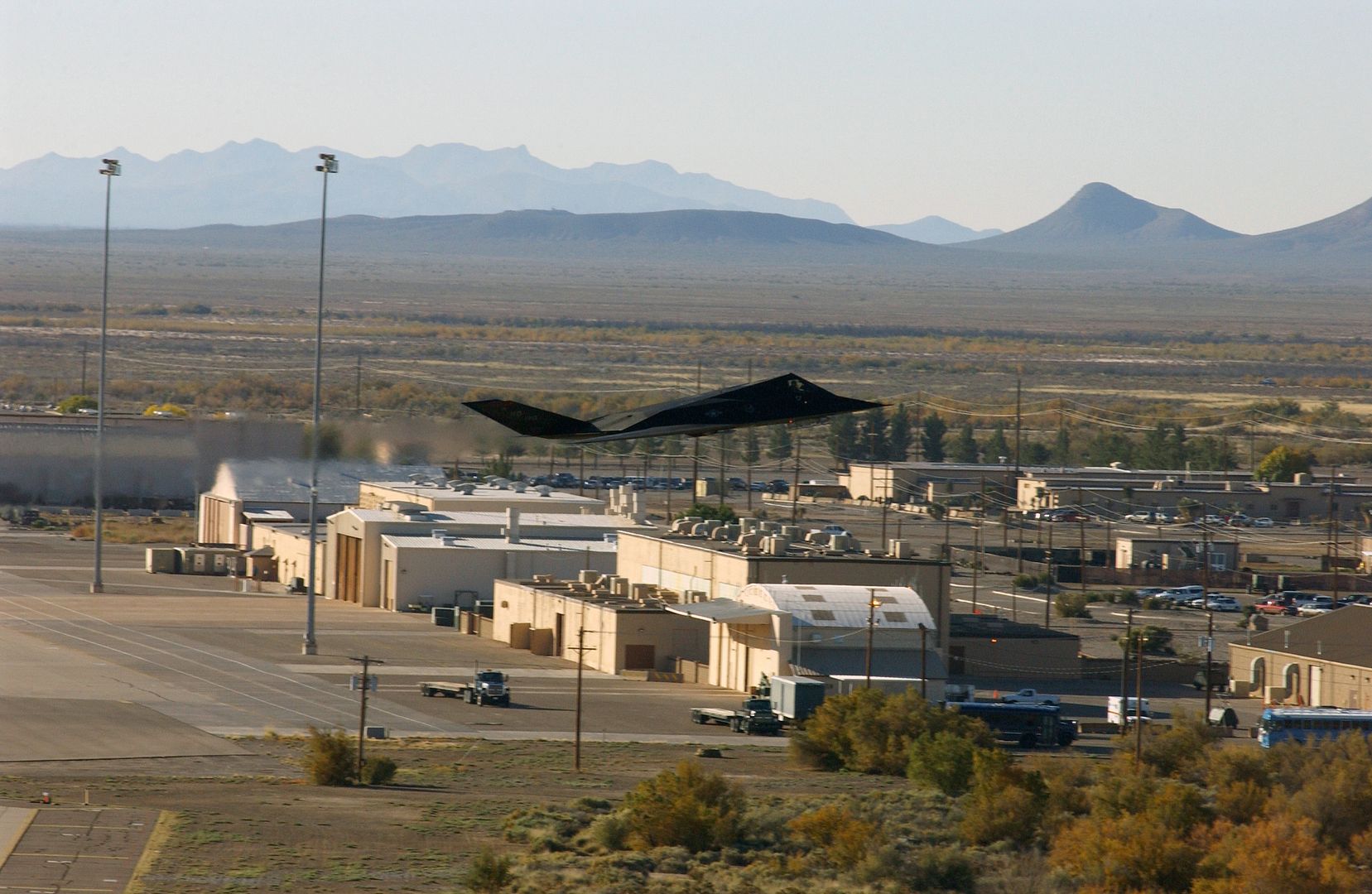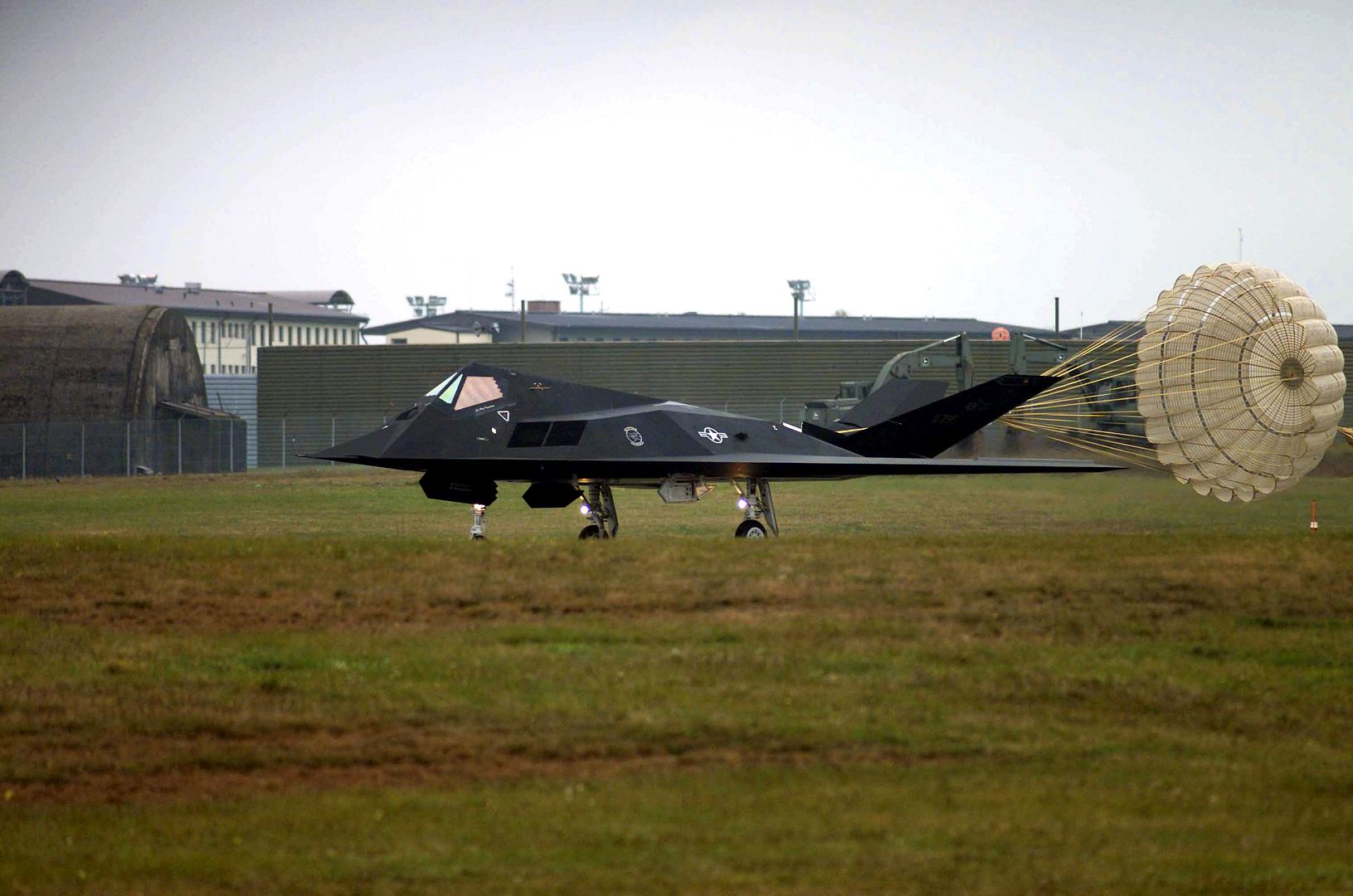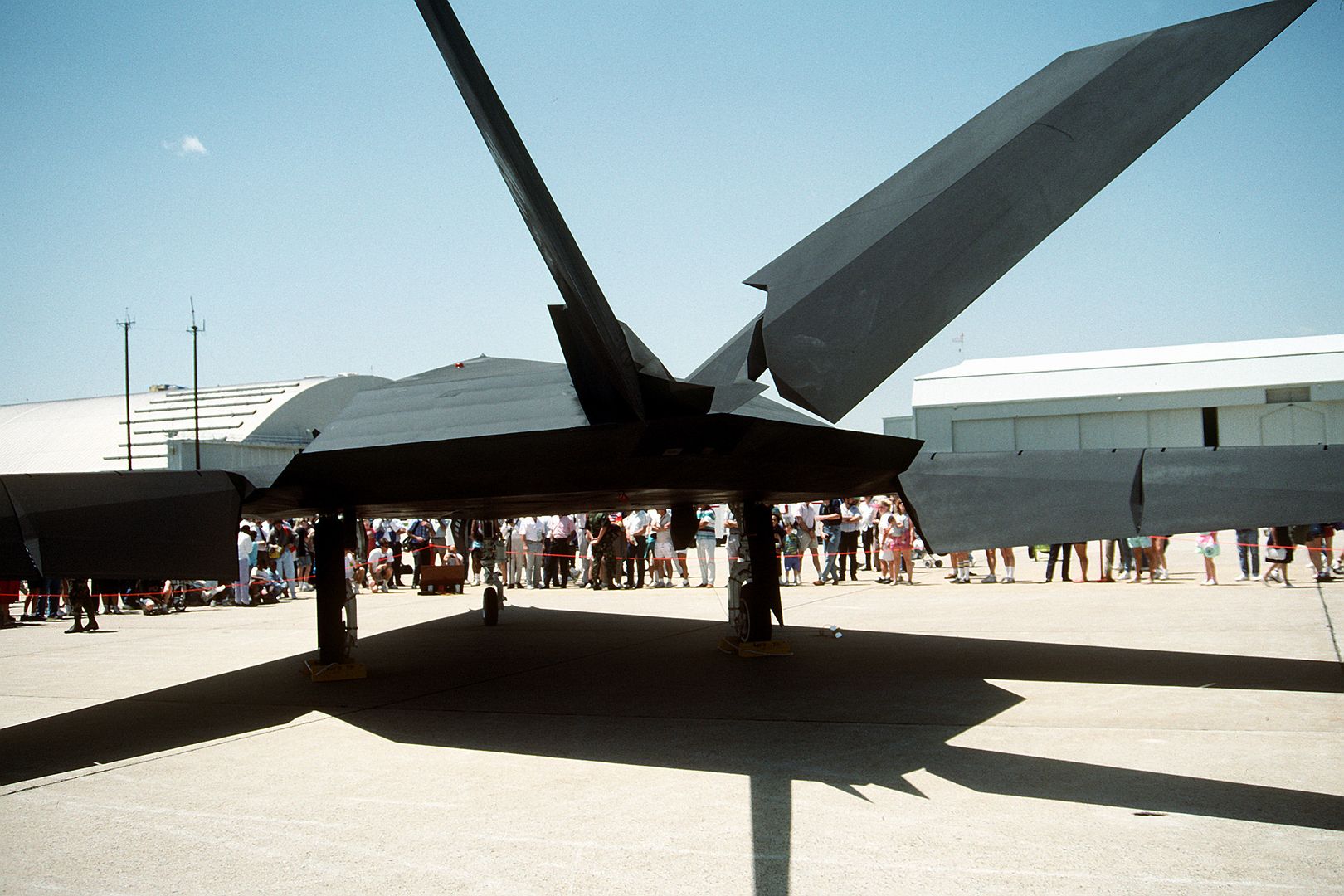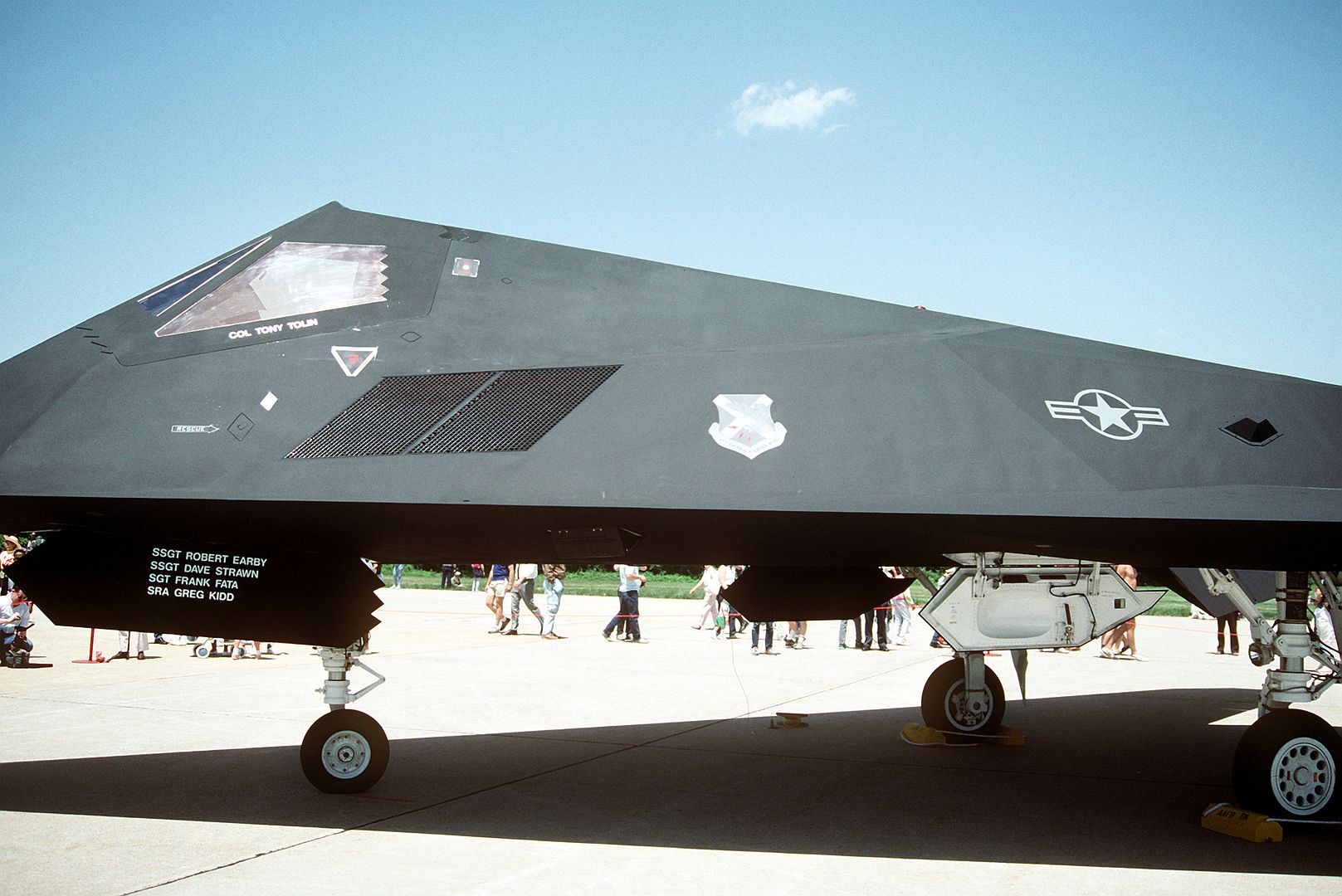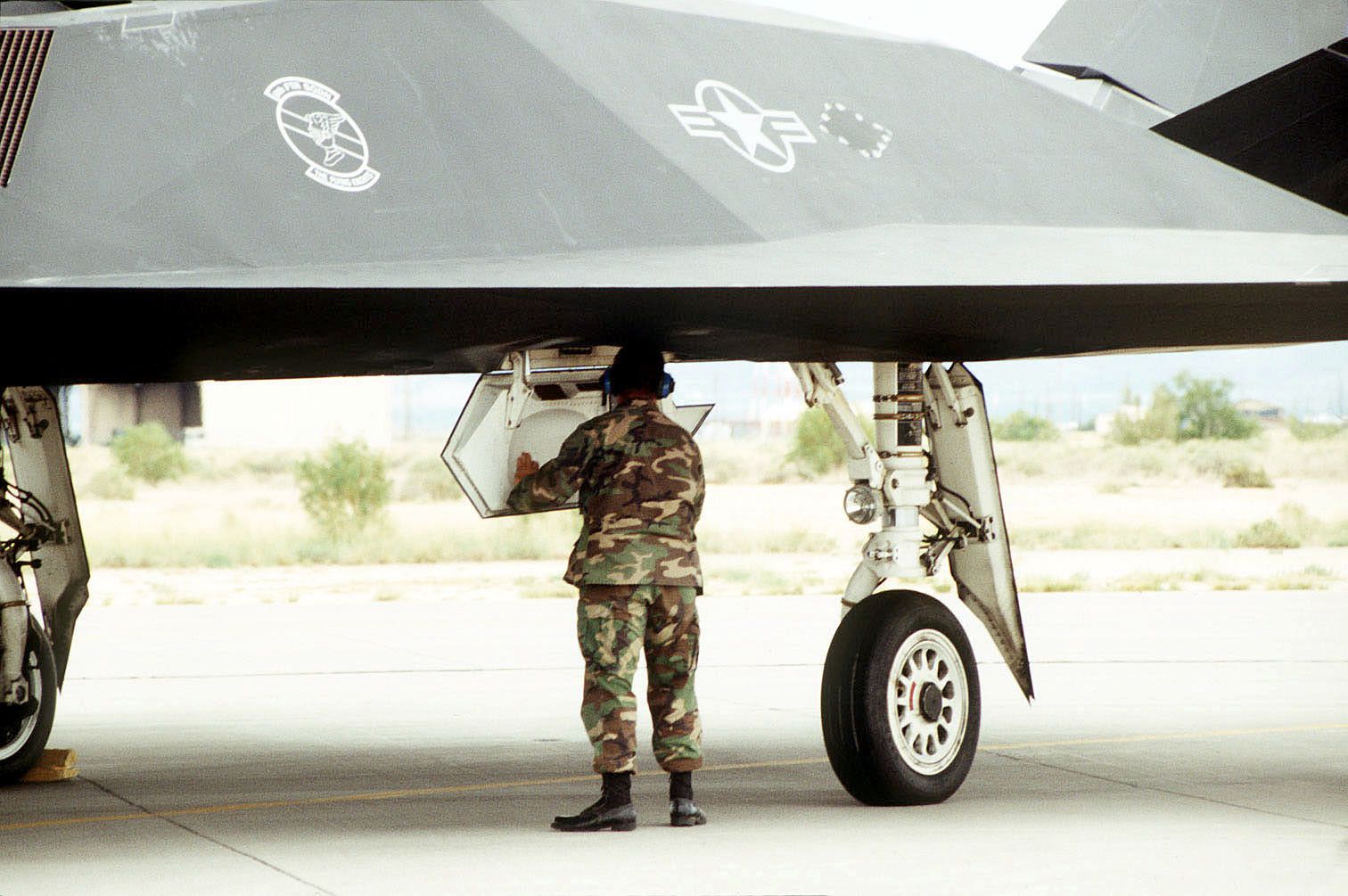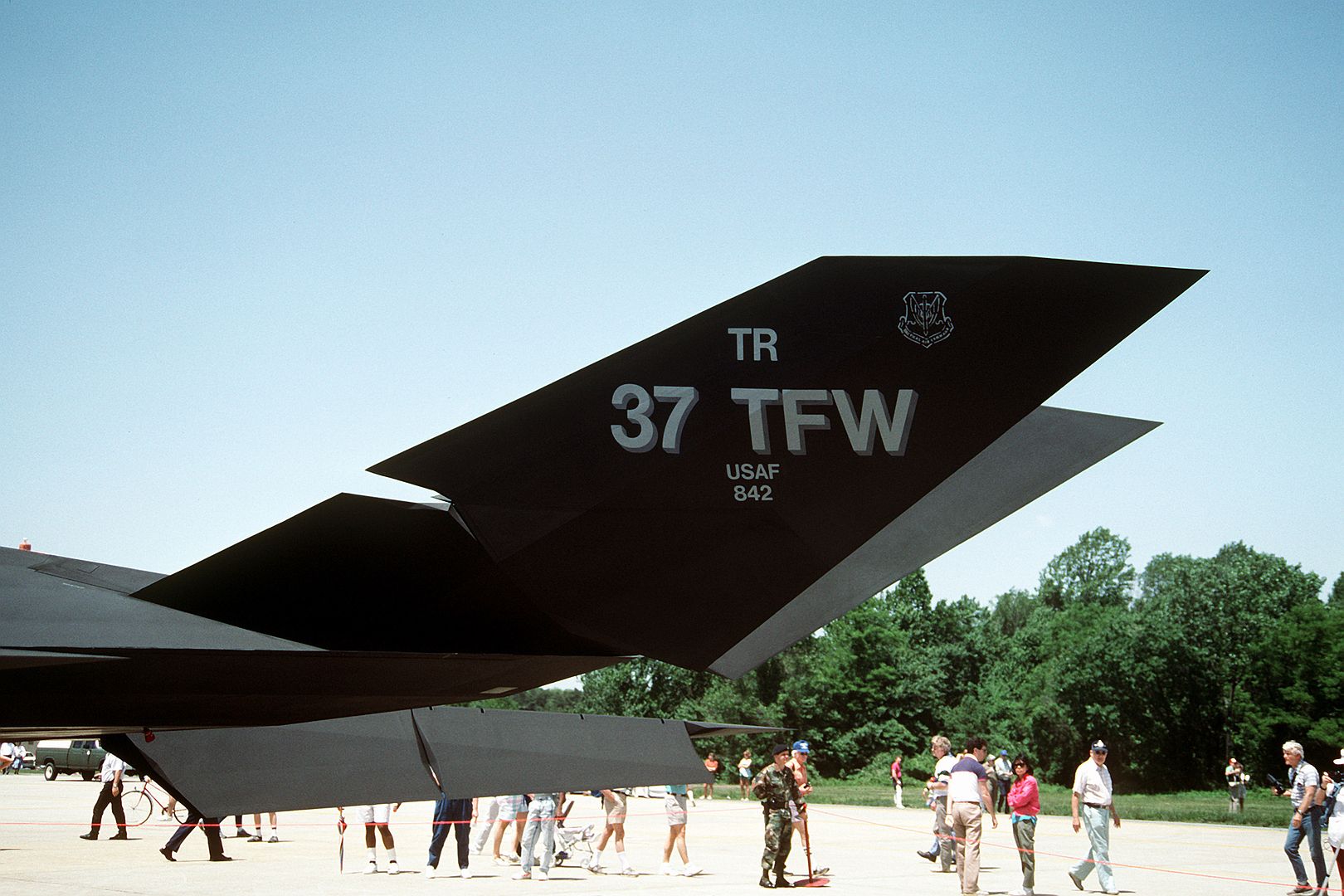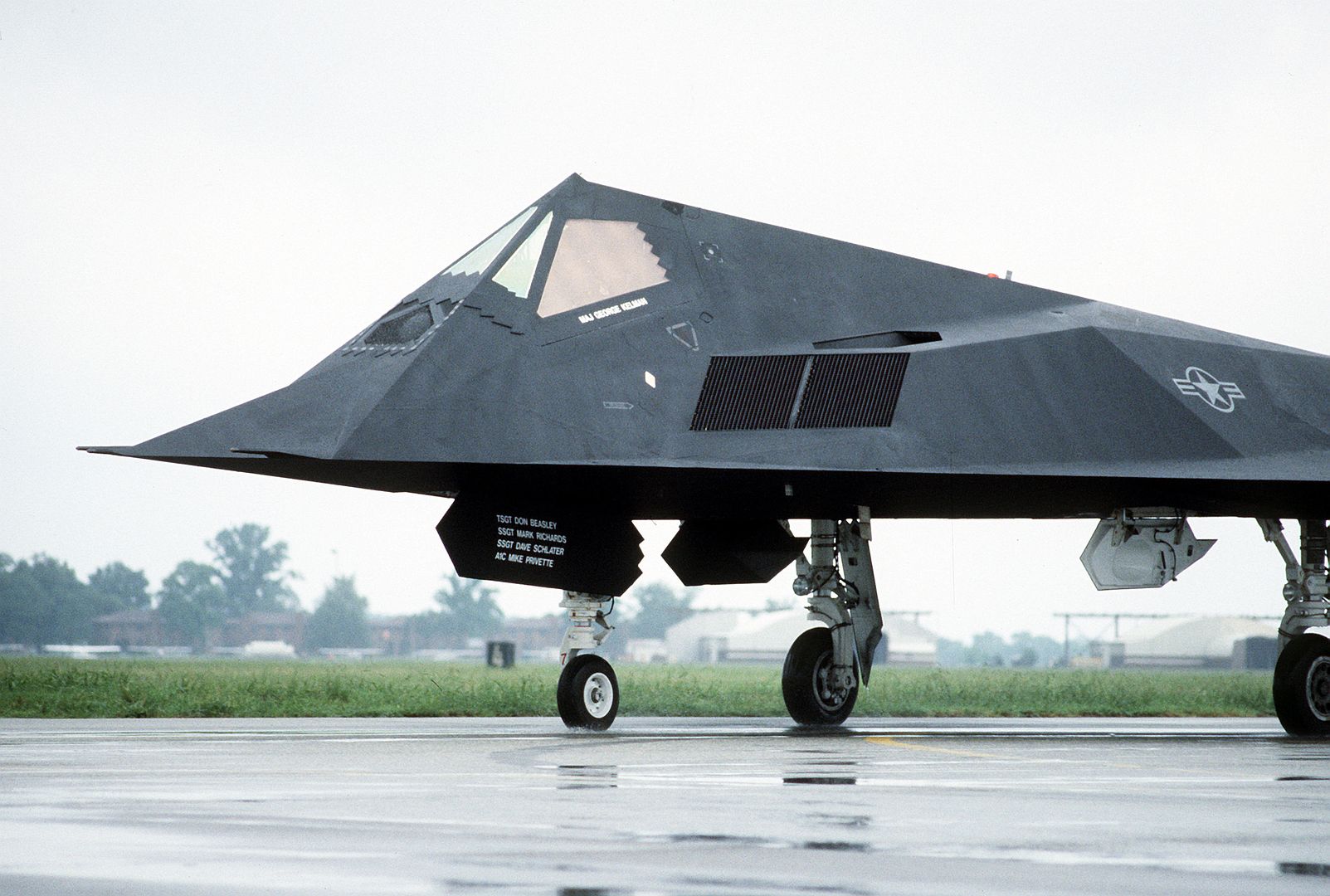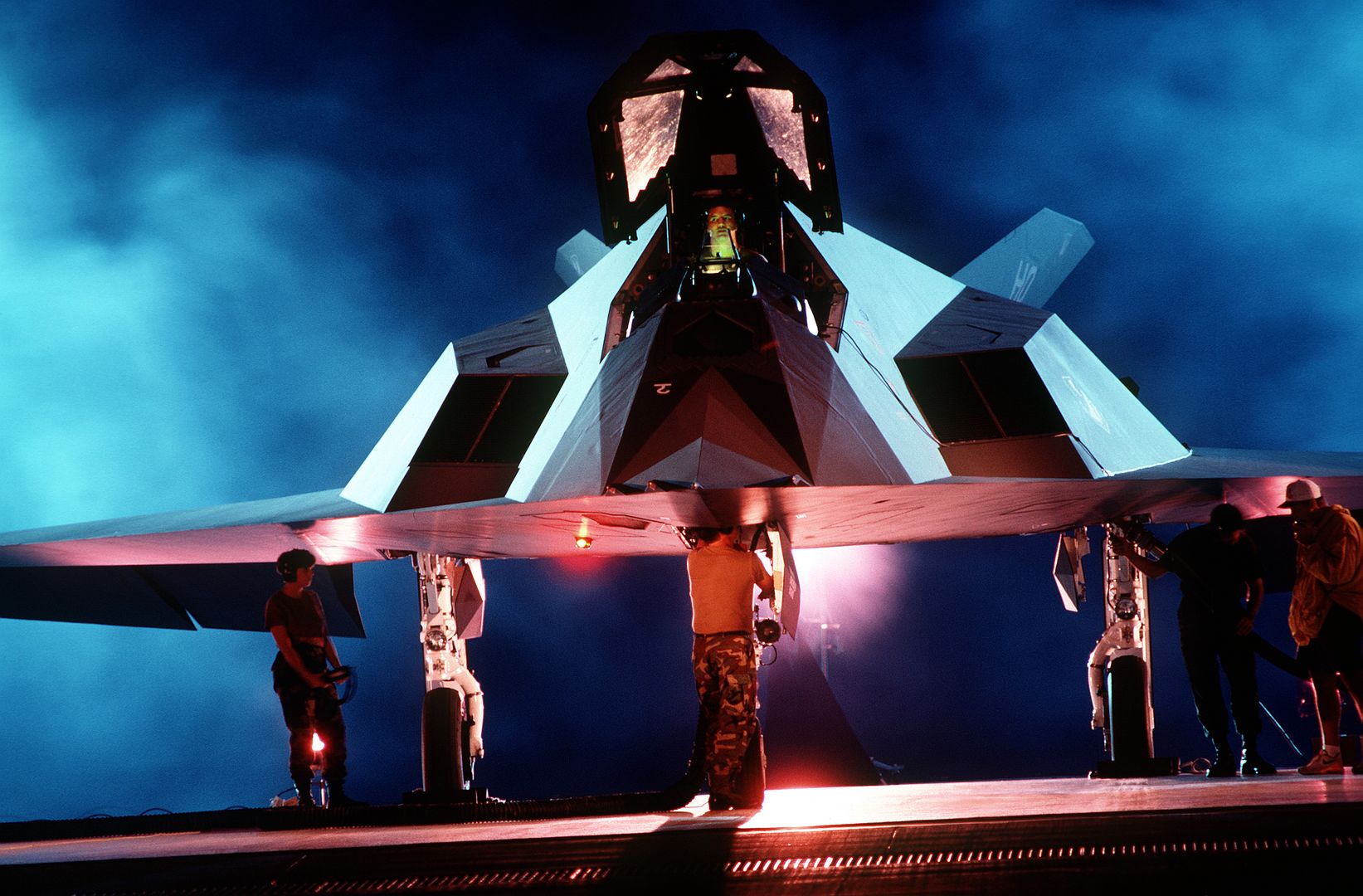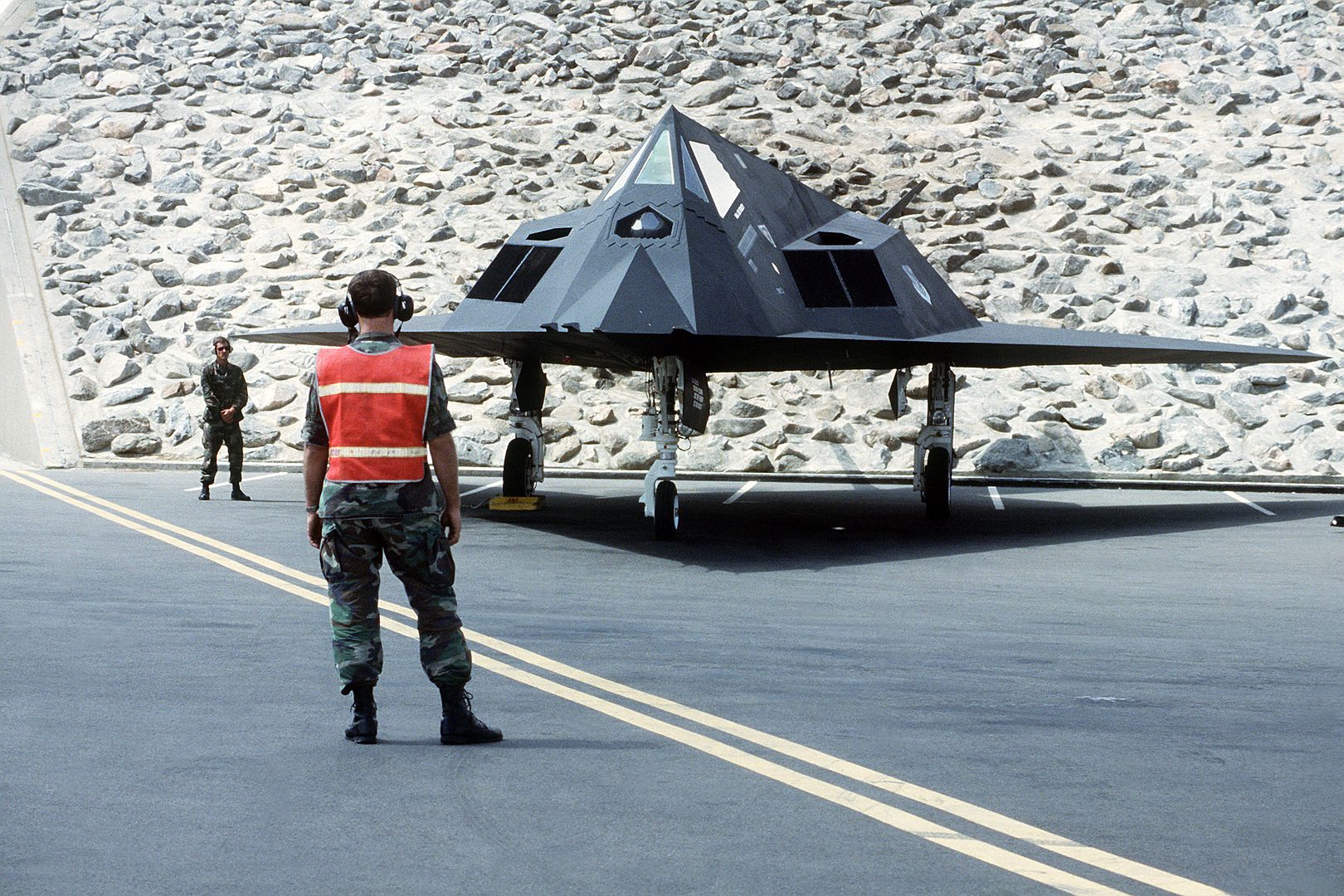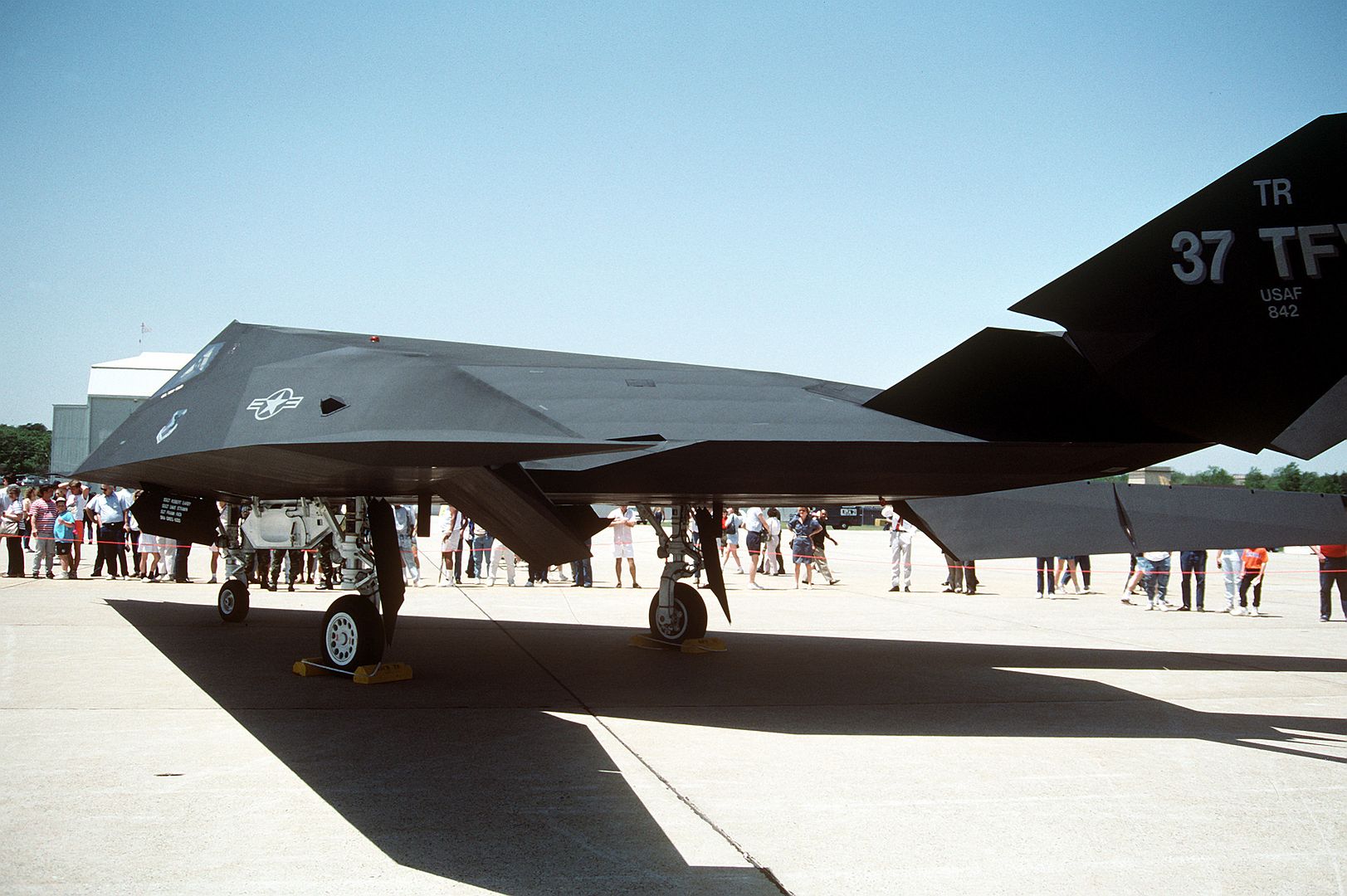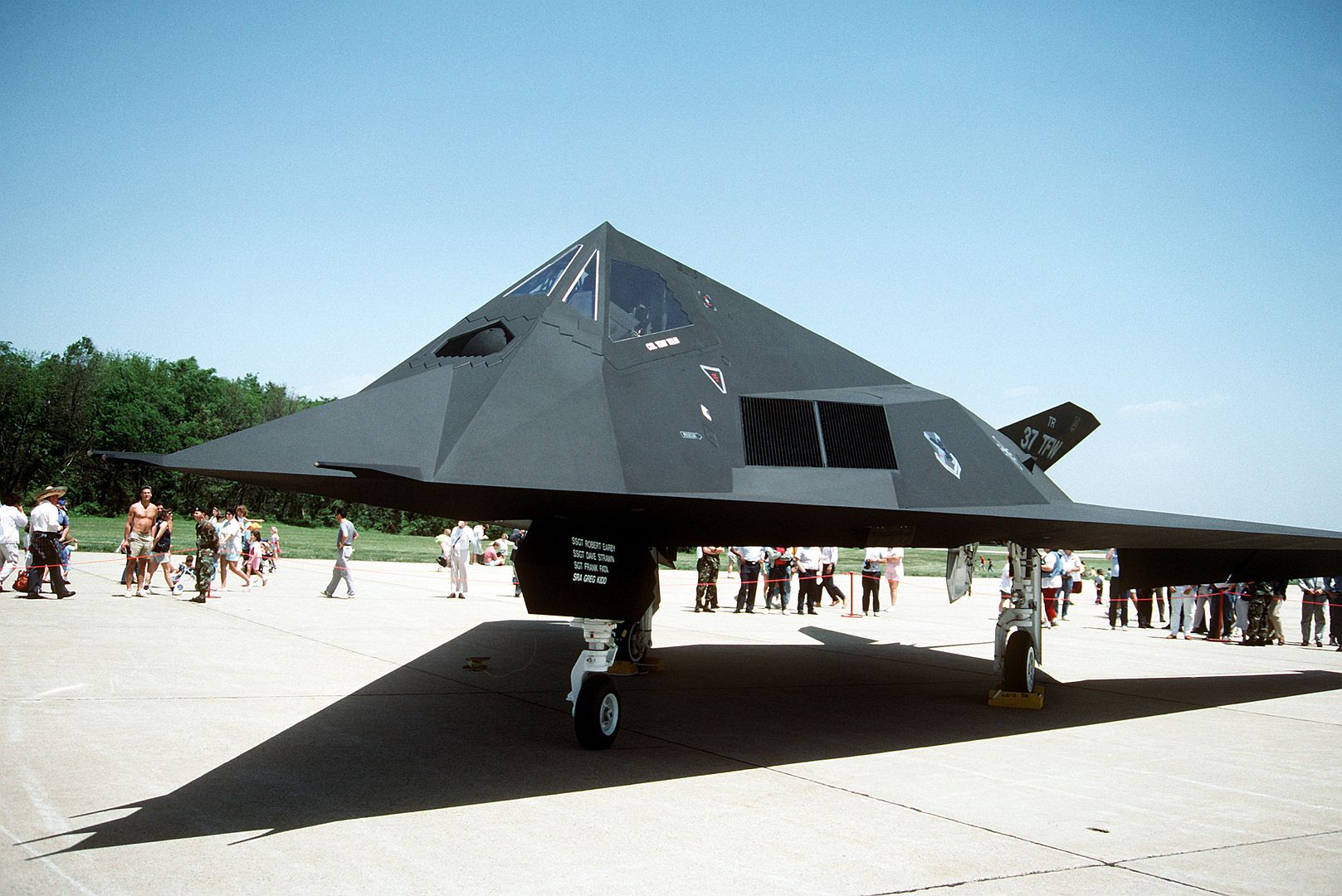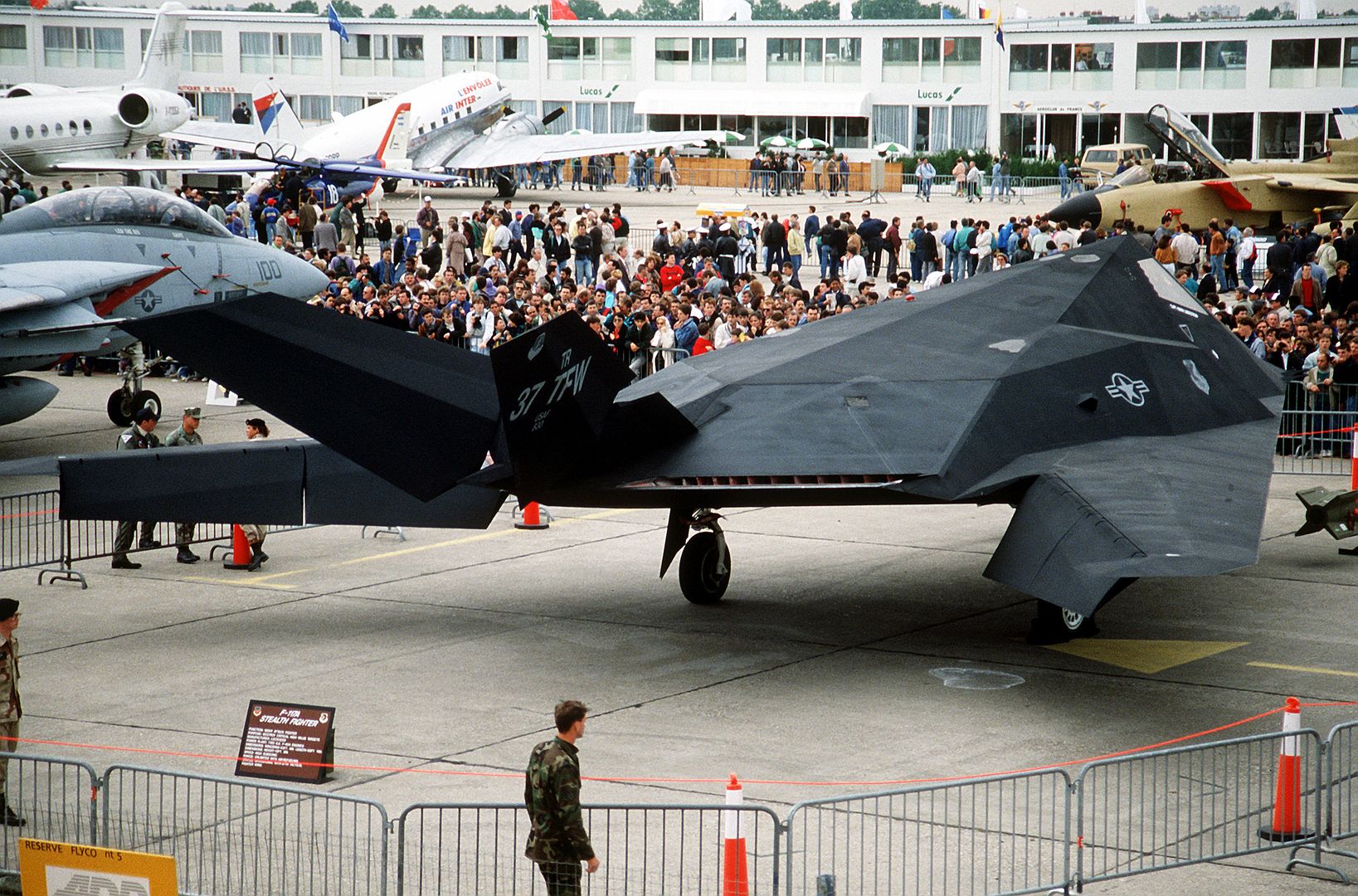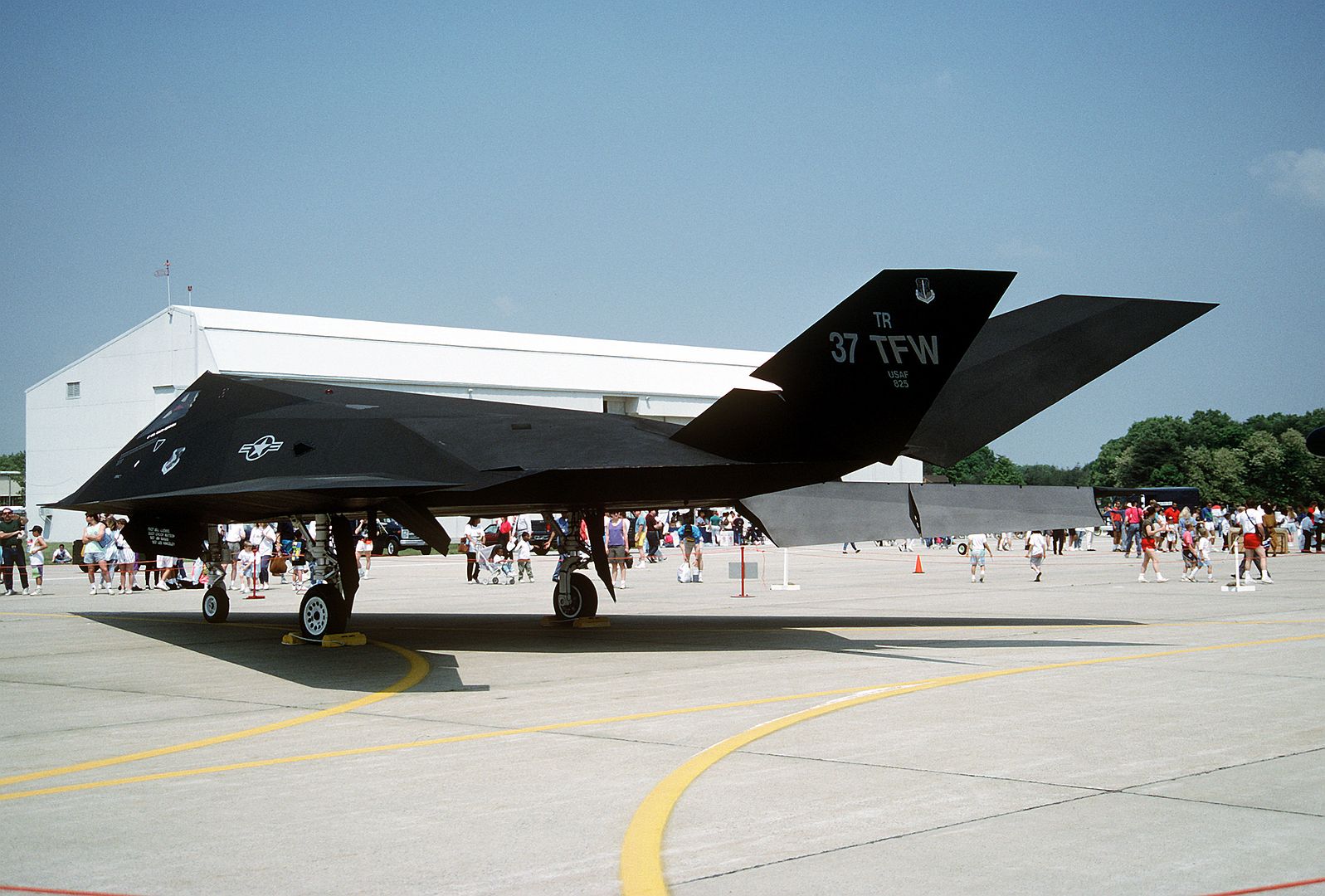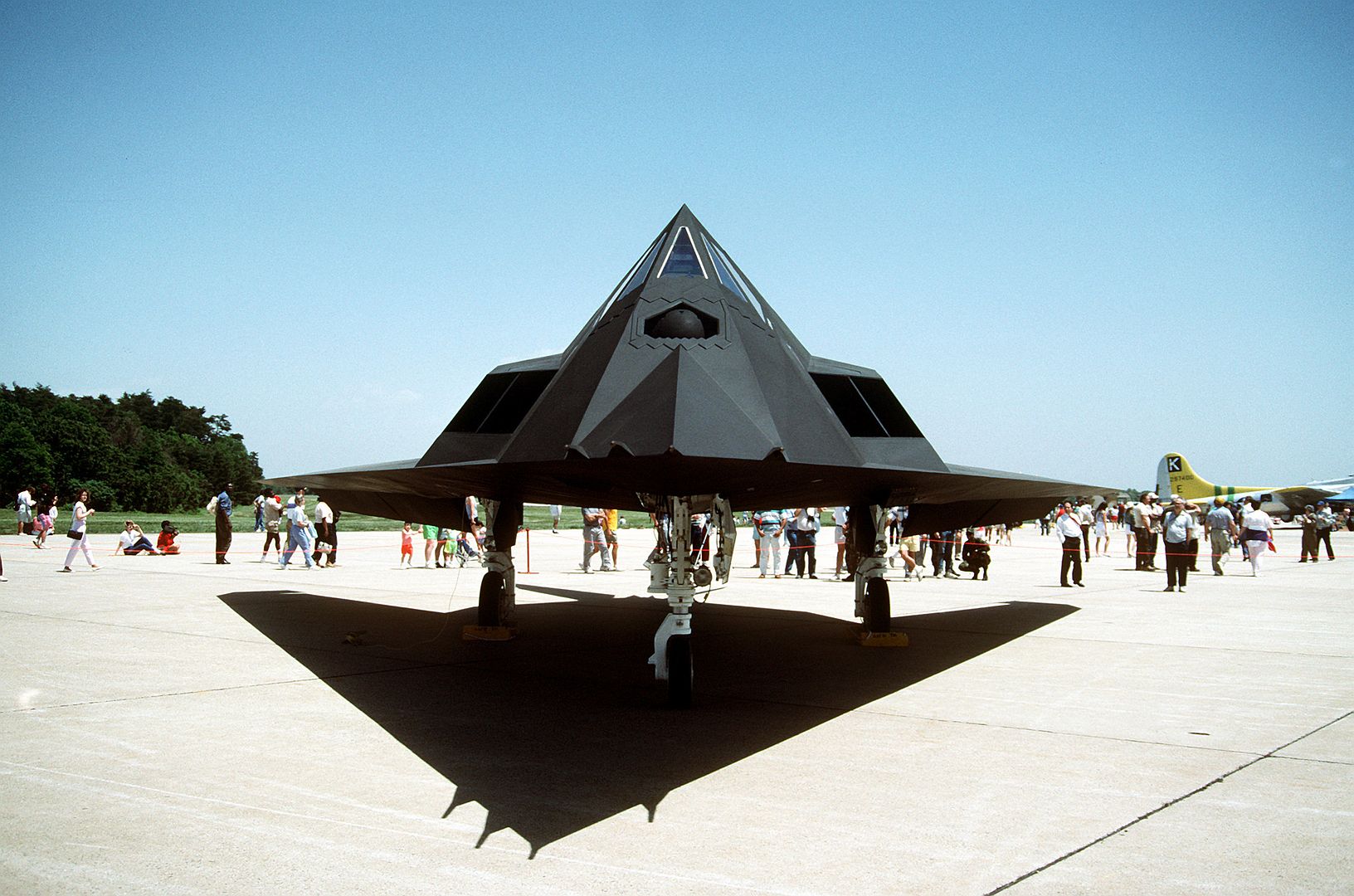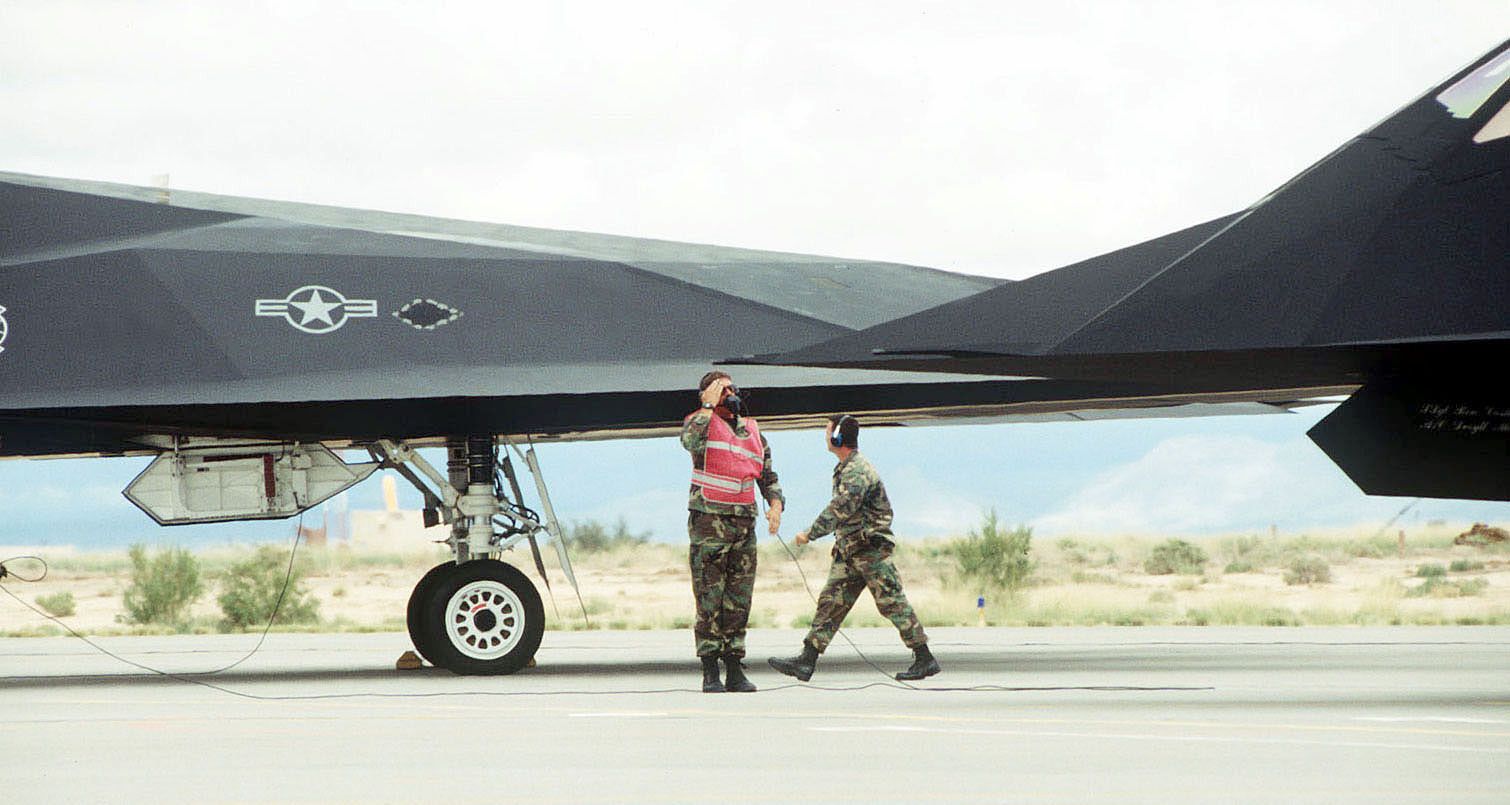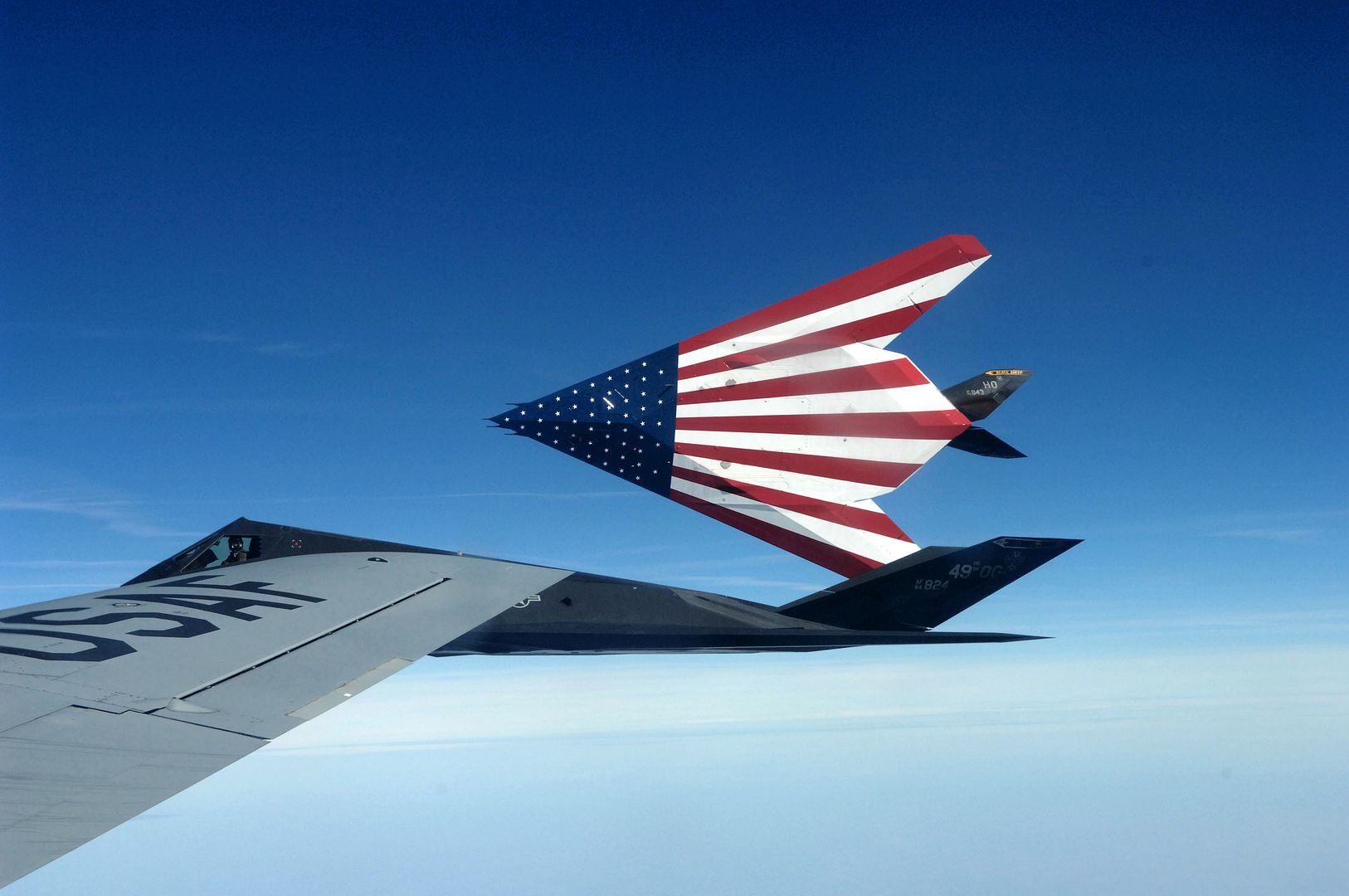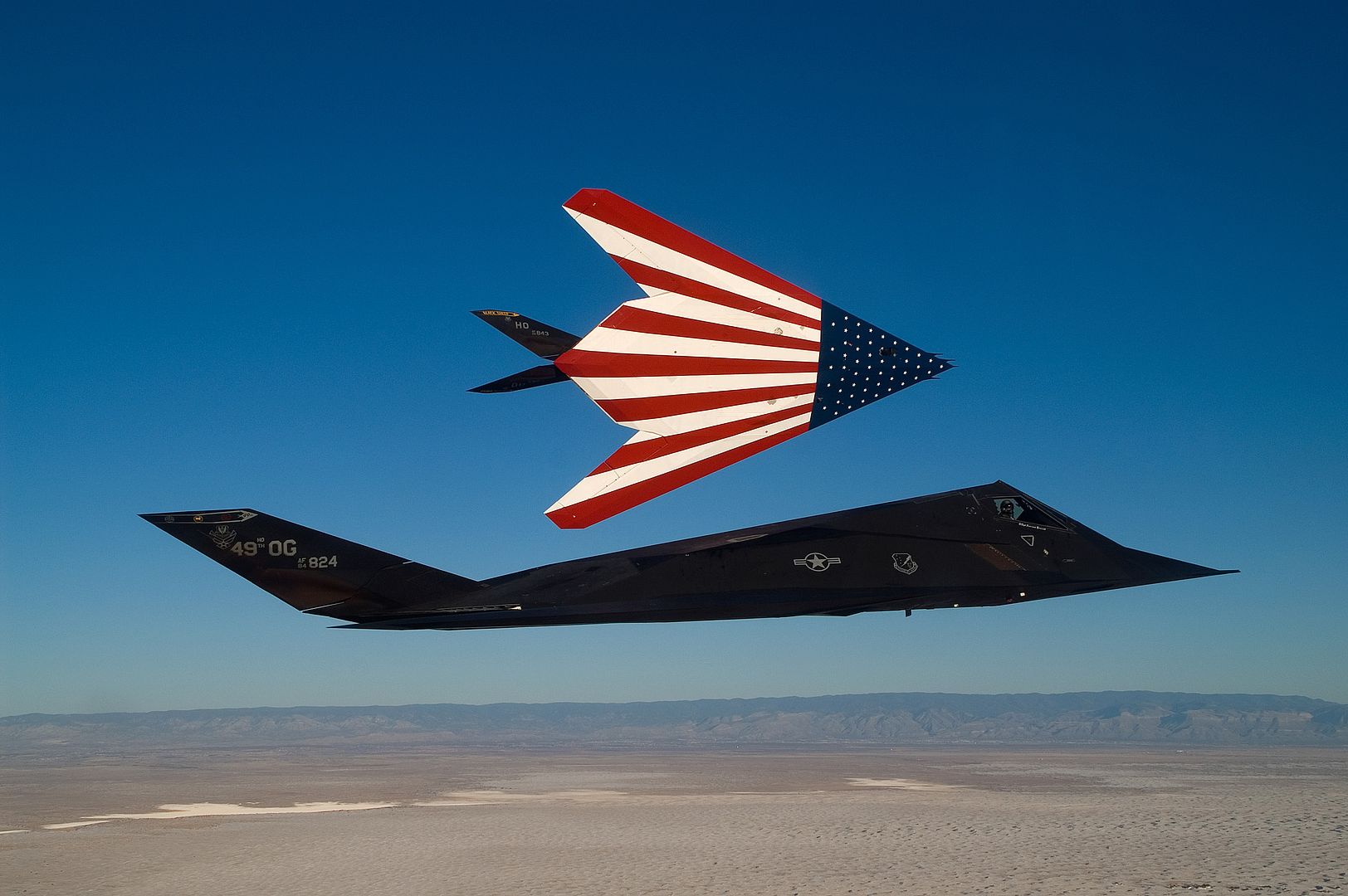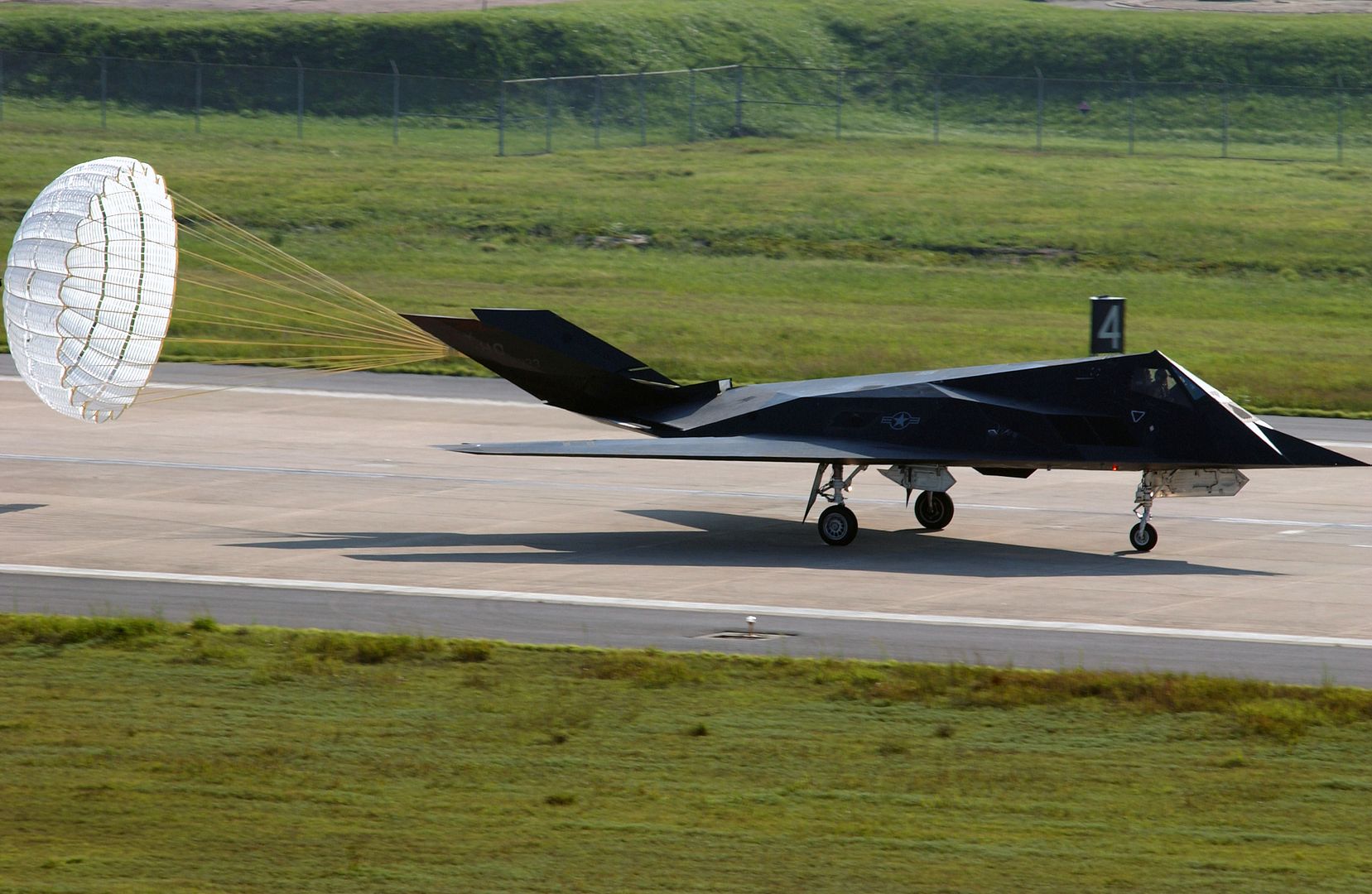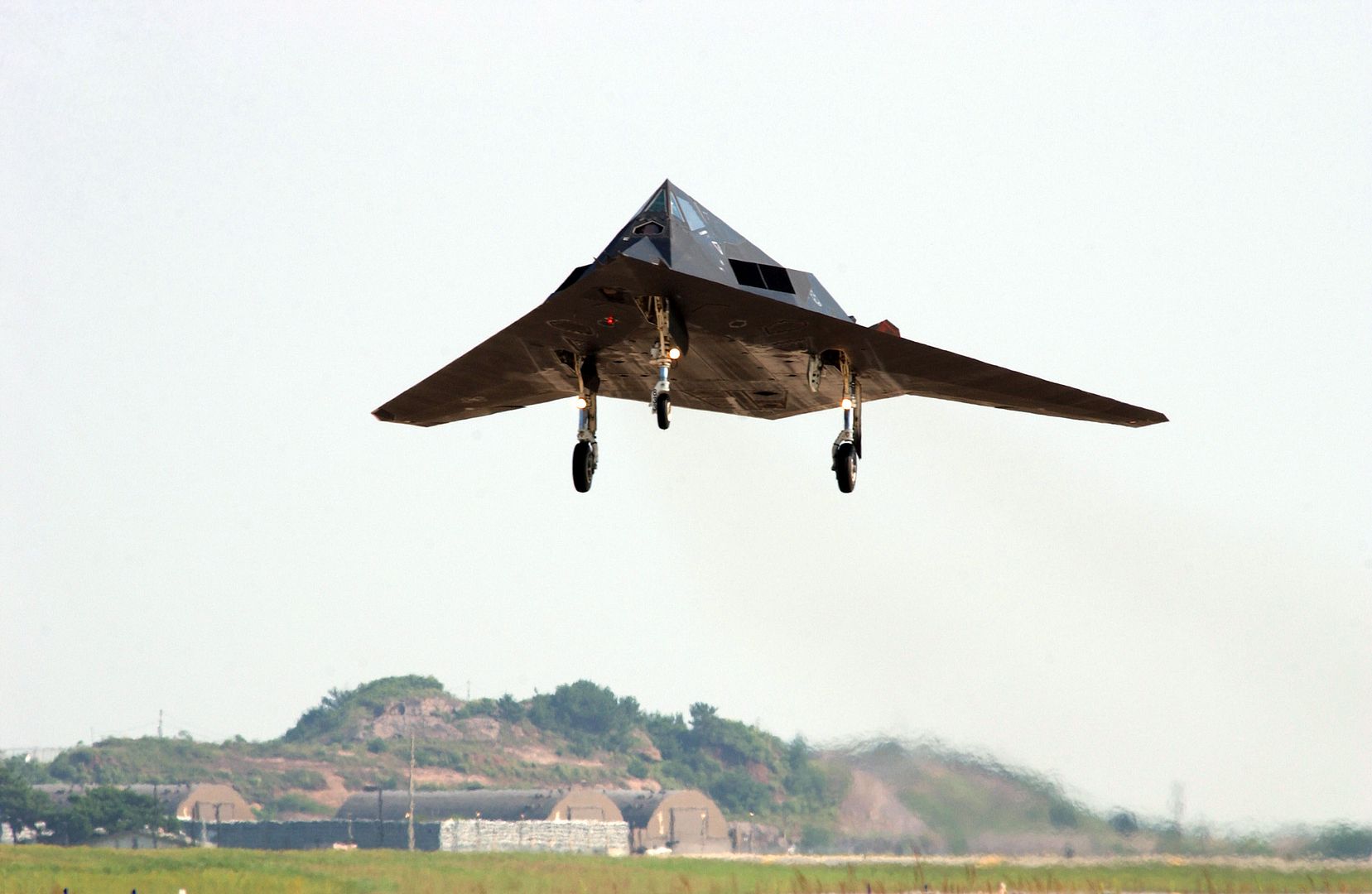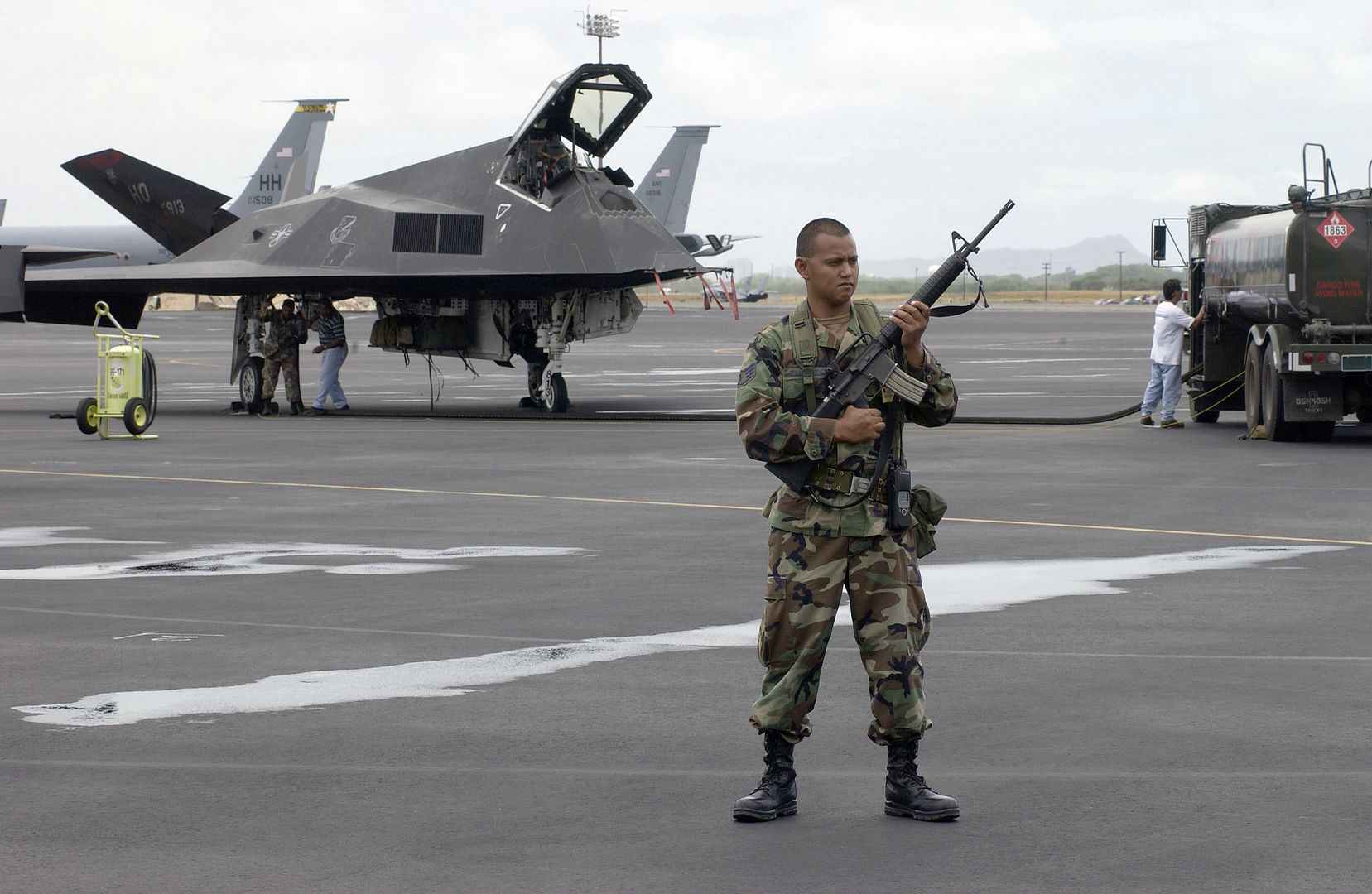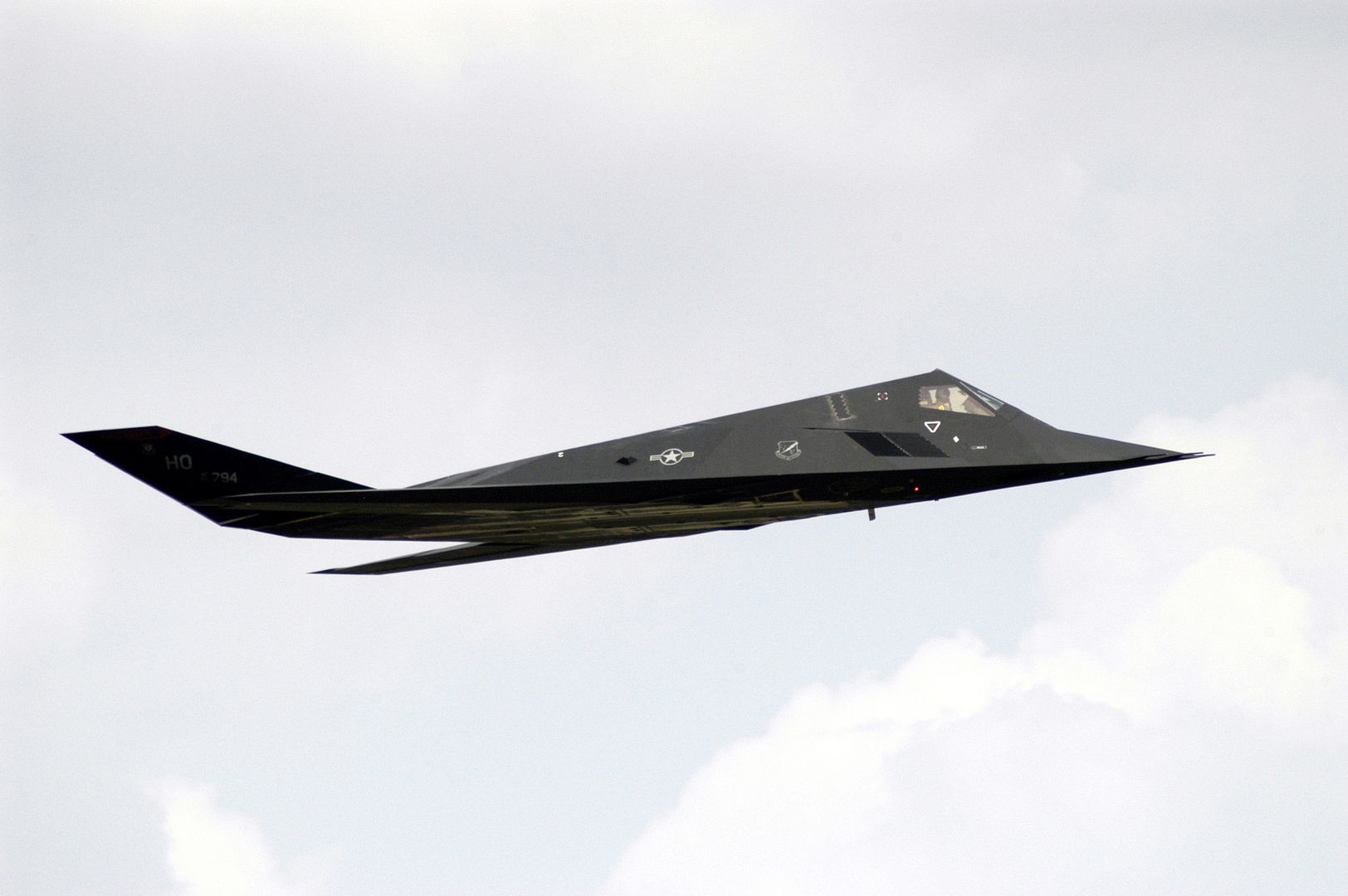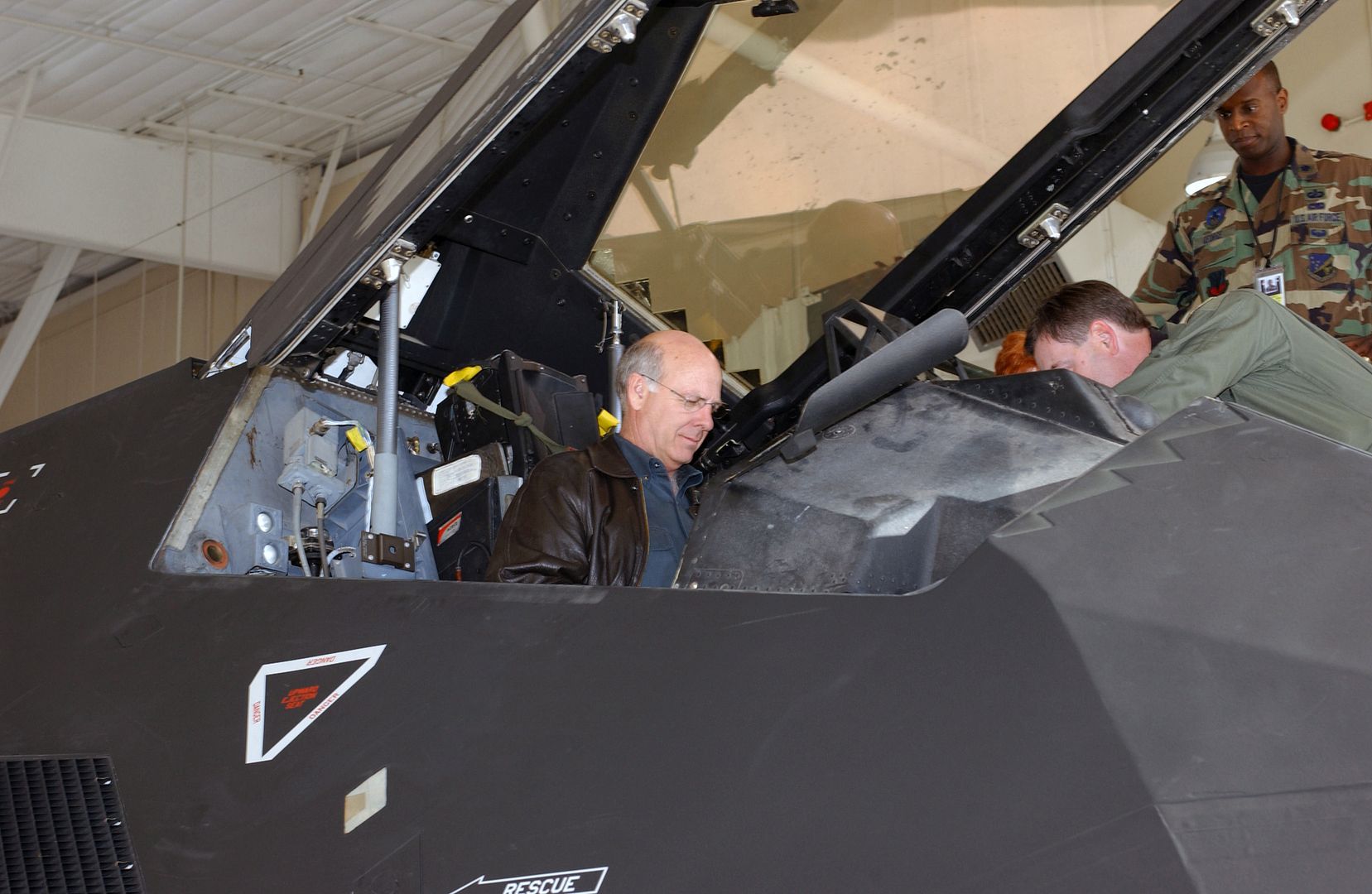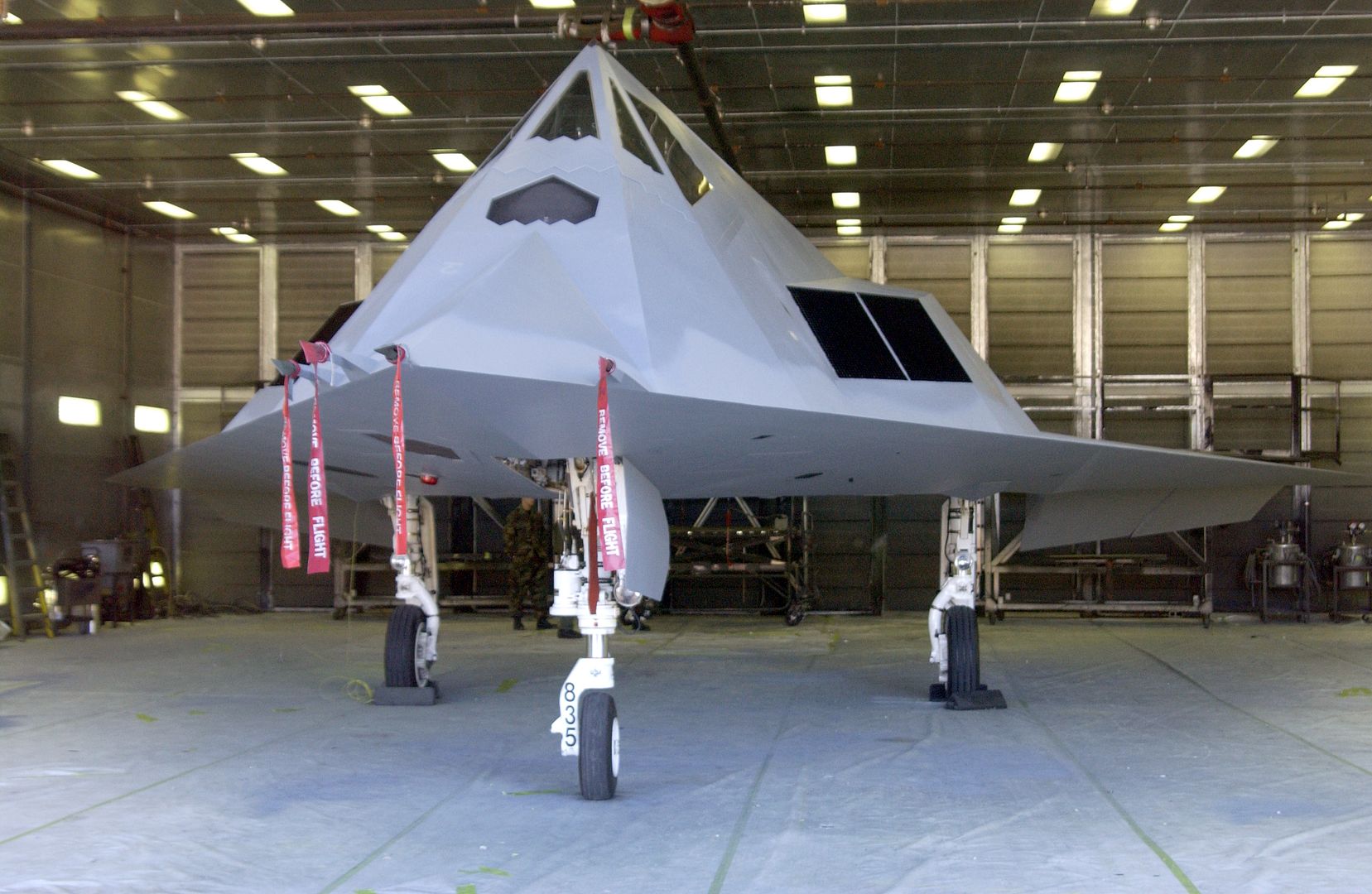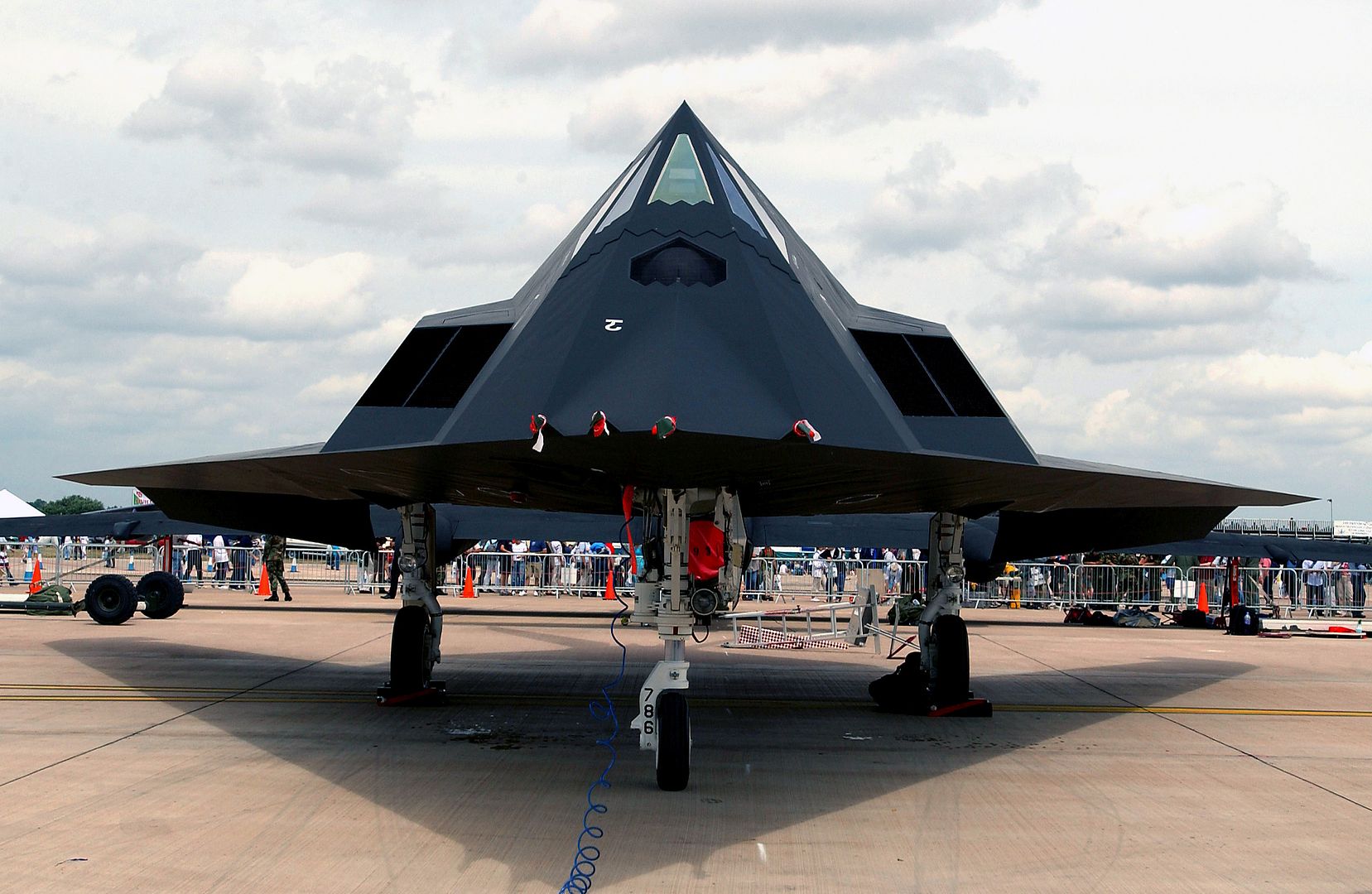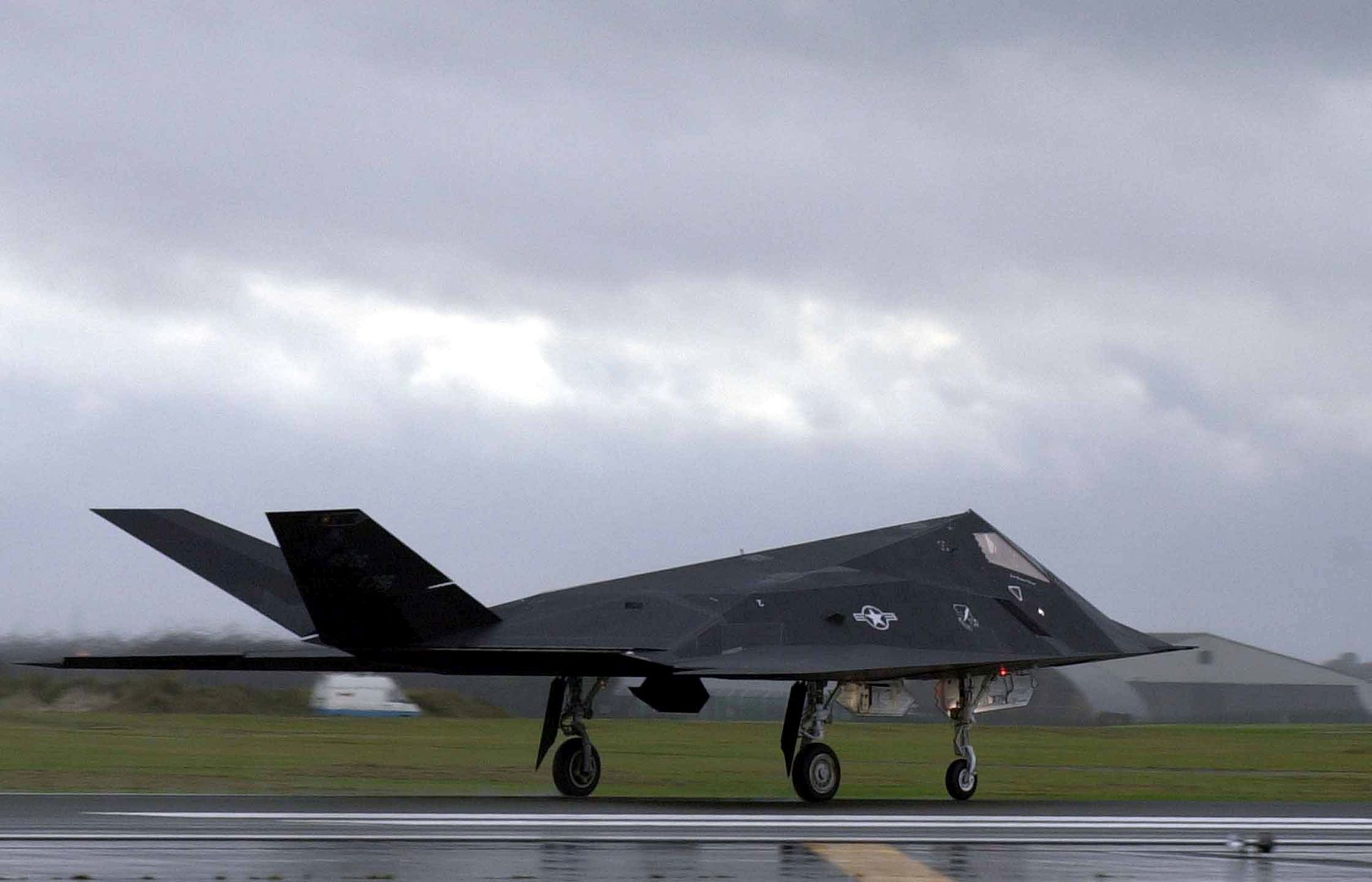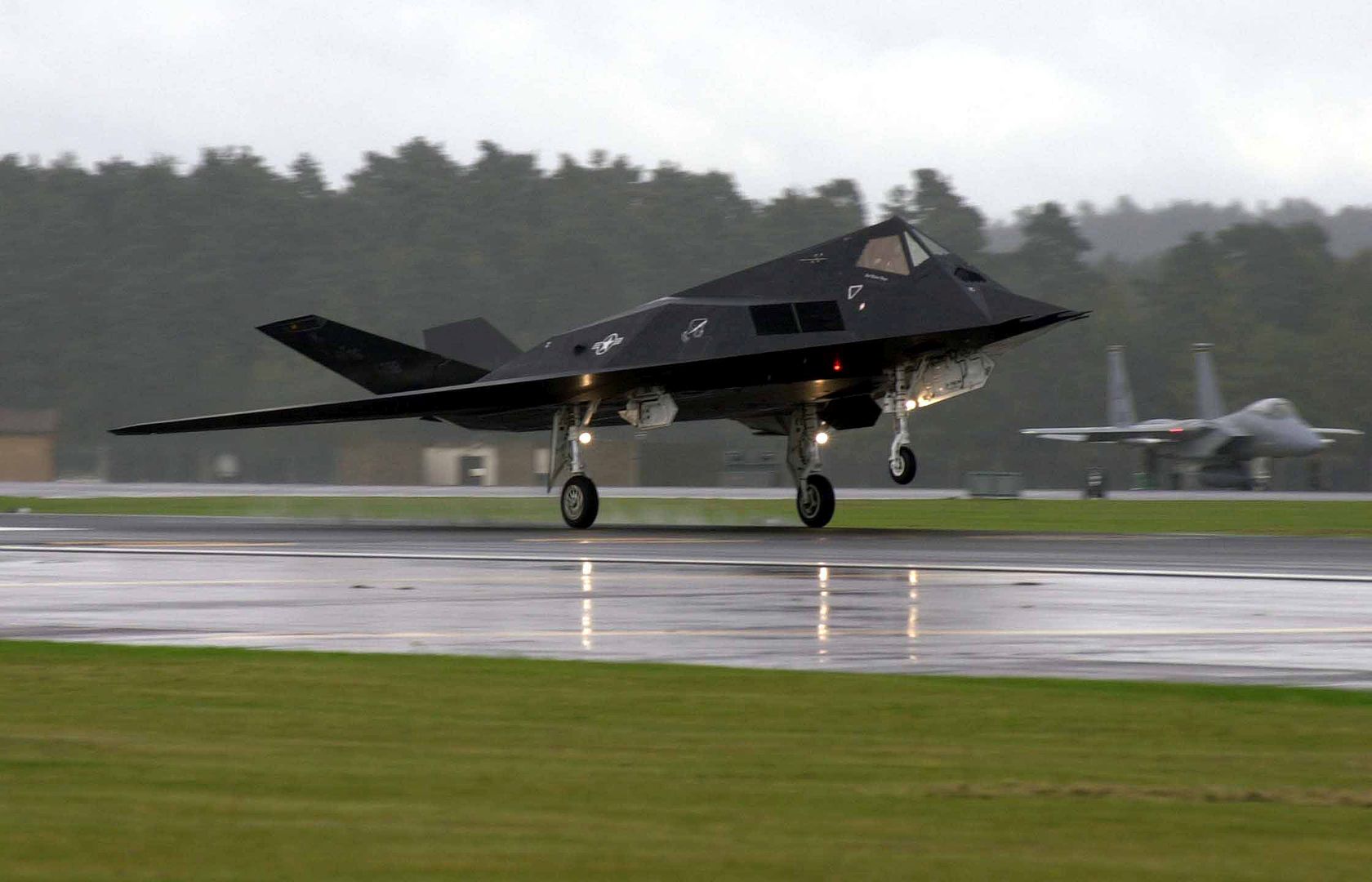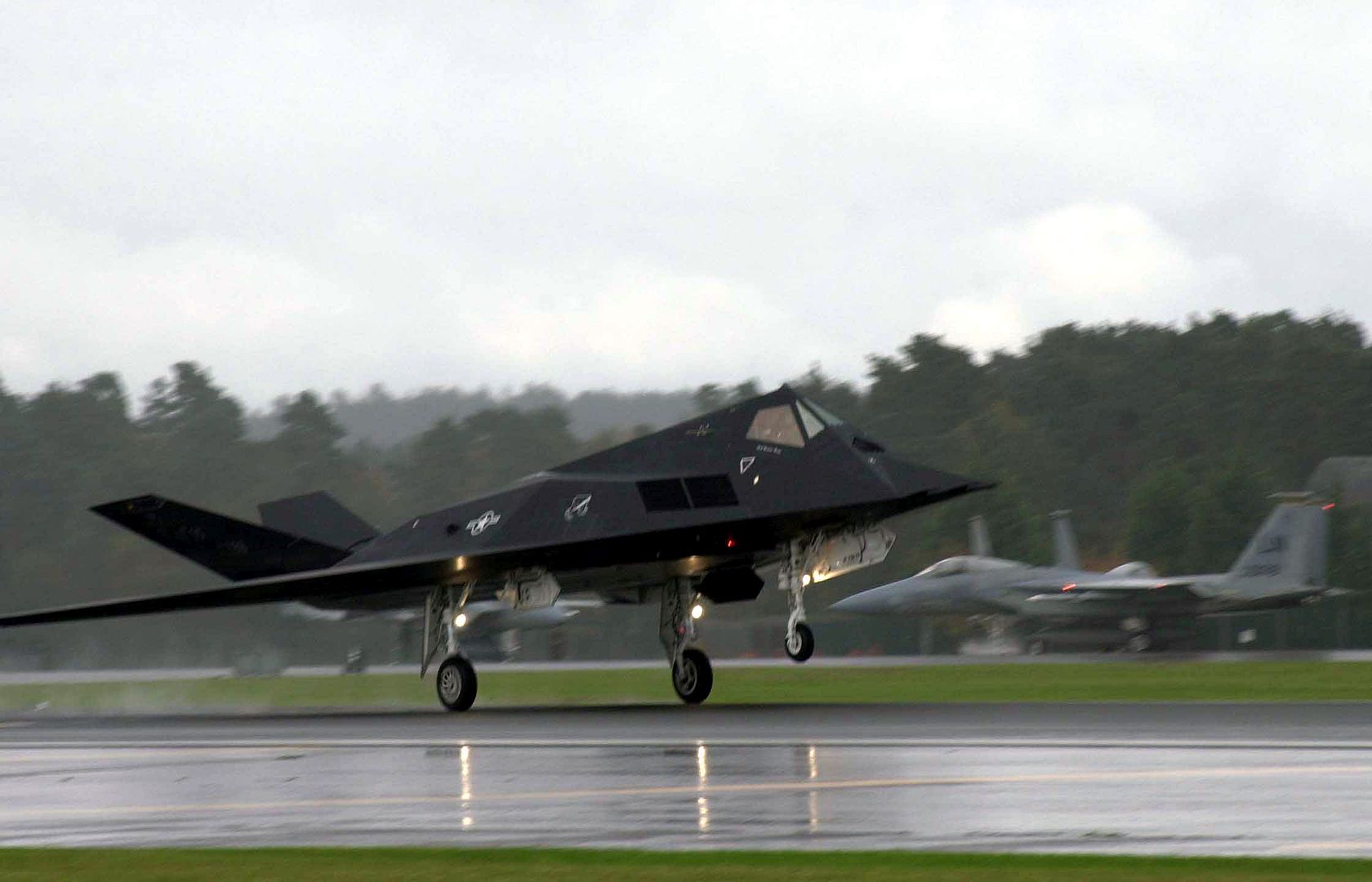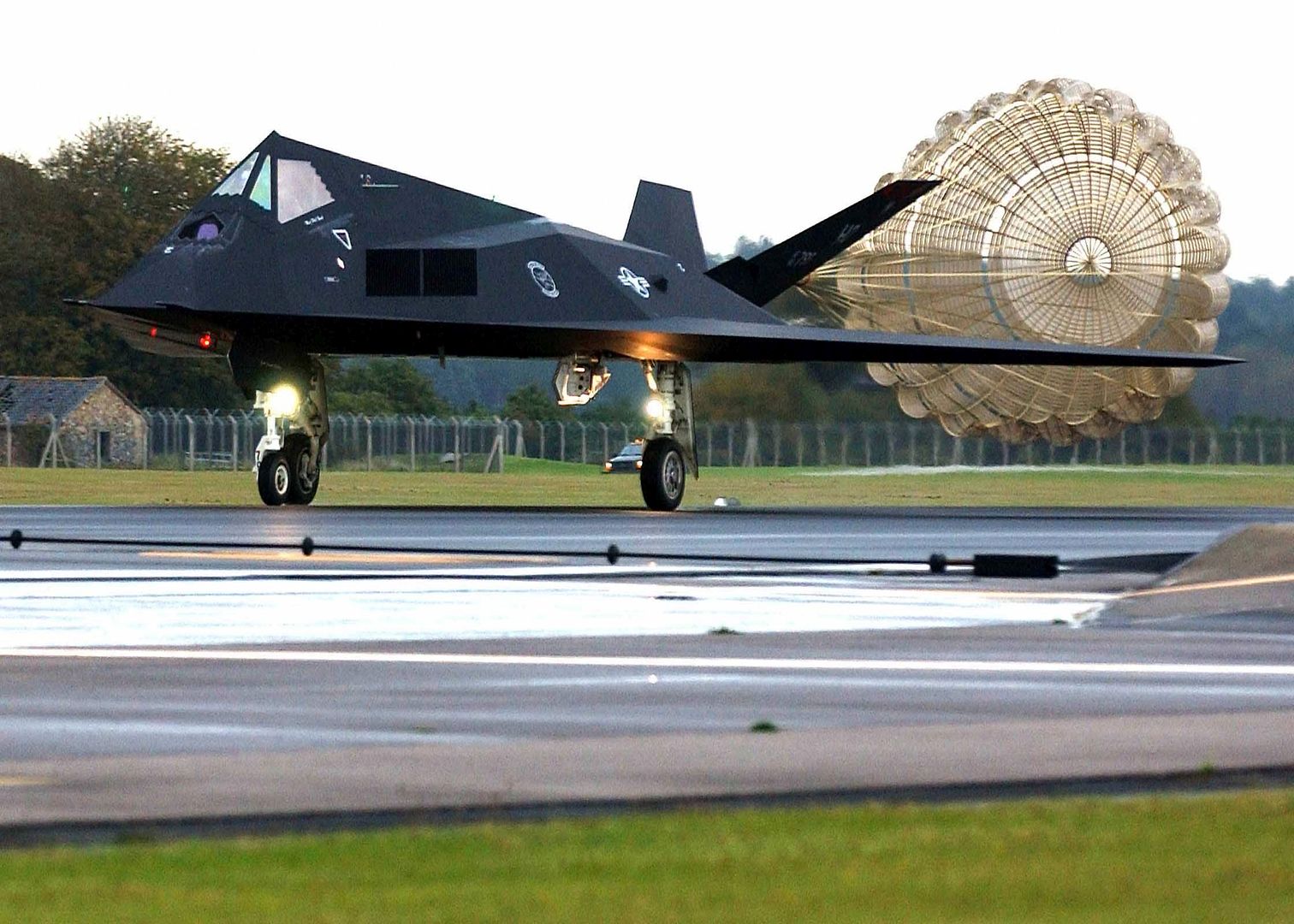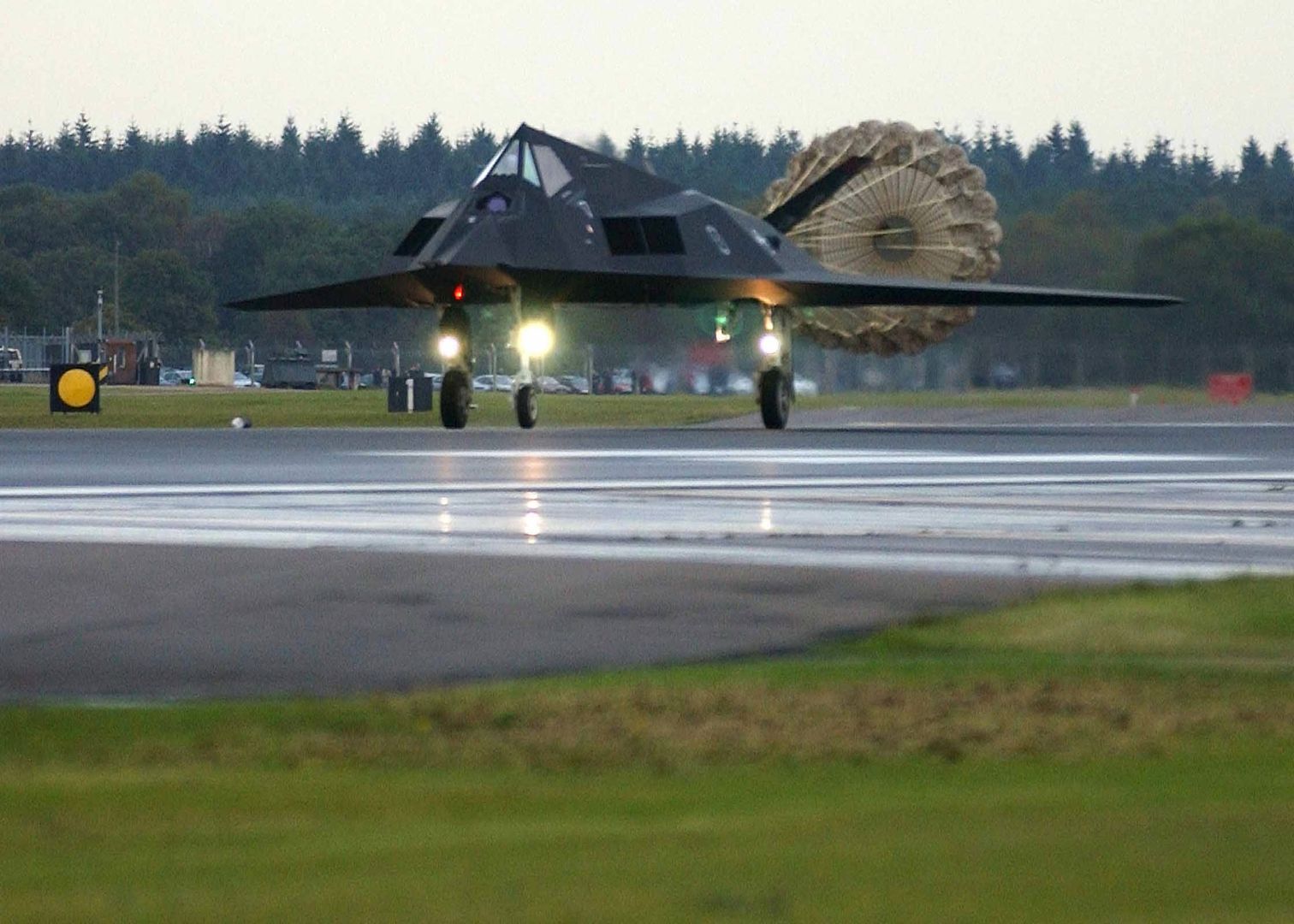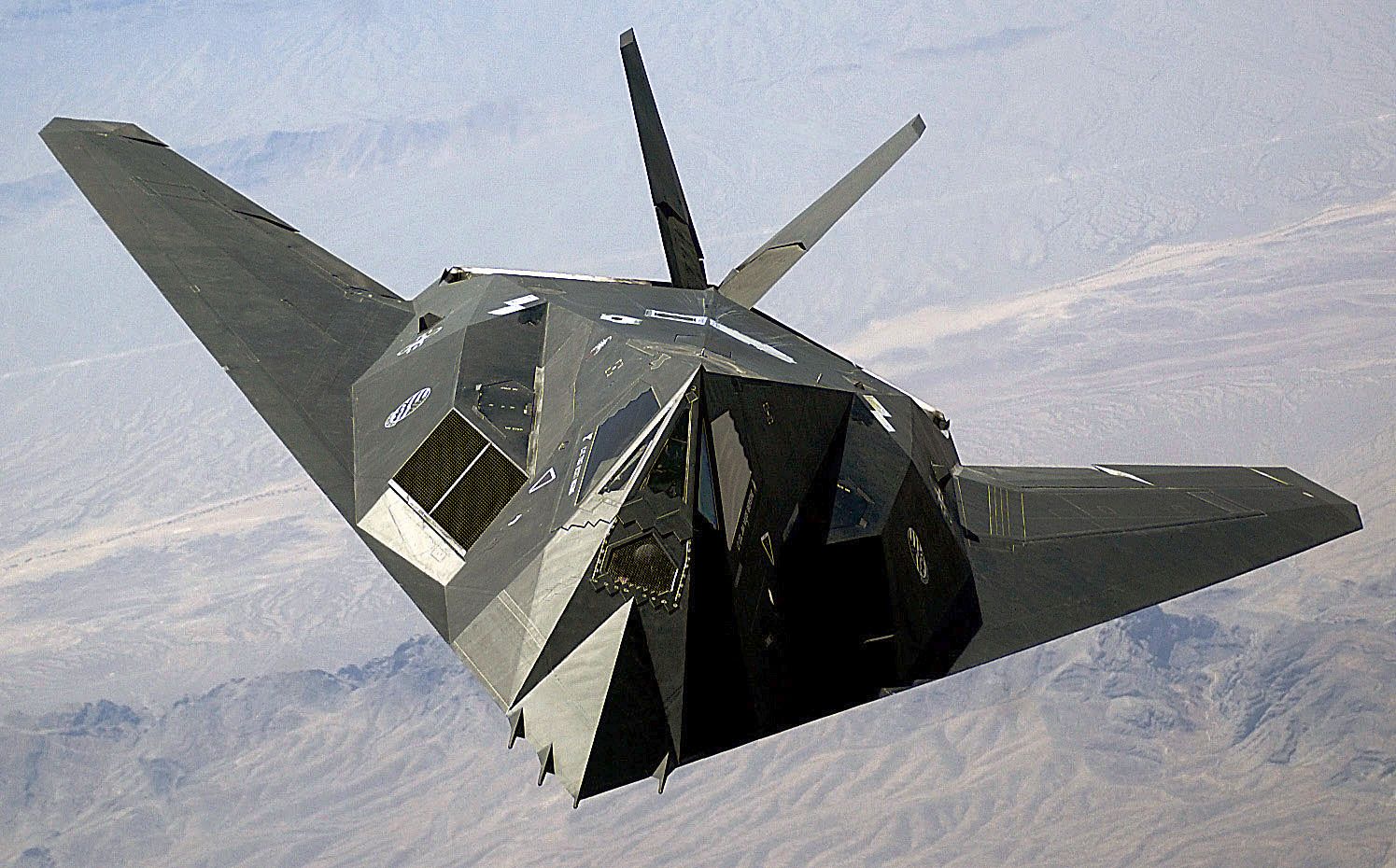Forums
- Forums
- Duggy's Reference Hangar
- USAAF / USN Library
- Lockheed F-117A NightHawk
Lockheed F-117A NightHawk
Post a reply
- Go to Previous topic
- Go to Next topic
- Go to Welcome
- Go to Introduce Yourself
- Go to General Discussion
- Go to Screenshots, Images and Videos
- Go to Off topic
- Go to Works in Progress
- Go to Skinning Tips / Tutorials
- Go to Skin Requests
- Go to IJAAF Library
- Go to Luftwaffe Library
- Go to RAF Library
- Go to USAAF / USN Library
- Go to Misc Library
- Go to The Ops Room
- Go to Made in Germany
- Go to Campaigns and Missions
- Go to Works in Progress
- Go to Juri's Air-Raid Shelter
- Go to Campaigns and Missions
- Go to Works in Progress
- Go to Skinpacks
- Go to External Projects Discussion
- Go to Books & Resources
-
7 years agoSun Aug 05 2018, 07:35pm
 Main AdminThe Lockheed F-117 Nighthawk is an American single-seat, twin-engine stealth attack aircraft that was developed by Lockheed's secretive Skunk Works division and operated by the United States Air Force (USAF). The F-117 was based on the Have Blue technology demonstrator.
Main AdminThe Lockheed F-117 Nighthawk is an American single-seat, twin-engine stealth attack aircraft that was developed by Lockheed's secretive Skunk Works division and operated by the United States Air Force (USAF). The F-117 was based on the Have Blue technology demonstrator.
The Nighthawk was the first operational aircraft to be designed around stealth technology. Its maiden flight took place in 1981, and the aircraft achieved initial operating capability status in 1983. The Nighthawk was shrouded in secrecy until it was revealed to the public in 1988. Of the 64 F-117s built, 59 were production versions, with the other five being demonstrators/prototypes.
The F-117 was widely publicized for its role in the Persian Gulf War of 1991. Although it was commonly referred to as the "Stealth Fighter", it was strictly an attack aircraft. F-117s took part in the conflict in Yugoslavia, where one was shot down by a surface-to-air missile (SAM) in 1999; it was the only Nighthawk to be lost in combat. The U.S. Air Force retired the F-117 in 2008, primarily due to the fielding of the F-22 Raptor.
Background and Have Blue
In 1964, Pyotr Ufimtsev, a Soviet mathematician, published a seminal paper titled Method of Edge Waves in the Physical Theory of Diffraction in the journal of the Moscow Institute for Radio Engineering, in which he showed that the strength of the radar return from an object is related to its edge configuration, not its size.Ufimtsev was extending theoretical work published by the German physicist Arnold Sommerfeld. Ufimtsev demonstrated that he could calculate the radar cross-section across a wing's surface and along its edge. The obvious and logical conclusion was that even a large aircraft could reduce its radar signature by exploiting this principle. However, the resulting design would make the aircraft aerodynamically unstable, and the state of computer technology in the early 1960s could not provide the kinds of flight computers which would later allow aircraft such as the F-117 and B-2 Spirit to stay airborne. By the 1970s, when Lockheed analyst Denys Overholser found Ufimtsev's paper, computers and software had advanced significantly, and the stage was set for the development of a stealthy airplane.
The F-117 was born after combat experience in the Vietnam War when increasingly sophisticated Soviet surface-to-air missiles (SAMs) downed heavy bombers. It was a black project, an ultra-secret program for much of its life: very few people in the Pentagon knew the program even existed, until the F-117s were revealed to the public in 1988.The project began in 1975 with a model called the "Hopeless Diamond" (a wordplay on the Hope Diamond because of its appearance). The following year, the Defense Advanced Research Projects Agency (DARPA) issued Lockheed Skunk Works a contract to build and test two Stealth Strike Fighters, under the code name "Have Blue". These subscale aircraft incorporated jet engines of the Northrop T-38A, fly-by-wire systems of the F-16, landing gear of the A-10, and environmental systems of the C-130. By bringing together existing technology and components, Lockheed built two demonstrators under budget, at $35 million for both aircraft, and in record time.
he maiden flight of the demonstrators occurred on 1 December 1977. Although both aircraft were lost during the demonstration program, test data proved positive. The success of Have Blue led the government to increase funding for stealth technology. Much of that increase was allocated towards the production of an operational stealth aircraft, the Lockheed F-117A, under the program code name "Senior Trend".
Senior Trend
The decision to produce the F-117A was made on 1 November 1978, and a contract was awarded to Lockheed Advanced Development Projects, popularly known as the Skunk Works, in Burbank, California. The program was led by Ben Rich, with Alan Brown as manager of the project. Rich called on Bill Schroeder, a Lockheed mathematician, and Denys Overholser, a computer scientist, to exploit Ufimtsev's work. The three designed a computer program called "Echo", which made it possible to design an airplane with flat panels, called facets, which were arranged so as to scatter over 99% of a radar's signal energy "painting" the aircraft.
The first YF-117A, serial number 79-0780, made its maiden flight from Groom Lake, Nevada, on 18 June 1981, only 31 months after the full-scale development decision. The first production F-117A was delivered in 1982, and operational capability was achieved in October 1983.The 4450th Tactical Group stationed at Nellis AFB, Nevada were tasked with the operational development of the early F-117, and between 1981 (prior to the arrival of the first models) and 1989 they used LTV A-7 Corsair IIs for training, to bring all pilots to a common flight training baseline and later as chase planes for F-117A tests.
The Air Force denied the existence of the aircraft until 10 November 1988, when Assistant Secretary of Defense J. Daniel Howard displayed a grainy photograph at a Pentagon press conference, disproving the many inaccurate rumors about the shape of the secret "F-19". After the announcement pilots could fly the F-117 during daytime and no longer needed to be associated with the A-7, flying the T-38 supersonic trainer for travel and training instead. In April 1990, two F-117 aircraft were flown into Nellis Air Force Base, Nevada, arriving during daylight and publicly displayed to a crowd of tens of thousands.
Five Full Scale Development (FSD) aircraft were built, designated "YF-117A". The last of 59 production F-117s were delivered on 3 July 1990.
As the Air Force has stated, "Streamlined management by Aeronautical Systems Center, Wright-Patterson AFB, Ohio, combined breakthrough stealth technology with concurrent development and production to rapidly field the aircraft... The F-117A program demonstrates that a stealth aircraft can be designed for reliability and maintainability."
Designation
The operational aircraft was officially designated "F-117A". Most modern U.S. military aircraft use post-1962 designations in which the designation "F" is usually an air-to-air fighter, "B" is usually a bomber, "A" is usually a ground-attack aircraft, etc. (Examples include the F-15, the B-2, and the A-6.) The F-117 is primarily an attack aircraft, so its "F" designation is inconsistent with the DoD system. This is an inconsistency that has been repeatedly employed by the U.S. Air Force with several of its attack aircraft since the late 1950s, including the Republic F-105 Thunderchief and General Dynamics F-111 Aardvark. A televised documentary quoted a senior member of the F-117A development team as saying that the top-notch USAF fighter pilots required to fly the new aircraft were more easily attracted to an aircraft with an "F" designation for fighter, as opposed to a bomber ("B") or attack ("A") designation.
The designation "F-117" seems to indicate that it was given an official designation prior to the 1962 U.S. Tri-Service Aircraft Designation System and could be considered numerically to be a part of the earlier "Century series" of fighters. The assumption prior to the revealing of the aircraft to the public was that it would likely receive the F-19 designation as that number had not been used. However, there were no other aircraft to receive a "100" series number following the F-111. Soviet fighters obtained by the U.S. via various means under the Constant Peg program were given F-series numbers for their evaluation by U.S. pilots, and with the advent of the Teen Series fighters, most often Century Series designations.
As with other exotic military aircraft types flying in the southern Nevada area, such as captured fighters, an arbitrary radio call of "117" was assigned. This same radio call had been used by the enigmatic 4477th Test and Evaluation Squadron, also known as the "Red Hats" or "Red Eagles", that often had flown expatriated MiG jet fighters in the area, but there was no relationship to the call and the formal F-19 designation then being considered by the Air Force. Apparently, use of the "117" radio call became commonplace and when Lockheed released its first flight manual (i.e., the Air Force "dash one" manual for the aircraft), F-117A was the designation printed on the cover.
Design
When the Air Force first approached Lockheed with the stealth concept, Skunk Works Director Kelly Johnson proposed a rounded design. He believed smoothly blended shapes offered the best combination of speed and stealth. However, his assistant, Ben Rich, showed that faceted-angle surfaces would provide significant reduction in radar signature, and the necessary aerodynamic control could be provided with computer units. A May 1975 Skunk Works report, ?Progress Report No. 2, High Stealth Conceptual Studies,? showed the rounded concept, which was rejected in favor of the flat-sided approach.
The resulting unusual design surprised and puzzled experienced pilots; a Royal Air Force pilot, who flew it as an exchange officer while it was still a secret project, stated that when he first saw a photograph of the F-117, he "promptly giggled and thought to [himself] 'this clearly can't fly'". Early stealth aircraft were designed with a focus on minimal radar cross-section (RCS) rather than aerodynamic performance. Highly-stealthy aircraft like the F-117 Nighthawk are aerodynamically unstable in all three aircraft principal axes and require constant flight corrections from a fly-by-wire (FBW) flight system to maintain controlled flight. It is shaped to deflect radar signals and is about the size of an F-15 Eagle.
The single-seat Nighthawk is powered by two non-afterburning General Electric F404 turbofan engines. It is air refuelable and features a V-tail. The maximum speed is 623 miles per hour (1,003 km/h) at high altitude, the max rate of climb is 2,820 feet (860 m) per minute, and service ceiling is 43,000 to 45,000 feet (13,000 to 14,000 m). The cockpit was quite spacious, with ergonomic displays and controls, but the field of view was somewhat obstructed with a large blind spot to the rear.
Avionics
It has quadruple-redundant fly-by-wire flight controls. To lower development costs, the avionics, fly-by-wire systems, and other parts were derived from the General Dynamics F-16 Fighting Falcon, McDonnell Douglas F/A-18 Hornet and McDonnell Douglas F-15E Strike Eagle. The parts were originally described as spares on budgets for these aircraft, to keep the F-117 project secret.
The aircraft is equipped with sophisticated navigation and attack systems integrated into a digital avionics suite. It navigates primarily by GPS and high-accuracy inertial navigation. Missions are coordinated by an automated planning system that can automatically perform all aspects of an attack mission, including weapons release. Targets are acquired by a thermal imaging infrared system, slaved to a laser rangefinder/laser designator that finds the range and designates targets for laser-guided bombs. The F-117A's split internal bay can carry 5,000 pounds (2,300 kg) of ordnance. Typical weapons are a pair of GBU-10, GBU-12, or GBU-27 laser-guided bombs, two BLU-109 penetration bombs, or two Joint Direct Attack Munitions (JDAMs), a GPS/INS guided stand-off bomb.
Stealth
The F-117 has a Radar cross-section of about 0.001 m2 (0.0108 sq ft). Among the penalties for stealth are lower engine thrust due to losses in the inlet and outlet, a very low wing aspect ratio, and a high sweep angle (50?) needed to deflect incoming radar waves to the sides. With these design considerations and no afterburner, the F-117 is limited to subsonic speeds.
The F-117A carries no radar, which lowers emissions and cross-section, and whether it carries any radar detection equipment is classified.
The F-117A's faceted shape (made from 2-dimensional flat surfaces) resulted from the limitations of the 1970s-era computer technology used to calculate its radar cross-section. Later supercomputers made it possible for subsequent aircraft like the B-2 bomber to use curved surfaces while maintaining stealth, through the use of far more computational resources to perform the additional calculations.
An exhaust plume contributes a significant infrared signature. The F-117 reduces IR signature with a non-circular tail pipe (a slit shape) to minimize the exhaust cross-sectional volume and maximize the mixing of hot exhaust with cool ambient air. The F-117 lacks afterburners, because the hot exhaust would increase the infrared signature, and breaking the sound barrier would produce an obvious sonic boom, as well as surface heating of the aircraft skin which also increases the infrared footprint. As a result, its performance in air combat maneuvering required in a dogfight would never match that of a dedicated fighter aircraft. This was unimportant in the case of this aircraft since it was designed to be a bomber.
Passive (multistatic) radar, bistatic radar and especially multistatic radar systems detect some stealth aircraft better than conventional monostatic radars, since first-generation stealth technology (such as the F-117) reflects energy away from the transmitter's line of sight, effectively increasing the radar cross section (RCS) in other directions, which the passive radars monitor.
Operational history
During the program's early years, from 1984 to mid-1992, the F-117A fleet was based at Tonopah Test Range Airport, Nevada, where it served under the 4450th Tactical Group. Because the F-117 was classified during this time, the unit was officially located at Nellis Air Force Base, Nevada, and equipped with A-7 Corsair II aircraft. All military personnel were permanently assigned to Nellis AFB, and most personnel and their families lived in Las Vegas. This required commercial air and trucking to transport personnel between Las Vegas and Tonopah each week. The 4450th was absorbed by the 37th Tactical Fighter Wing in 1989. In 1992, the entire fleet was transferred to Holloman Air Force Base, New Mexico, under the command of the 49th Fighter Wing. This move also eliminated the Key Air and American Trans Air contract flights to Tonopah, which flew 22,000 passenger trips on 300 flights from Nellis to Tonopah per month.
The F-117 reached initial operating capability status in 1983. The Nighthawk's pilots called themselves "Bandits". Each of the 558 Air Force pilots who have flown the F-117 has a Bandit number, such as "Bandit 52", that indicates the sequential order of their first flight in the F-117.
The F-117 has been used several times in war. Its first mission was during the United States invasion of Panama in 1989.[44] During that invasion two F-117A Nighthawks dropped two bombs on Rio Hato airfield.
During the Gulf War in 1991, the F-117 flew approximately 1,300 sorties and scored direct hits on 1,600 high-value targets in Iraq over 6,905 flight hours. Leaflet drops on Iraqi forces displayed the F-117 destroying ground targets and warned "Escape now and save yourselves". Initial claims of its effectiveness were later found to be overstated. For instance it was claimed that the F-117 made up 2.5% of Coalition tactical aircraft in Iraq and they attacked more than 40% of the strategic targets; this ignored the fact that only 229 Coalition aircraft could drop and designate laser-guided bombs of which 36 F-117 represented 15.7%, and only the USAF had the I-2000 bombs intended for hardened targets, so the F-117 represented 32% of all coalition aircraft that could deliver such bombs. Initial reports of F-117s hitting 80% of their targets were later scaled back to "41?60%". On the first night, they failed to hit 40% of their assigned air-defense targets, including the Air Defense Operations Center in Baghdad, and 8 such targets remained functional out of 10 that could be assessed. In their Desert Storm white paper, the USAF claimed that "the F-117 was the only airplane that the planners dared risk over downtown Baghdad" and that this area was particularly well defended. In fact, most of the air defenses were on the outskirts of the city and many other aircraft hit targets in the downtown area, with minimal casualties when they attacked at night like the F-117. This meant they avoided the optically aimed AAA and infra-red SAMs which were the biggest threat to Coalition aircraft.
The aircraft was operated in secret from Tonopah for almost a decade, but after the Gulf War the aircraft moved to Holloman in 1992 ? however its integration with the USAF's non-stealth "iron jets" occurred slowly. As one senior F-117A pilot later said: Because of ongoing secrecy others continued to see the aircraft as "none of their business, a stand-alone system". The F-117A and the men and women of the 49th Fighter Wing were deployed to Southwest Asia on multiple occasions. On their first deployment, with the aid of aerial refueling, pilots flew non-stop from Holloman to Kuwait, a flight of approximately 18.5 hours ? a record for single-seat fighters that stands today.
Combat loss
One F-117 (AF ser. no. 82-0806) was lost to enemy action. It was downed during a mission against the Army of Yugoslavia on 27 March 1999, during Operation Allied Force. At approximately 8:15 pm local time, the aircraft was acquired by a fire control radar at a distance of 13 km and an altitude of 8 km: SA-3s were then launched by a Yugoslav version of the Soviet Isayev S-125 "Neva" (NATO name SA-3 "Goa") anti-aircraft missile system. The launcher was run by the 3rd Battalion of the 250th Air Defence Missile Brigade under the command of Colonel Zolt?n Dani. According to Dani in a 2007 interview, his troops spotted the aircraft on radar when its bomb-bay doors opened, raising its radar signature. One source states one of the missiles detonated by its proximity fuze near the F-117. Dani said he kept most of his missile sites intact by frequently moving them, and had spotters looking for F-117s and other NATO aircraft. He also stated that he oversaw the modification of his targeting radar to improve its detection capability.
After the explosion, the aircraft became uncontrollable, forcing the pilot to eject. The pilot was recovered six hours later by a United States Air Force Pararescue team. Photos show that the aircraft struck the ground at low speed in an inverted position, and that the airframe remained relatively intact. The Serbs invited Russian personnel to inspect the aircraft's remains, compromising the then 25-year-old U.S. stealth technology. The F-117's pilot was initially misidentified. Though the name "Capt Ken 'Wiz' Dwelle" was painted on the canopy, it was revealed in 2007 that the pilot was Lt. Col. Dale Zelko. The stealth technology from the downed F-117 may have been acquired by Russia and China.
Some American sources state that a second F-117A was damaged during the same campaign, allegedly on 30 April 1999; the aircraft returned to base, but it supposedly never flew again.
Later service and retirement
Use of the aircraft as part of Operation Allied Force continued, and it was later used in the Operation Enduring Freedom in 2001 and Operation Iraqi Freedom in 2003. It was operated by the U.S. Air Force.
The loss in Serbia caused the USAF to create a subsection of their existing weapons school to improve tactics. More training was done with other units, and the F-117A began to participate in Red Flag exercises. Though advanced for its time, the F-117's stealthy faceted airframe required a large amount of maintenance and was eventually superseded by streamlined shapes produced with computer-aided design. Other weapon systems began to take on the F-117's roles, such as the F-22 Raptor gaining ability to drop guided bombs.By 2005, the aircraft was used only for certain missions, such as if a pilot needed to verify that the correct target had been hit, or when minimal collateral damage was vital.
The Air Force had once planned to retire the F-117 in 2011, but Program Budget Decision 720 (PBD 720), dated 28 December 2005, proposed retiring it by October 2008 to free up an estimated $1.07 billion to buy more F-22s. PBD 720 called for 10 F-117s to be retired in FY2007 and the remaining 42 in FY2008, stating that other Air Force planes and missiles could stealthily deliver precision ordnance, including the B-2 Spirit, F-22 and JASSM. The planned introduction of the multirole F-35 Lightning II also contributed to the retirement decision.
In late 2006, the Air Force closed the F-117 formal training unit (FTU),and announced the retirement of the F-117. The first six aircraft to be retired made their last flight on 12 March 2007 after a ceremony at Holloman AFB to commemorate the aircraft's career. Brigadier General David L. Goldfein, commander of the 49th Fighter Wing, said at the ceremony, "With the launch of these great aircraft today, the circle comes to a close ? their service to our nation's defense fulfilled, their mission accomplished and a job well done. We send them today to their final resting place ? a home they are intimately familiar with ? their first, and only, home outside of Holloman."
Unlike most other Air Force aircraft that are retired to Davis-Monthan AFB for scrapping, or dispersal to museums, most of the F-117s were placed in "Type 1000" storage in their original hangars at the Tonopah Test Range Airport. At Tonopah, their wings were removed and the aircraft are stored in their original climate-controlled hangars. The decommissioning occurred in eight phases, with the operational aircraft retired to Tonopah in seven waves beginning on 13 March 2007, and ending with the last wave's arrival on 22 April 2008.Four aircraft were kept flying beyond April by the 410th Flight Test Squadron at Palmdale for flight test. By August, two were remaining. The last F-117 (AF Serial No. 86-0831) left Palmdale to fly to Tonopah on 11 August 2008. With the last aircraft retired, the 410th was inactivated in a ceremony on 1 August 2008.
Five aircraft were placed in museums, including the first four YF-117As and some remains of the F-117 shot down over Serbia. Through 2009, one F-117 has been scrapped. F-117 AF Serial No. 79-0784 was scrapped at the Palmdale test facility on 26 April 2008. It was the last F-117 at Palmdale and was scrapped to test an effective method for destroying F-117 airframes. Although officially retired, the F-117 fleet remains intact, and photos show the aircraft carefully mothballed. F-117s have been spotted flying in the Nellis Bombing Range as recently as July 2015. Some of the aircraft are flown periodically.
Congress had declared that all F-117s mothballed from 30 September 2006 onwards to be maintained "in a condition that would allow recall of that aircraft to future service" as part of the 2007 National Defense Authorization Act. By April 2016, lawmakers appeared ready to "remove the requirement that certain F-117 aircraft be maintained in a condition that would allow recall of those aircraft to future service," which would move them from storage to the aerospace maintenance and regeneration yard in Arizona to be scavenged for hard-to-find parts, or completely disassembled.
On 11 September 2017, it was reported that in accordance with the National Defense Authorization Act for Fiscal Year 2017, signed into law on 23 December 2016, "the Air Force will remove four F-117s every year to fully divest them ? a process known as demilitarizing aircraft..."
General characteristics
Crew: 1
Length: 65 ft 11 in (20.09 m)
Wingspan: 43 ft 4 in (13.21 m)
Height: 12 ft 9.5 in (3.90 m)
Wing area: 780 ft? (72.5 m?)
Empty weight: 29,500 lb (13,380 kg)
Loaded weight: 52,500 lb (23,800 kg)
Powerplant: 2 ? General Electric F404-F1D2 turbofans, 10,600 lbf (48.0 kN) each
Performance
Maximum speed: Mach 0.92 (617 mph, 993 km/h)
Cruise speed: Mach 0.92
Range: 930 nmi (1720 km)
Service ceiling: 45,000 ft (13,716 m)
Wing loading: 67.3 lb/ft? (329 kg/m?)
Thrust/weight: 0.40
Armament
GBU-10 Paveway II laser-guided bomb with 2,000 lb Mk84 blast/fragmentation or BLU-109 or BLU-116 Penetrator warhead
GBU-12 Paveway II laser-guided bomb with 500 lb Mk82 blast/fragmentation warhead
GBU-27 Paveway III laser-guided bomb with 2,000 lb Mk84 blast-fragmentation or BLU-109 or BLU-116 Penetrator warhead
GBU-31 JDAM INS/GPS guided munition with 2,000 lb Mk84 blast-frag or BLU-109 Penetrator warhead
B61 nuclear bombs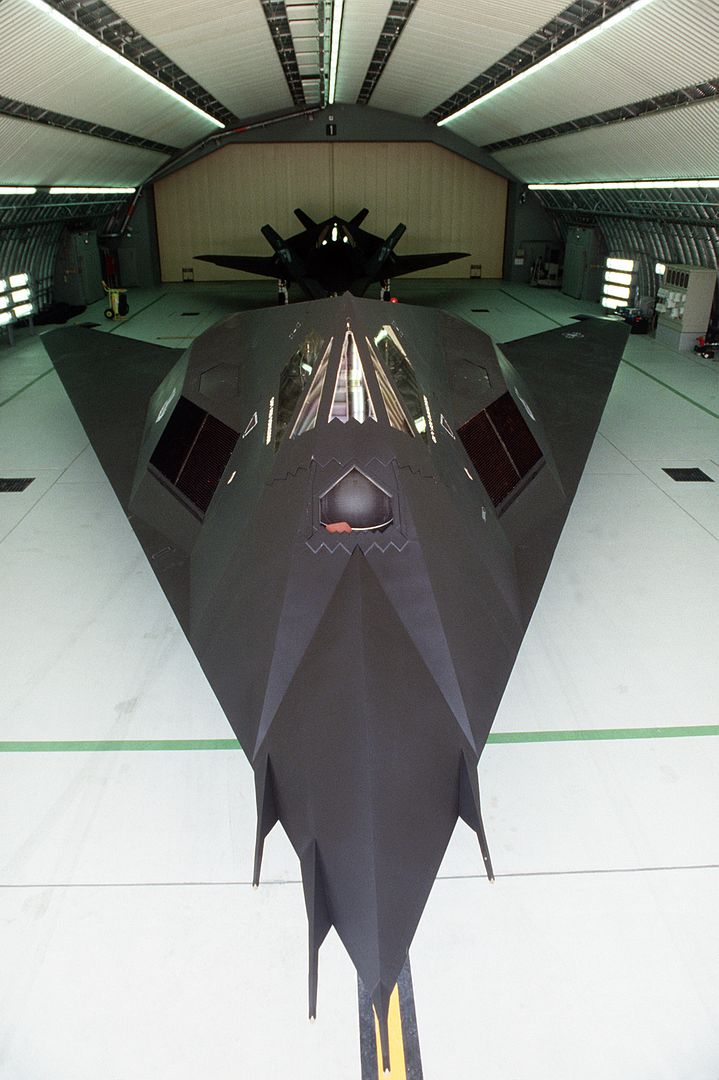
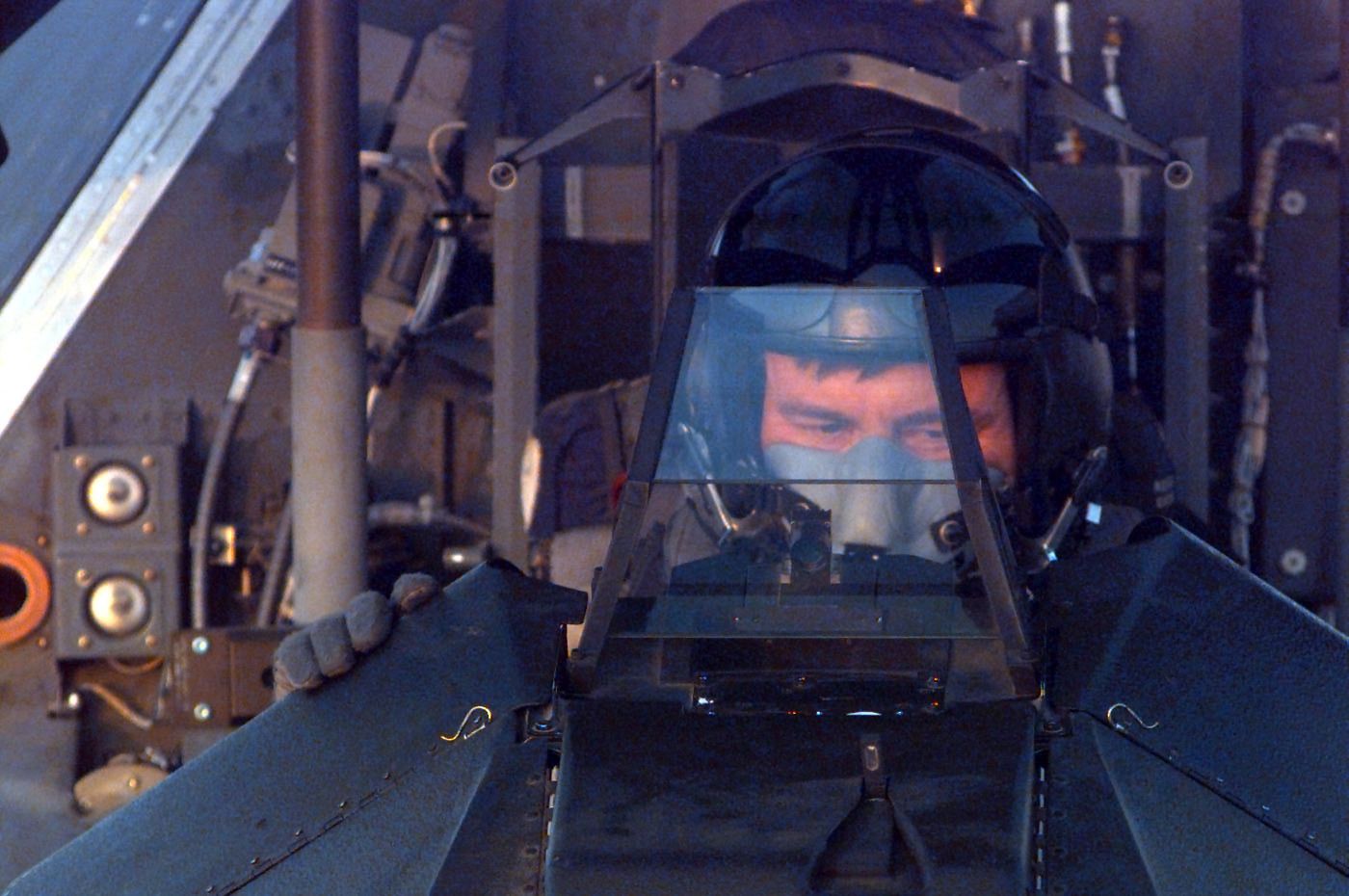
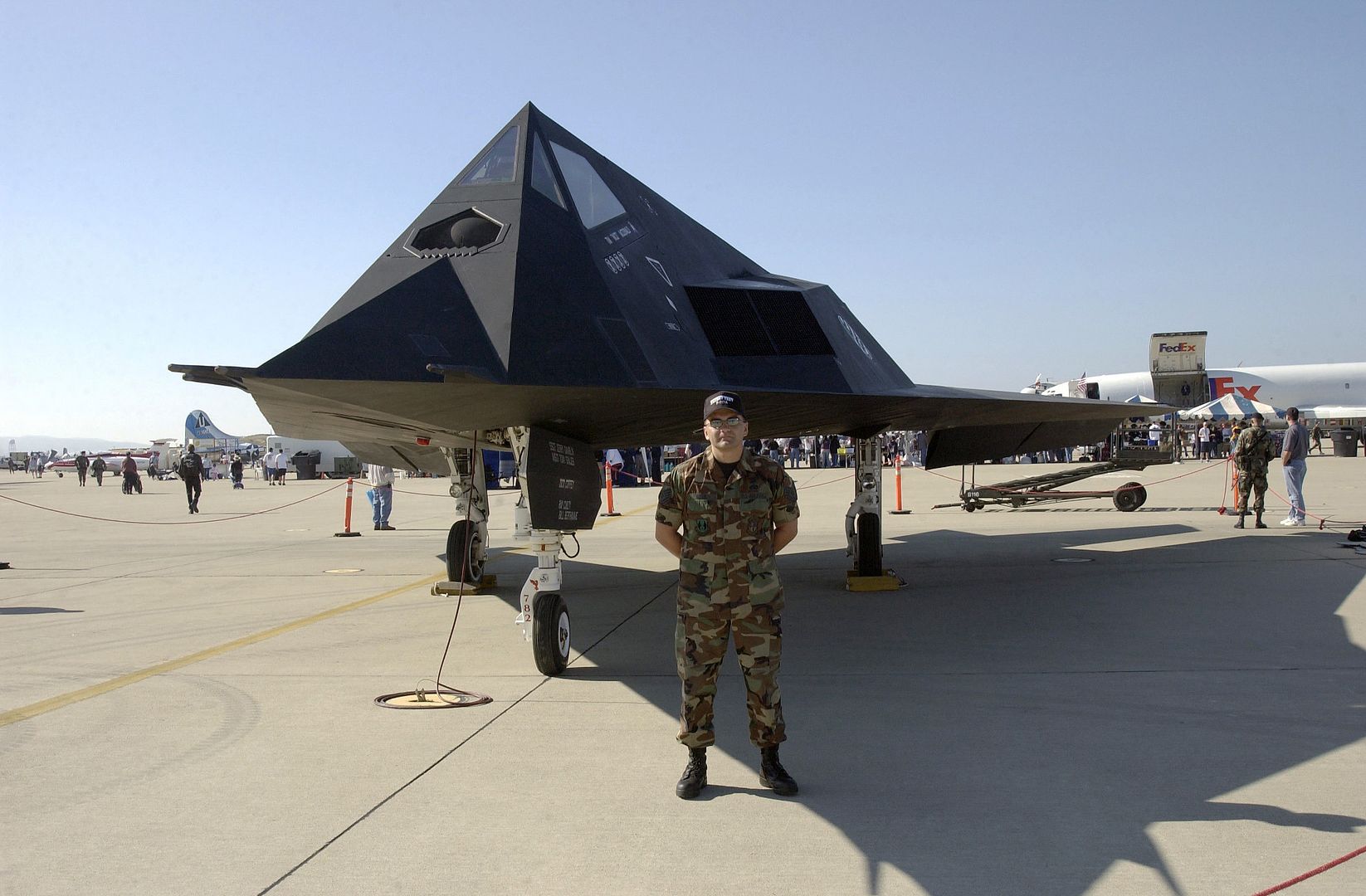

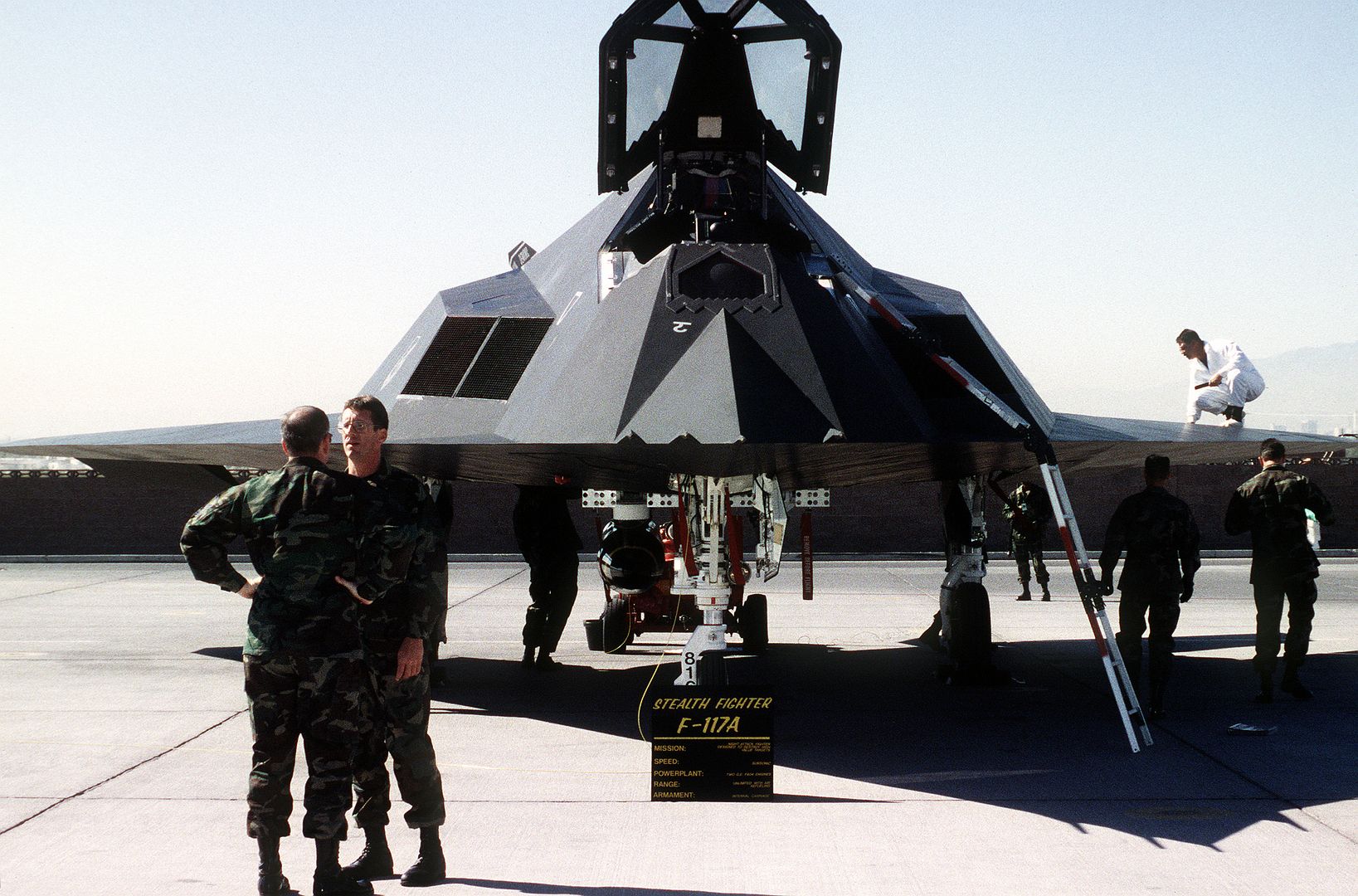
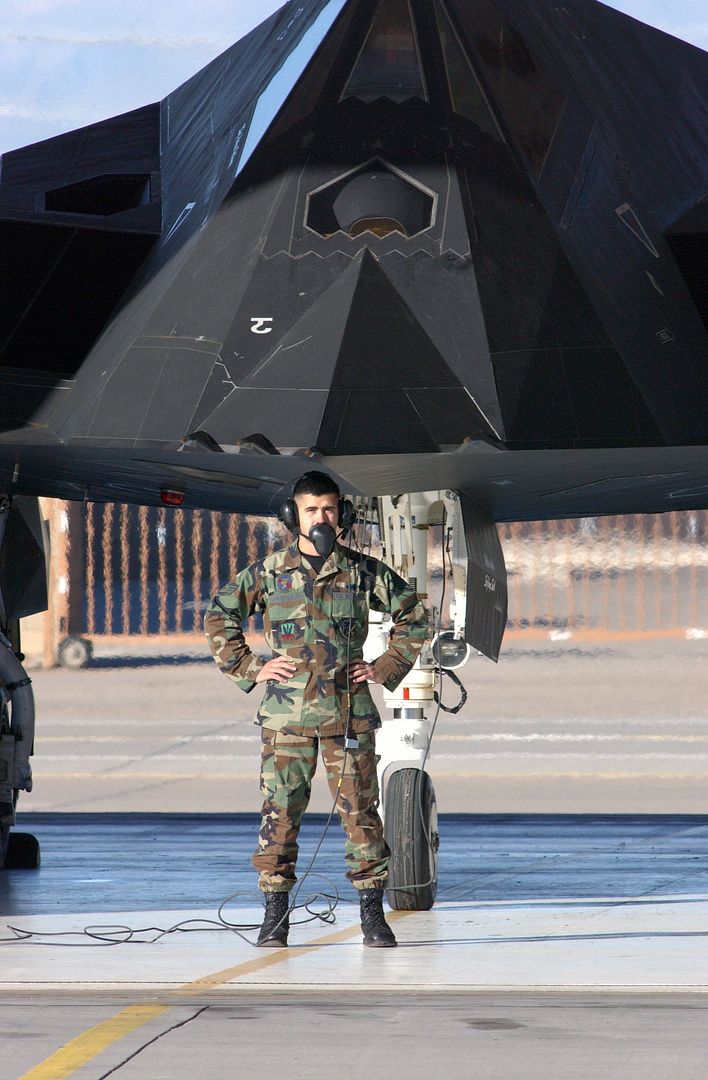
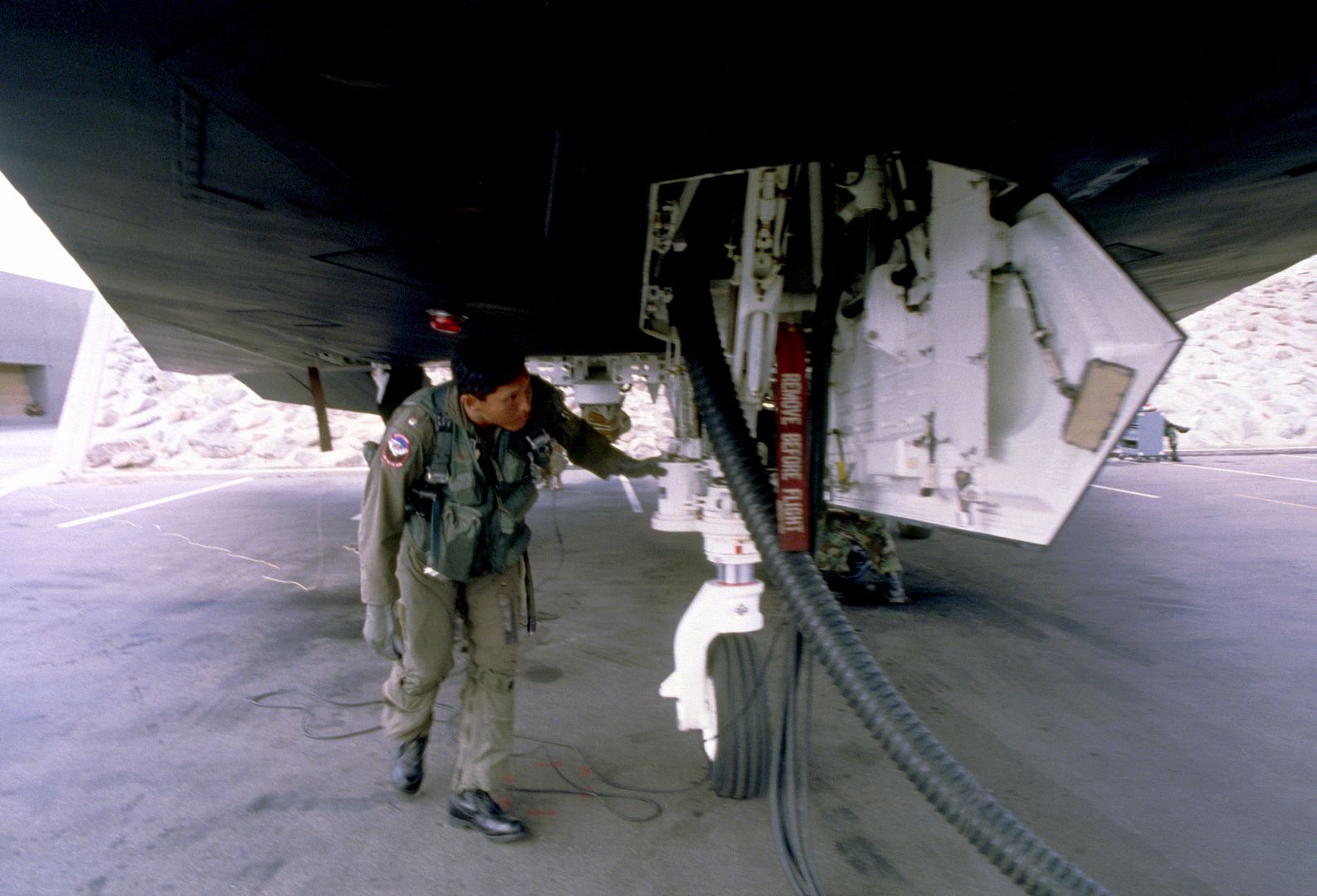
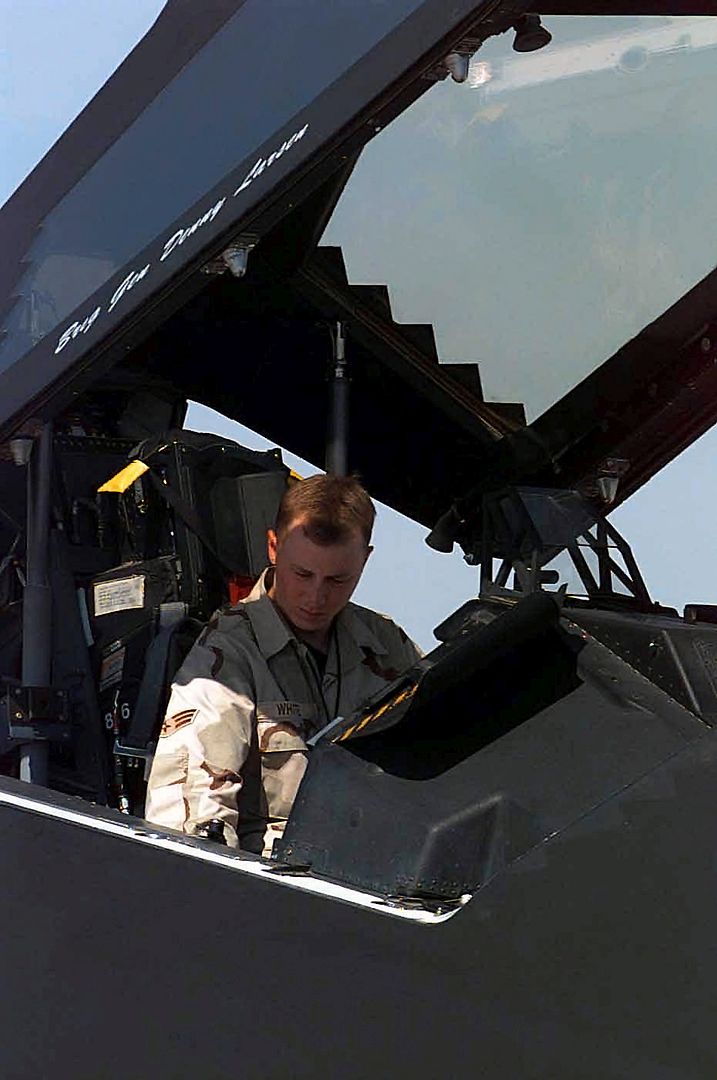
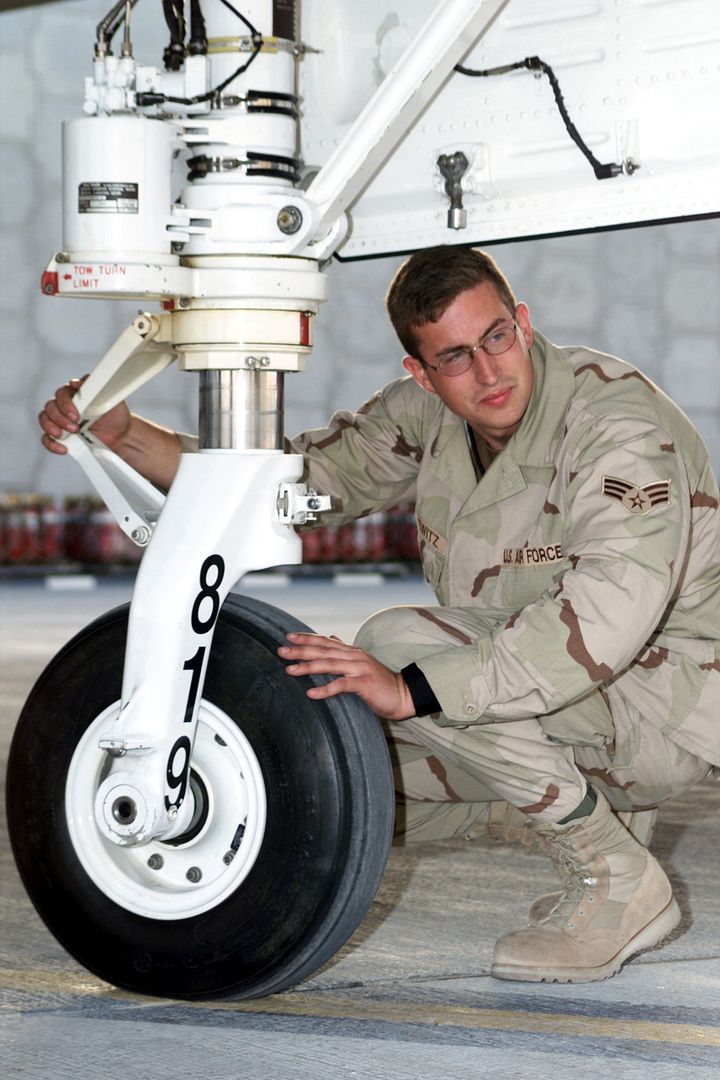

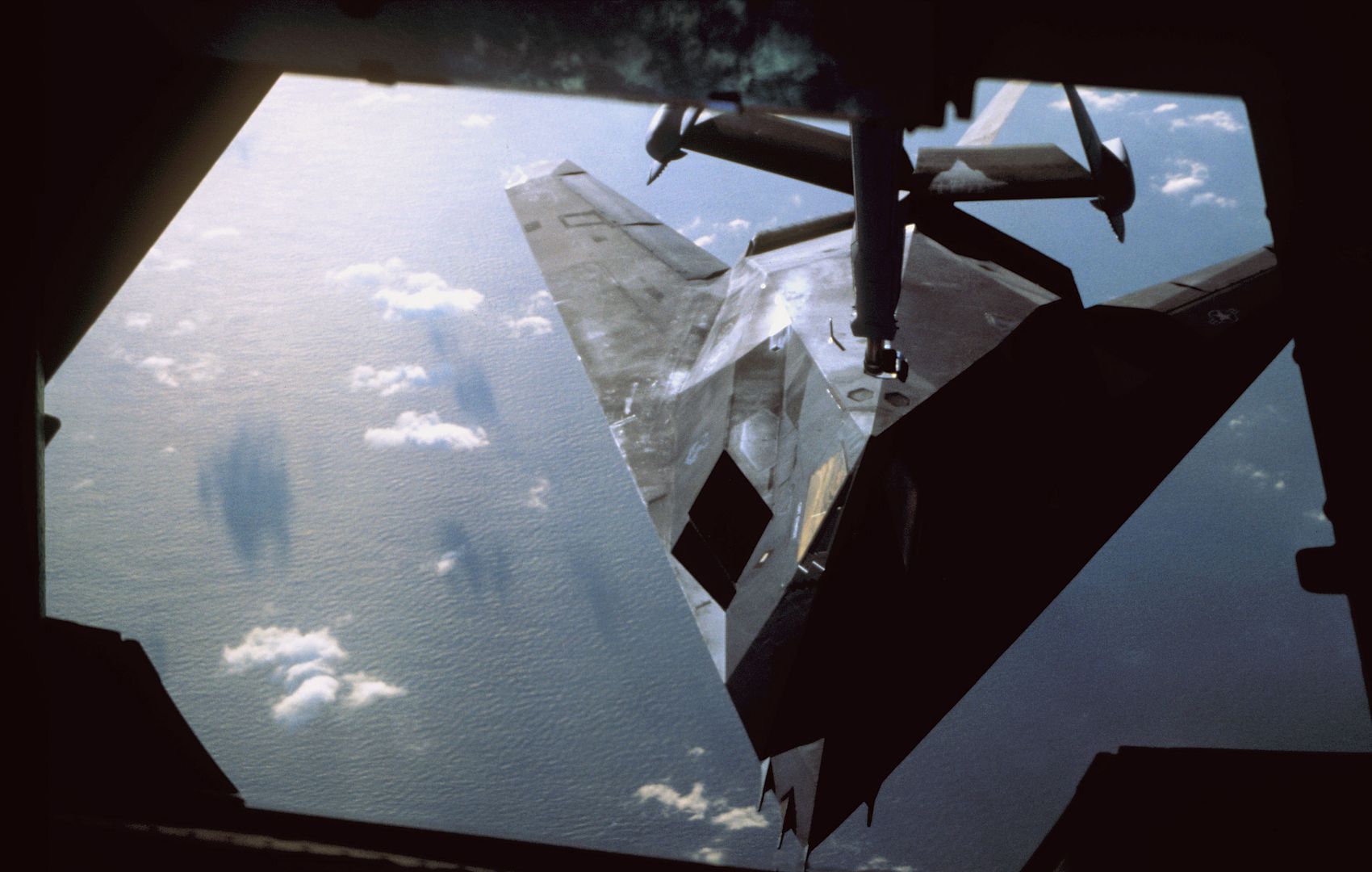
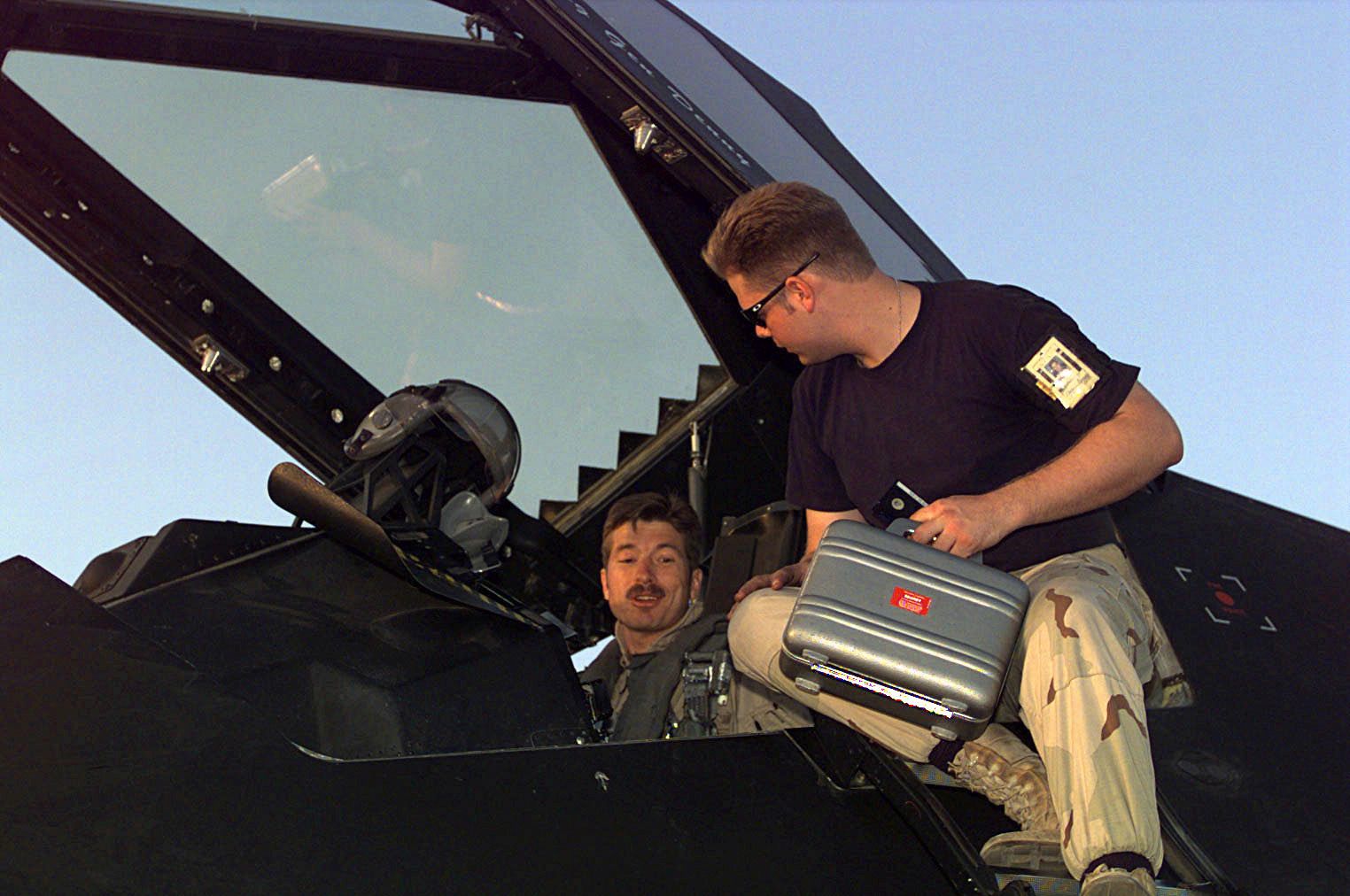
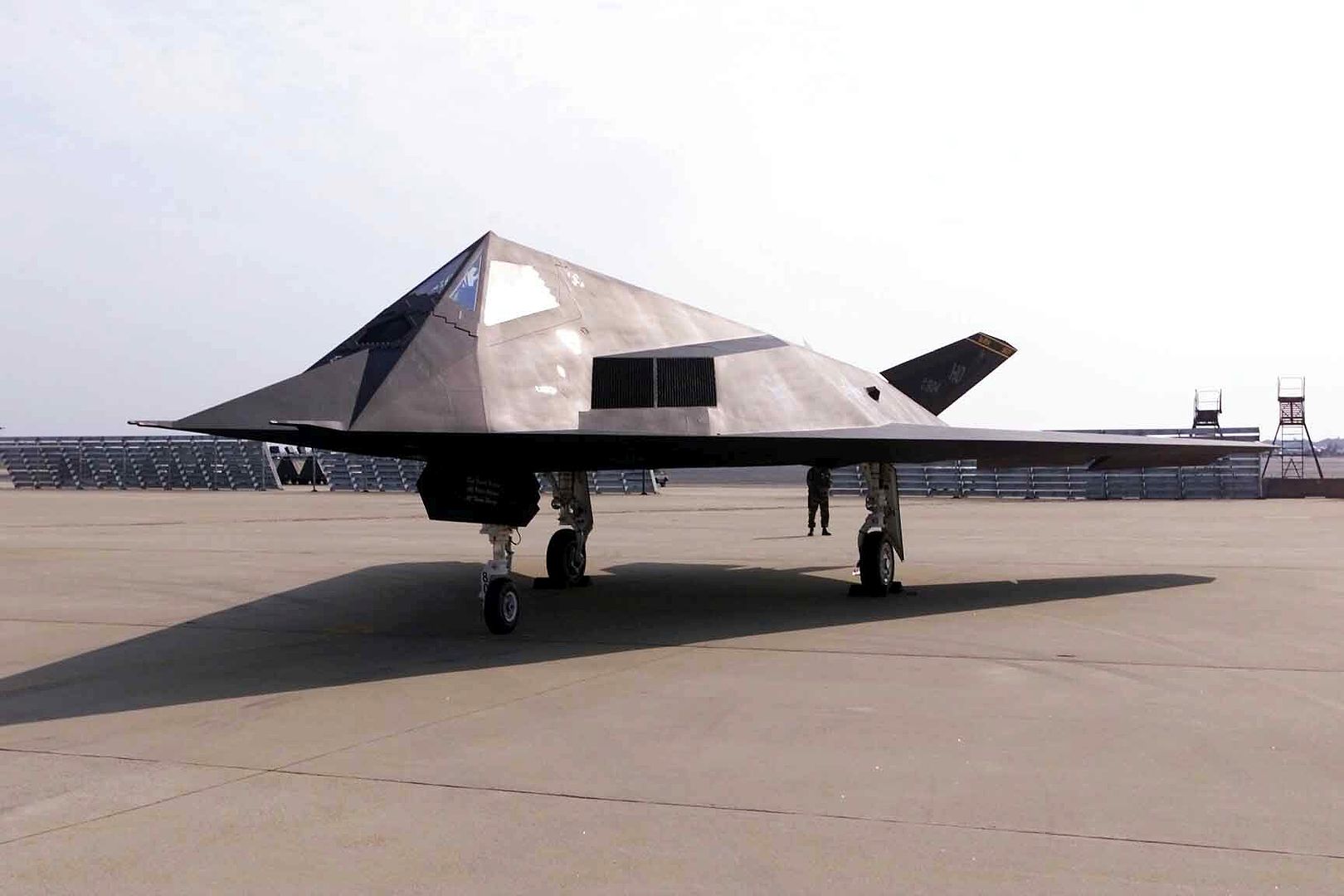
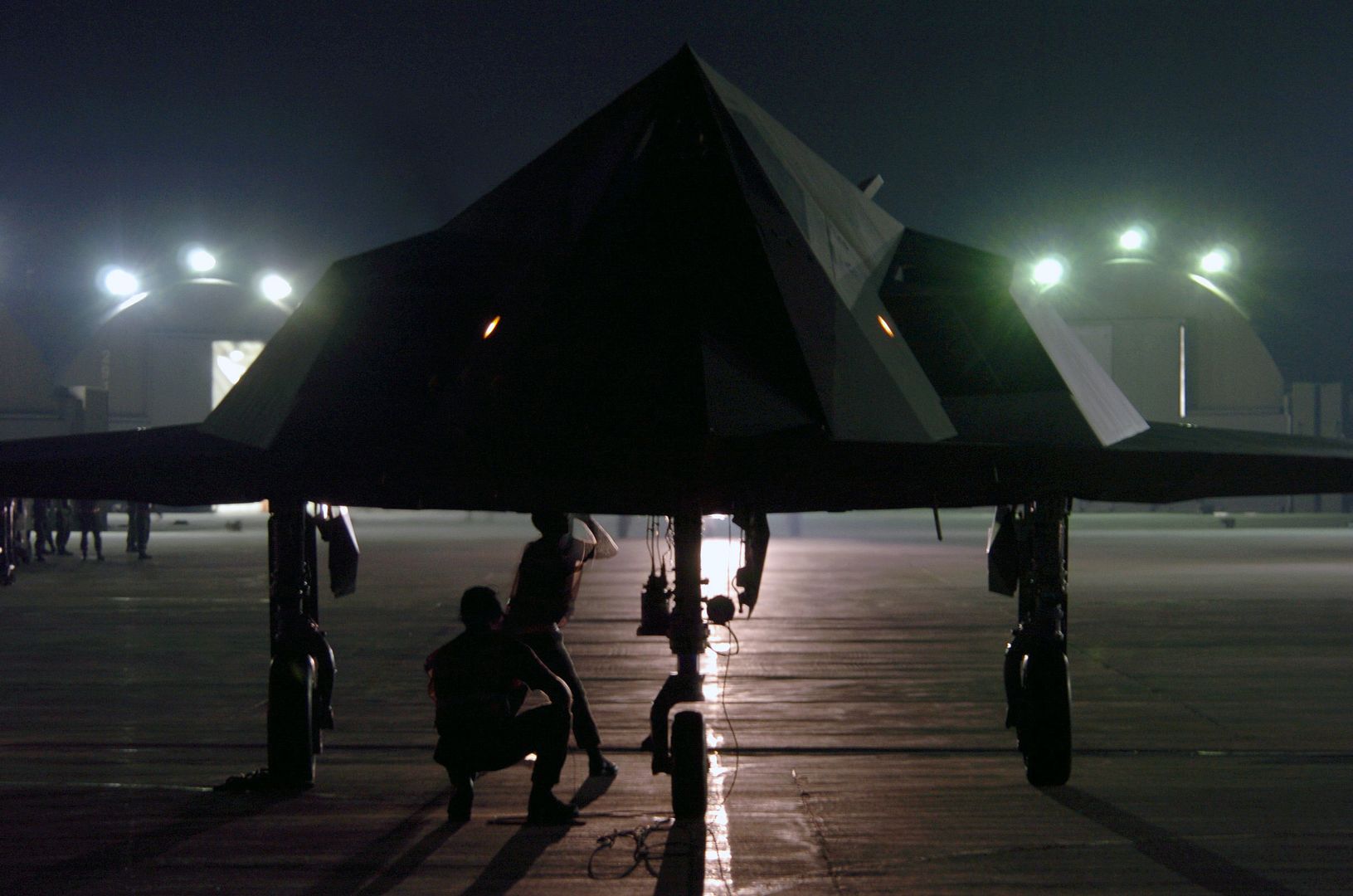
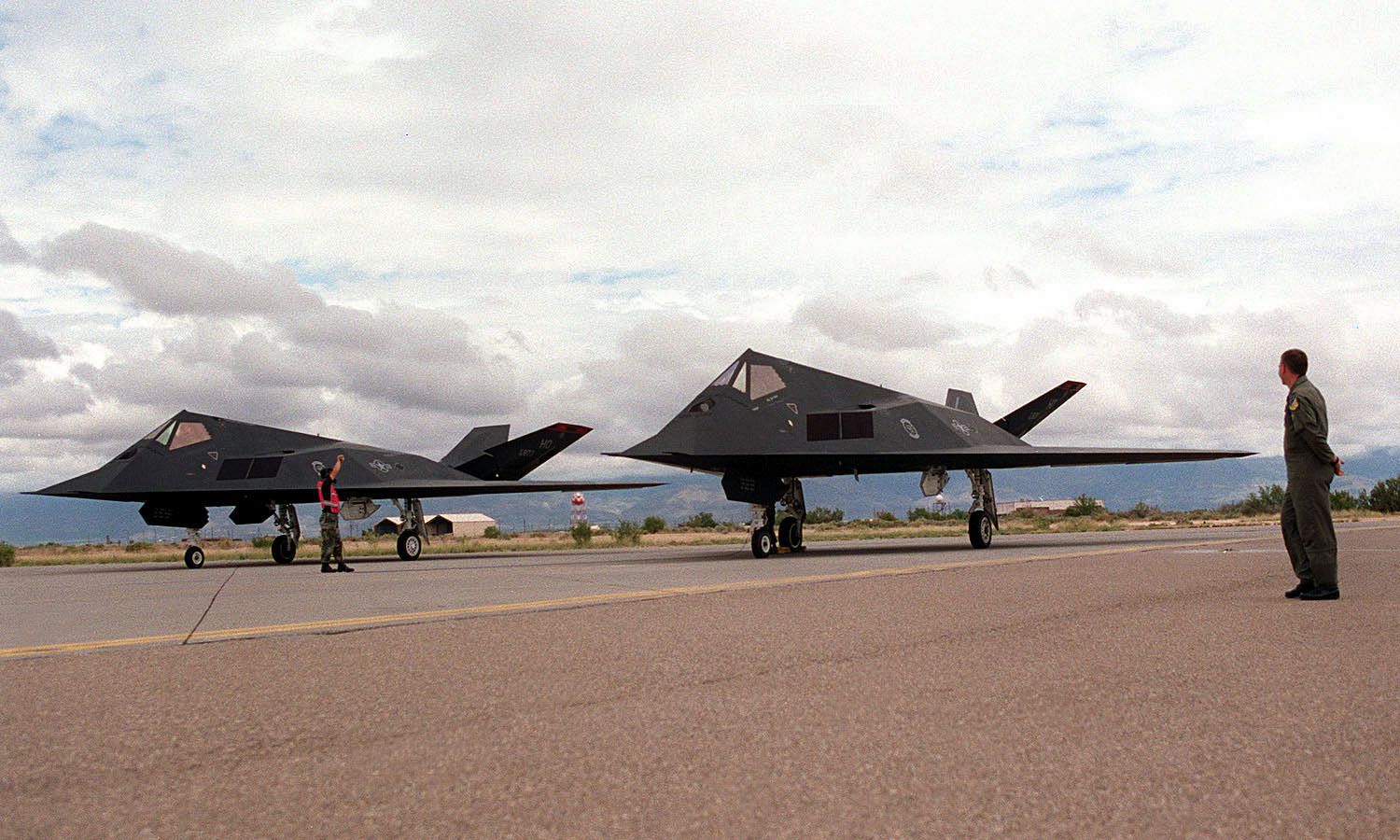
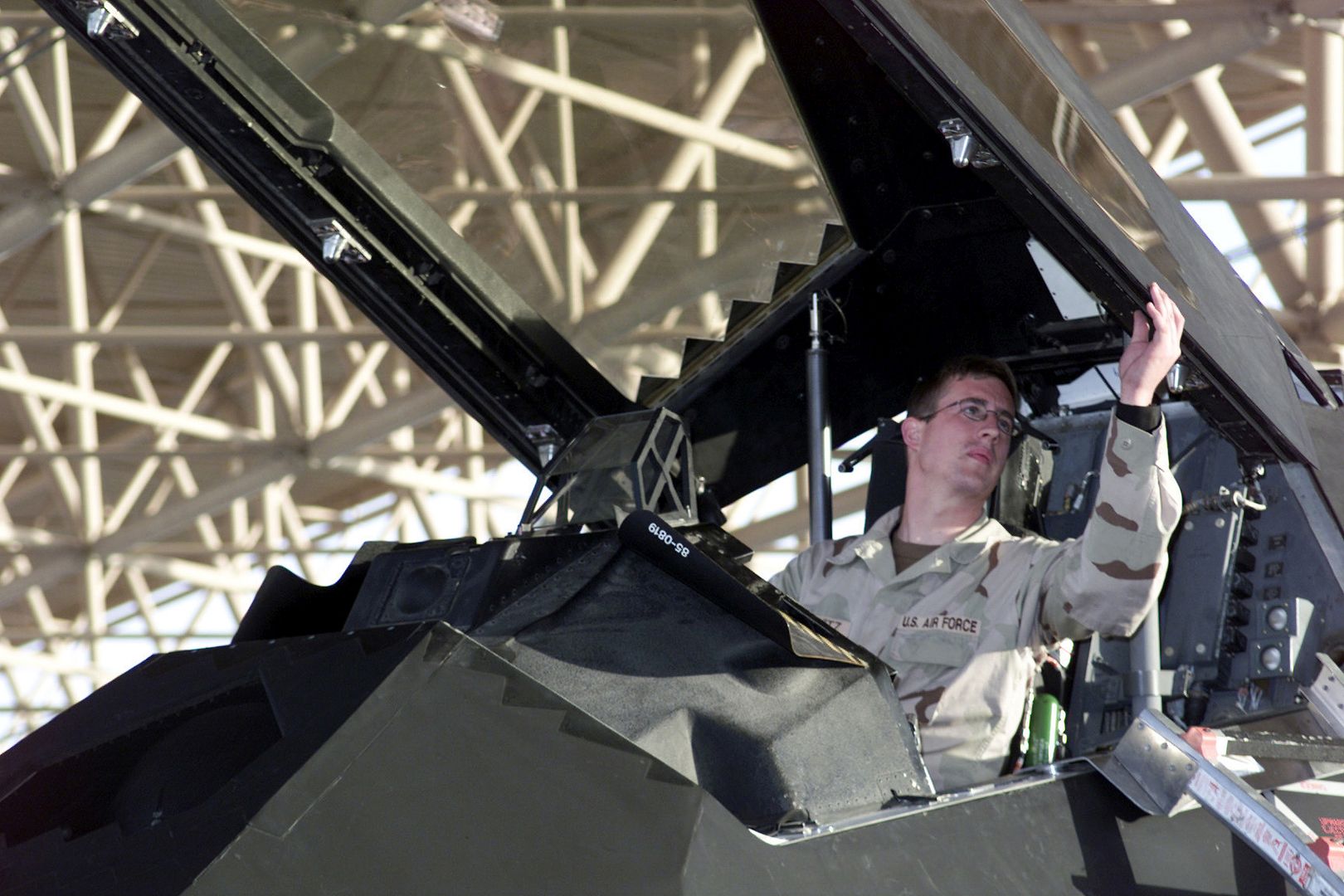

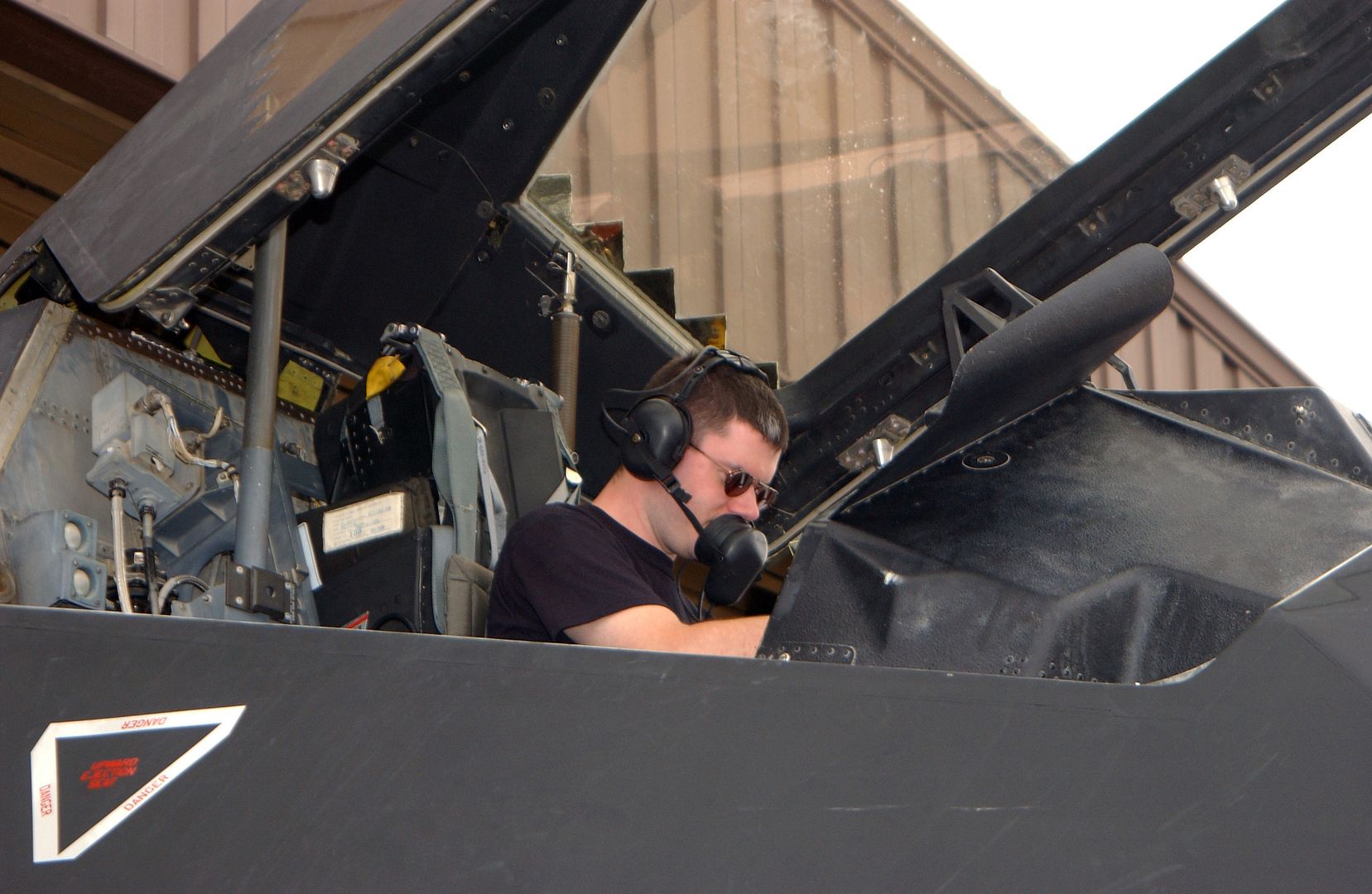
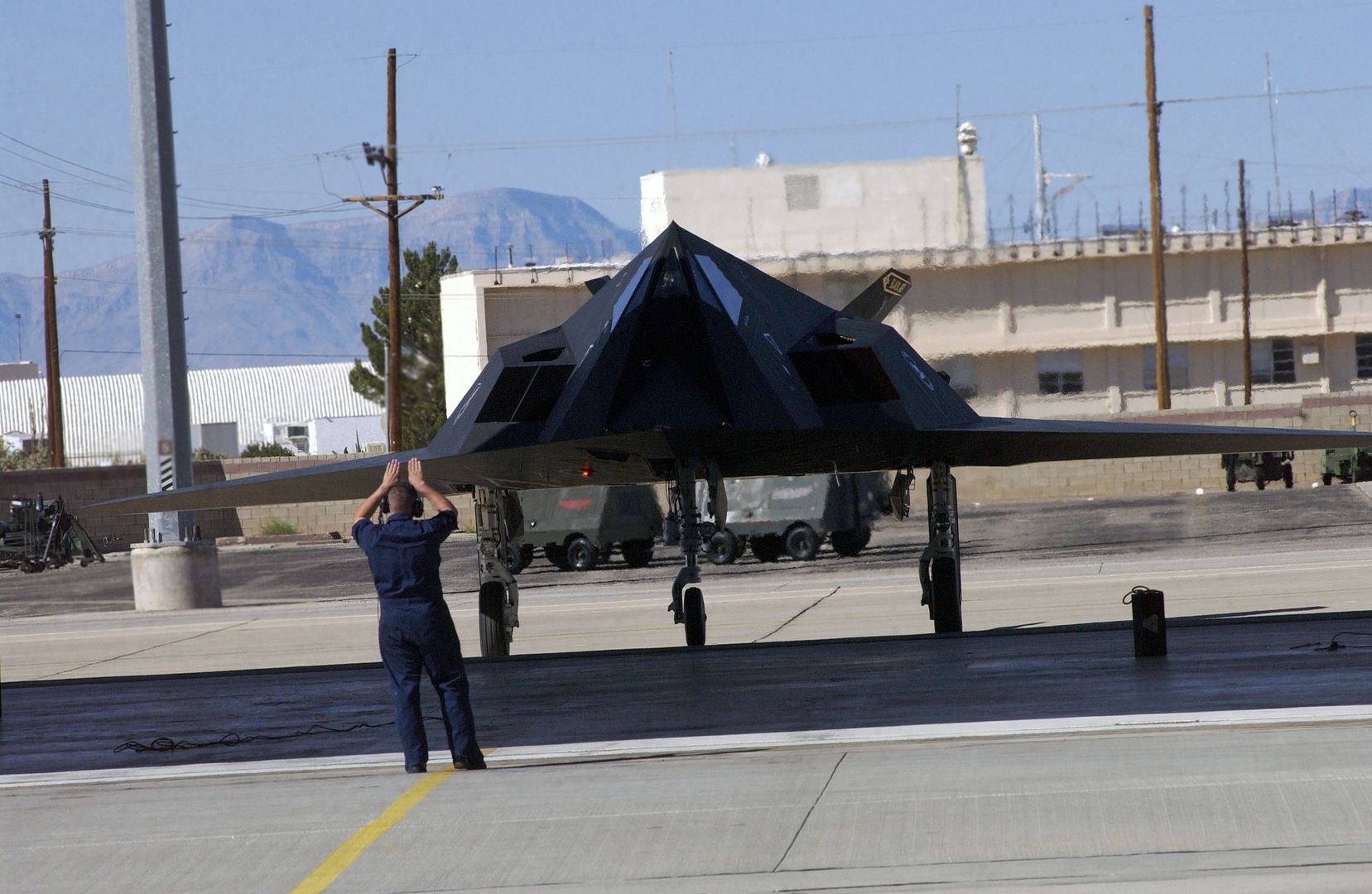

-
7 years agoSun Apr 15 2018, 03:34am
 Main Admin
Main Admin -
 Main Admin
Main Admin -
 Main Admin
Main Admin -
 Main Admin
Main Admin -
 Main Admin
Main Admin -
 Main Admin
Main Admin -
 Main AdminWASHINGTON (AFNS) -- It?s been 10 years since the F-117 Nighthawk retired, an aircraft so secret Nevada folklore labeled it a UFO.
Main AdminWASHINGTON (AFNS) -- It?s been 10 years since the F-117 Nighthawk retired, an aircraft so secret Nevada folklore labeled it a UFO.
The Nighthawk pilots were known by the call sign ?Bandit,? each earning their number with their first solo flight. Some of the maintainers were also given a call sign, said Wayne Paddock, a former F-117 maintainer currently stationed at Holloman Air Force Base, New Mexico.
?The people who maintained the coatings on the aircraft, radar absorbent material were classified as material application and repair specialists (MARS). MARS morphed into Martians,? Paddock said ?MARS was a shred out from the structural repair/corrosion control career field.?
The technology for the F-117 was developed in the 1970s as a capability for attacking high value targets without being detected by enemy radar. It had up to 5,000 pounds of assorted internal stores, two engines and could travel up to 684 mph.
It was the first airplane designed and built as a low-observable, stable and therefore precise platform, said Yancy Mailes, director of the history and museums program for Air Force Materiel Command at Wright-Patterson AFB, Ohio, and a former F-117 maintainer.
?It was the marriage of the GBU-27 to the F-117 that had a laser designator in its nose that made it such a precise, deadly platform,? Mailes said. ?It was best demonstrated during Operation Desert Storm when pilots snuck into Iraq and dropped weapons down the elevator shaft of a central communications building in Iraq.?
The first Nighthawk flew June 18, 1981, and the original F-117A unit, the 4450th Tactical Group (renamed the 37th Tactical Fighter Wing in October 1989), achieved initial operating capability in October 1983. The Nighthawk originally saw combat during Operation Just Cause in 1989, when two F-117s from the 37th TFW attacked military targets in Panama. The aircraft was also in action during Operation Desert Shield.
Retired Col. Jack Forsythe, remembers being excited when he initially flew a Nighthawk while stationed at Holloman AFB in 1995.
?It was a unique experience,? he said. ?It?s probably the same feeling that a lot of our (single seat) F-22 (Raptor) and F-35 (Lightning II) pilots feel today.?
After 25 years of service, the Nighthawk retired April 22, 2008. Forsythe led the four-ship formation to Palmdale, California, where Lockheed Martin staff said their farewells.
?We lowered the bomb doors of each aircraft and people signed their names to the doors,? Forsythe said. ?It was really just kind of neat; they had designed it, built it and maintained it for these 25 years, so it really hit home ? the industry and Air Force partnership that made the Nighthawk great. I think the four of us were just really struck by that and have some really great memories of that flight.?
The American flag was painted on the entire underside of his F-117 by the maintainers to help celebrate American airpower.
?I think we all recognized that this was something historic,? he said. ?We retired an airplane that people still reference today. We really understood that so it was a sentimental flight to say the least. It was a great weapon system, very stable and easy to fly. It?s still a memorable experience.?
Four F-117A Nighthawk's perform one last flyover at the Sunset Stealth retirement ceremony at Holloman AFB, N.M., April 21, 2008. The F-117A flew under the flag of the 49th Fighter Wing at Holloman Air Force Base from 1992 to its retirement in 2008. (U.S. Air Force photo by Staff Sgt. Jason Colbert)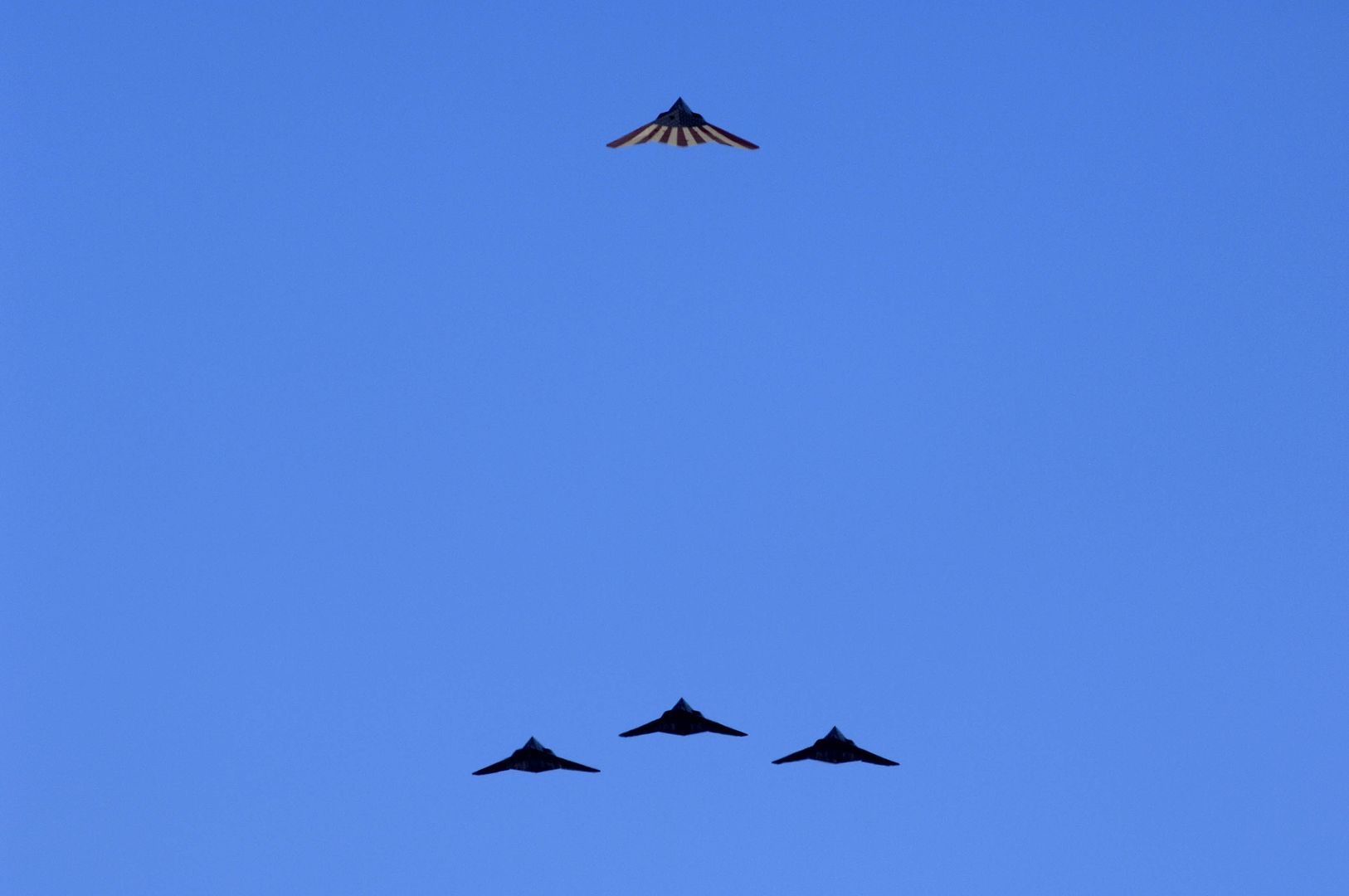
-
 Main AdminAn F-117 Nighthawk lands for the first time at the Fresno Yosemite International Airport, Sept 13, 2021, to conduct training missions with the local Air National Guard unit. Two F-117 Nighthawks are participating in dissimilar air combat training missions this week along with F-15 pilots from the 144th Fighter Wing in Fresno, Calif. (Air National Guard photo by Capt. Jason Sanchez)
Main AdminAn F-117 Nighthawk lands for the first time at the Fresno Yosemite International Airport, Sept 13, 2021, to conduct training missions with the local Air National Guard unit. Two F-117 Nighthawks are participating in dissimilar air combat training missions this week along with F-15 pilots from the 144th Fighter Wing in Fresno, Calif. (Air National Guard photo by Capt. Jason Sanchez)
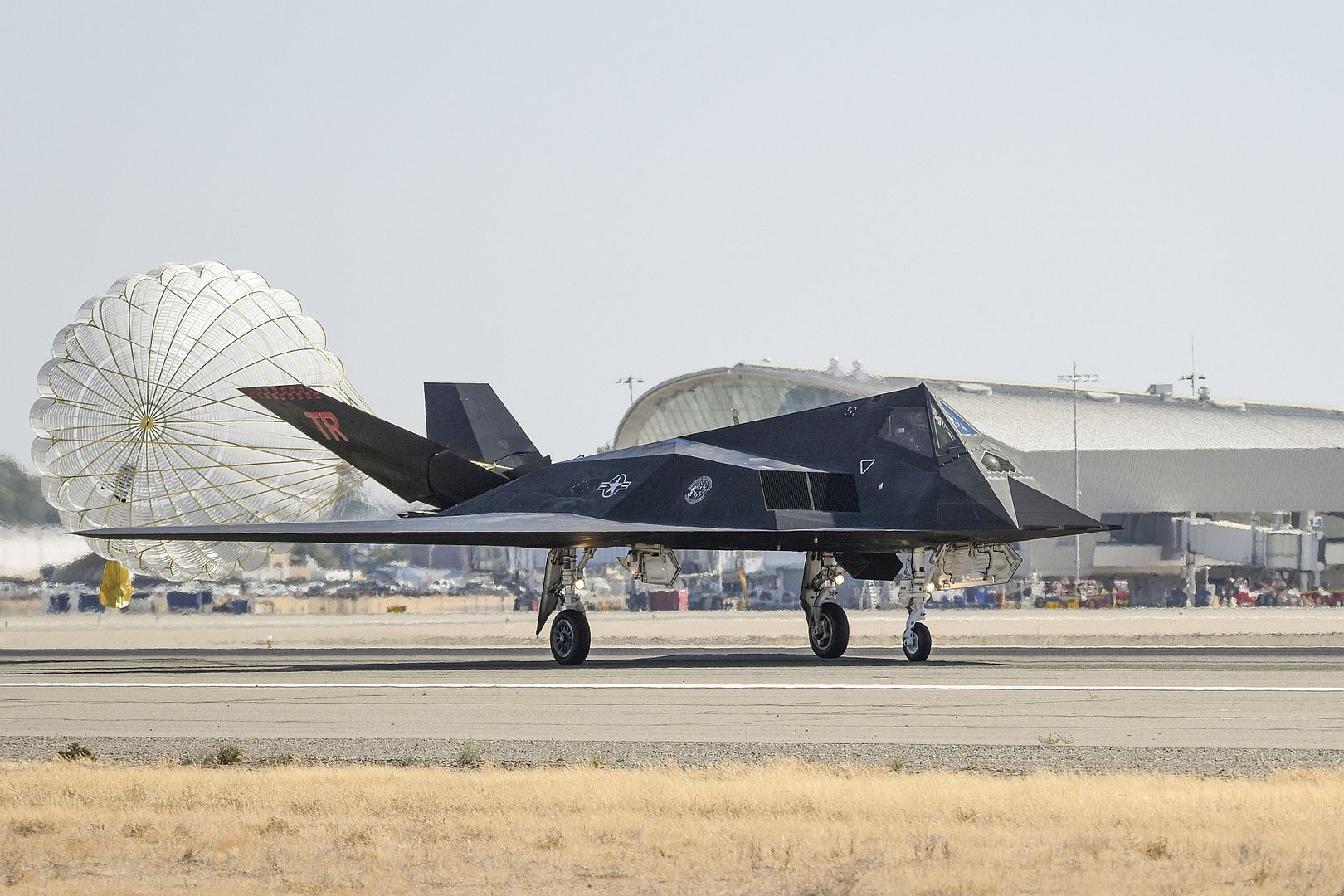
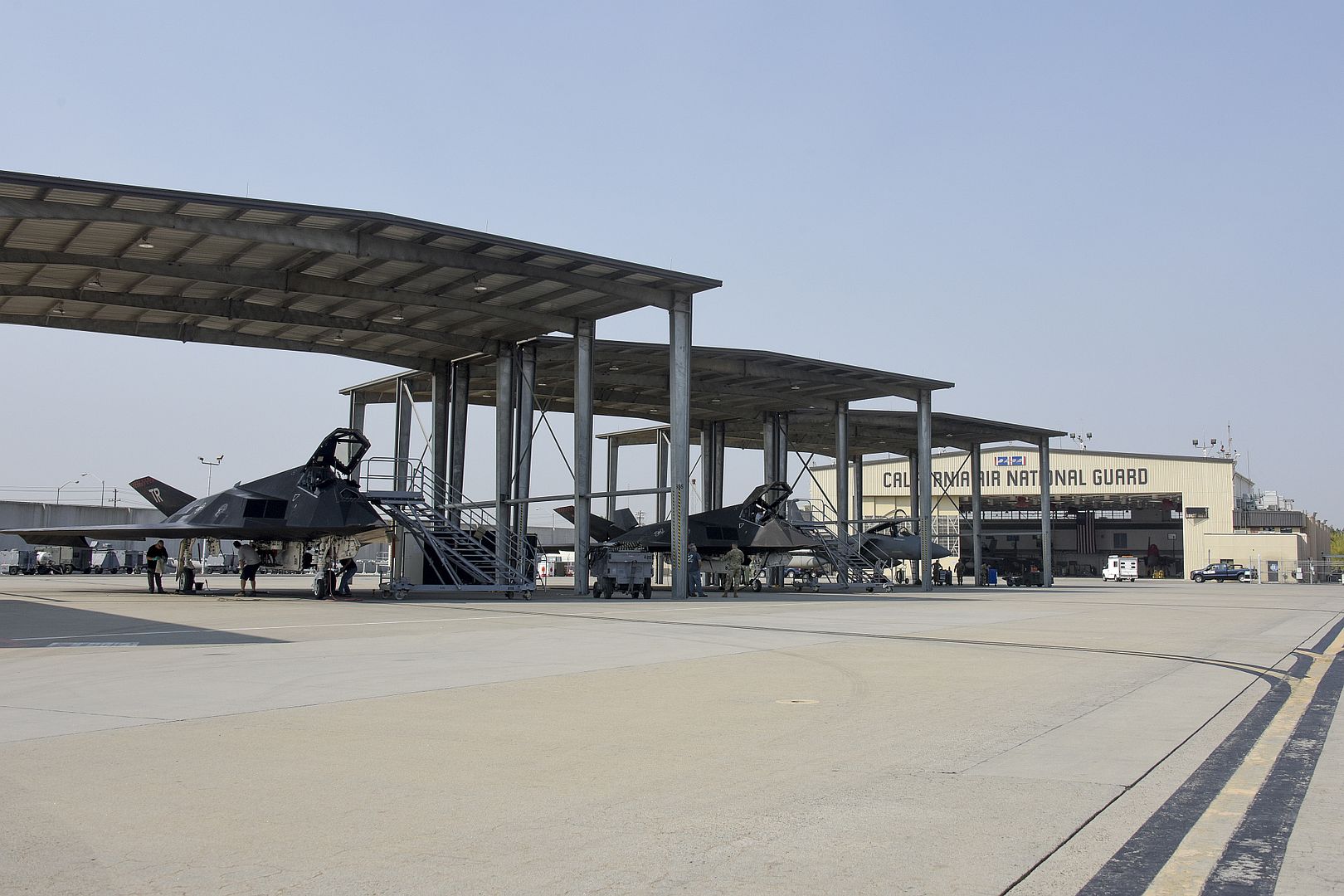
Post a reply
- Go to Previous topic
- Go to Next topic
- Go to Welcome
- Go to Introduce Yourself
- Go to General Discussion
- Go to Screenshots, Images and Videos
- Go to Off topic
- Go to Works in Progress
- Go to Skinning Tips / Tutorials
- Go to Skin Requests
- Go to IJAAF Library
- Go to Luftwaffe Library
- Go to RAF Library
- Go to USAAF / USN Library
- Go to Misc Library
- Go to The Ops Room
- Go to Made in Germany
- Go to Campaigns and Missions
- Go to Works in Progress
- Go to Juri's Air-Raid Shelter
- Go to Campaigns and Missions
- Go to Works in Progress
- Go to Skinpacks
- Go to External Projects Discussion
- Go to Books & Resources
